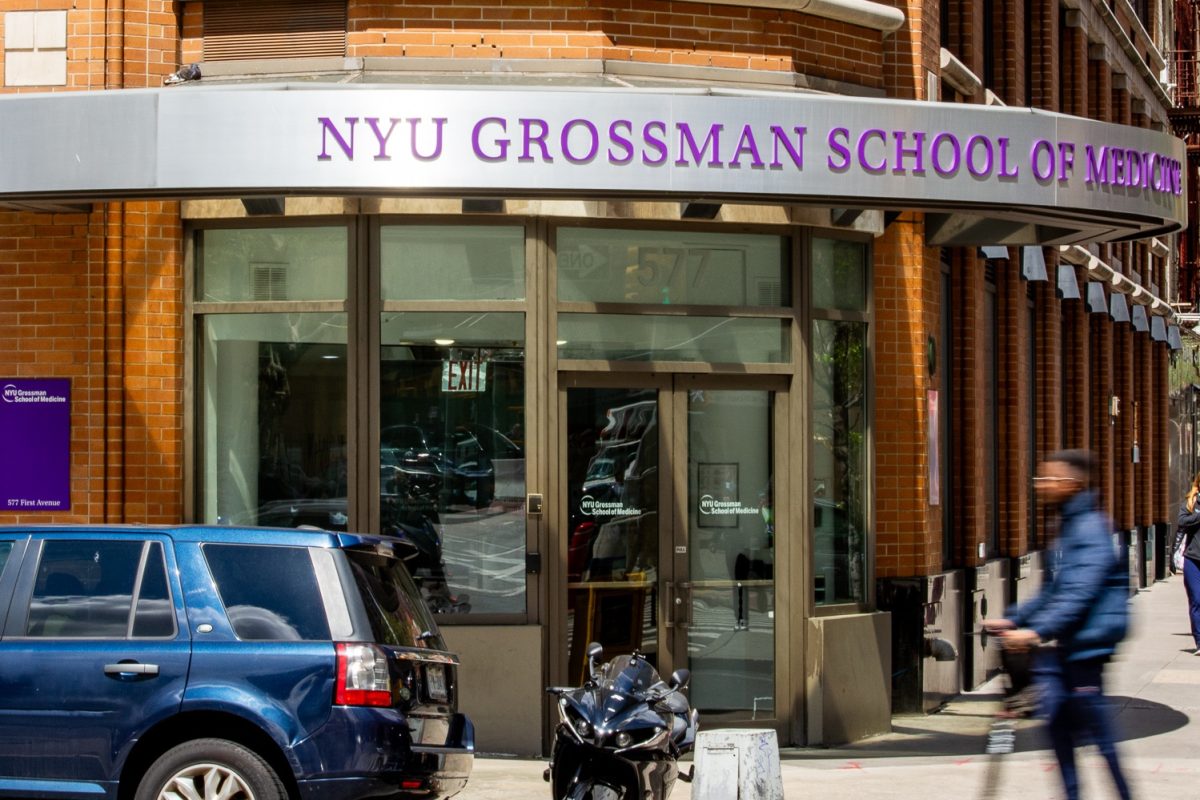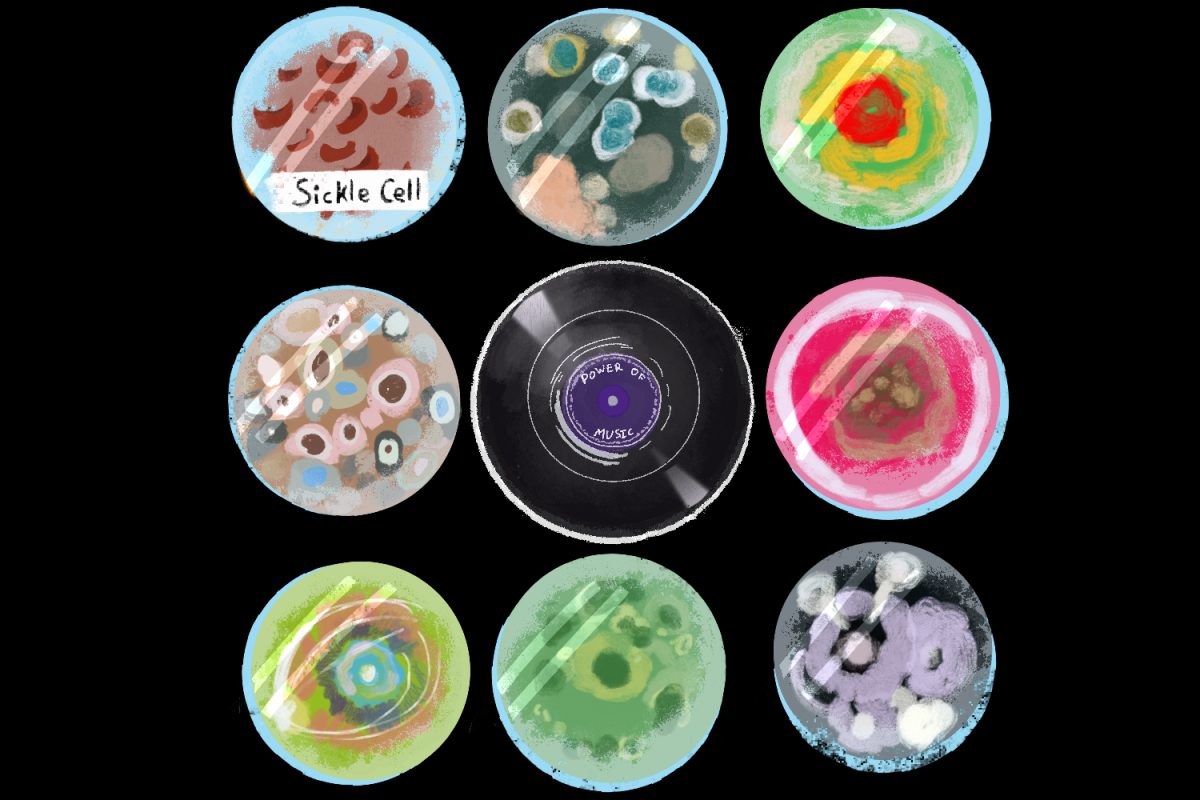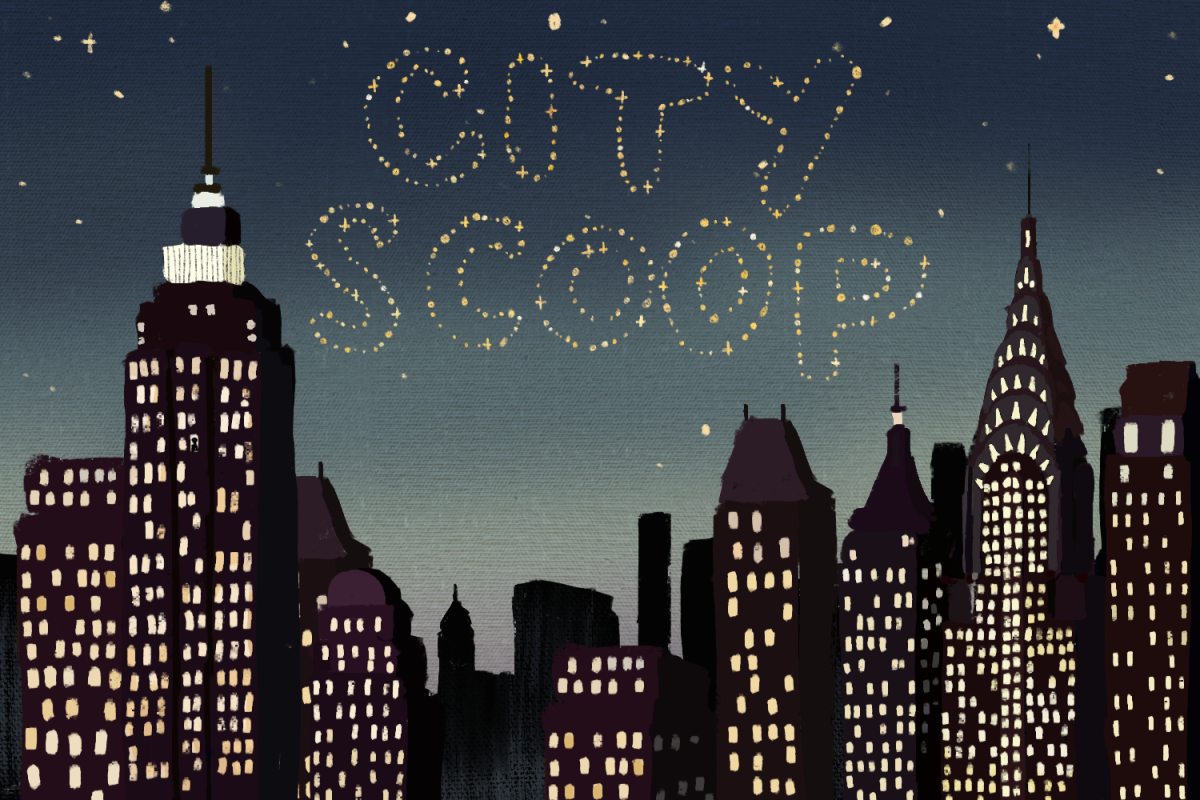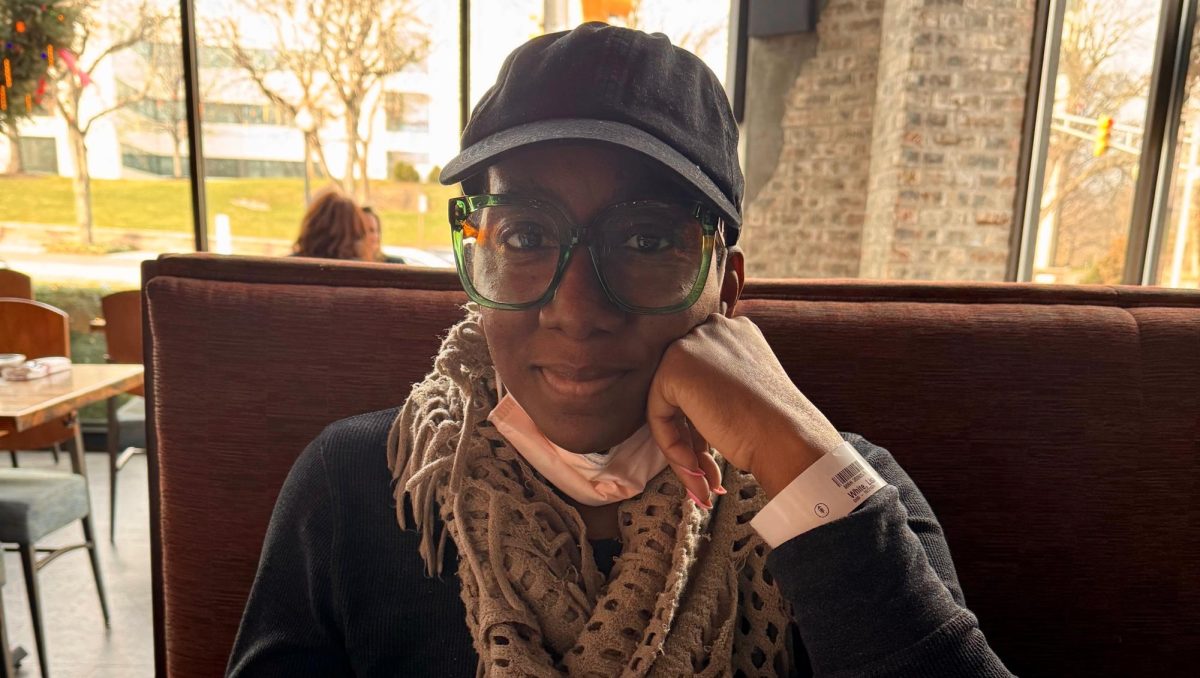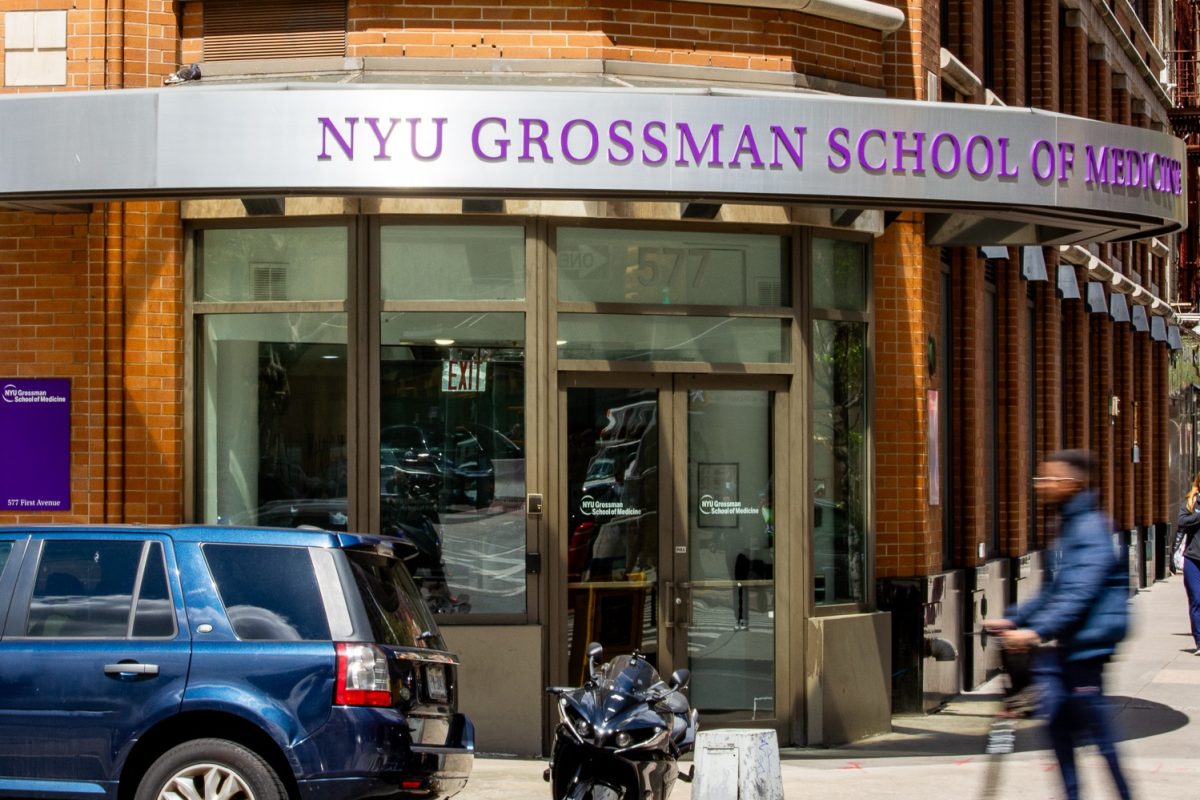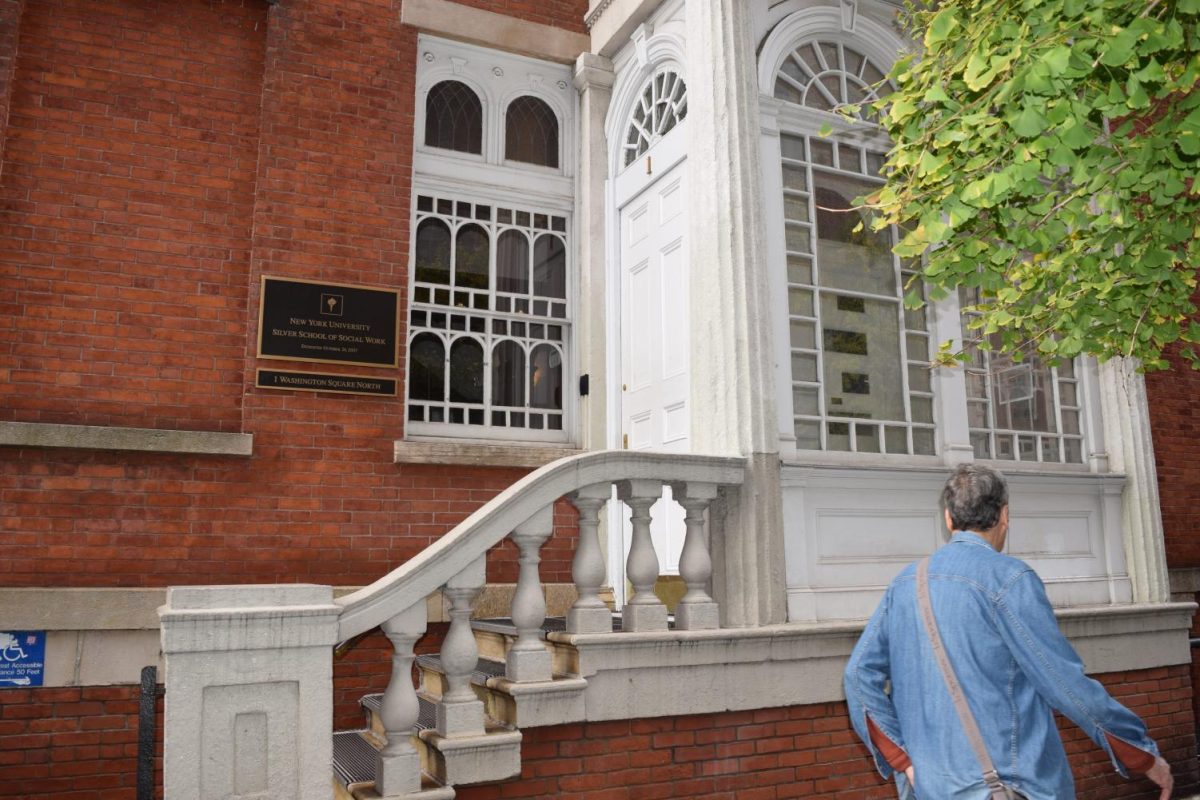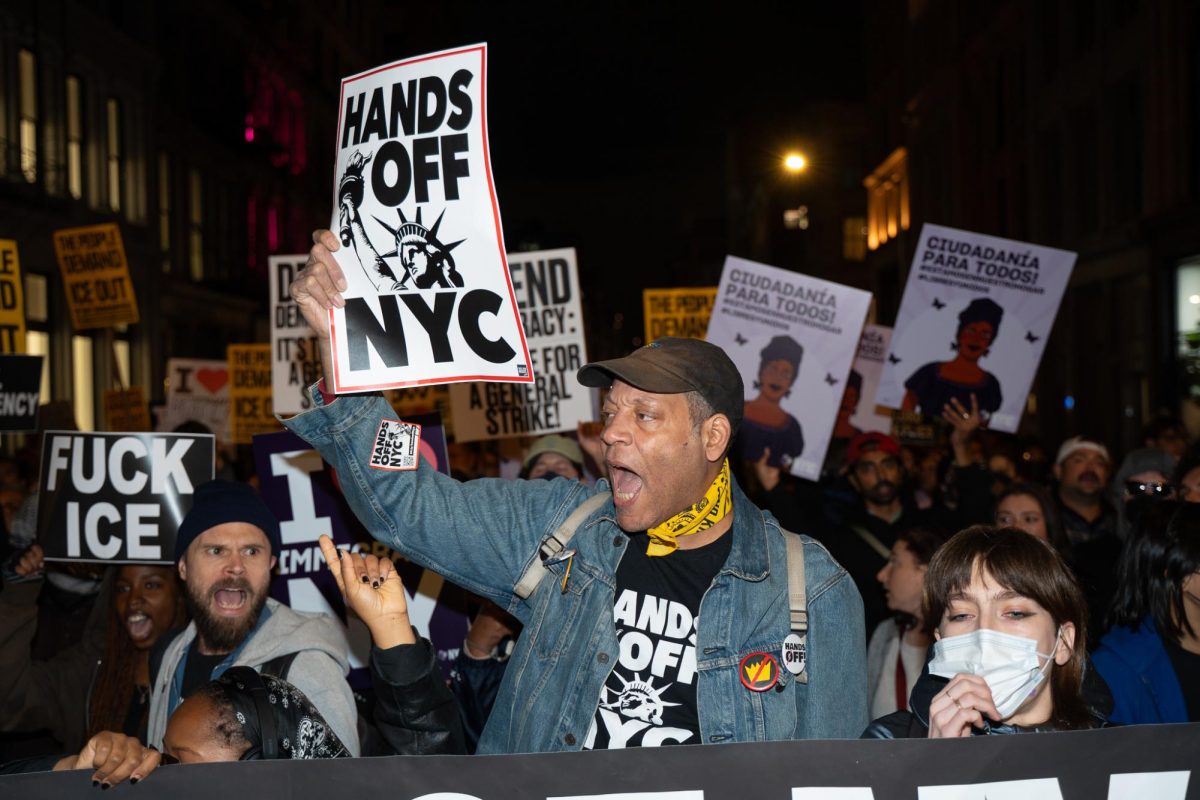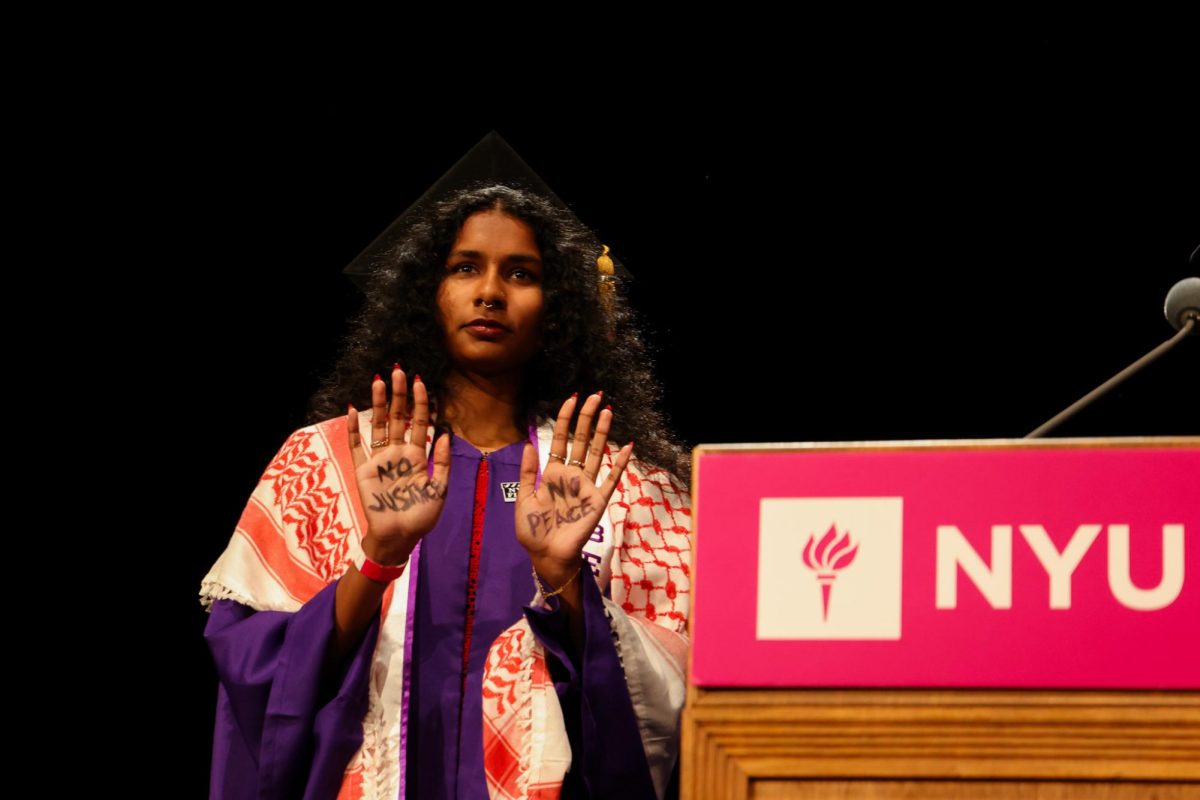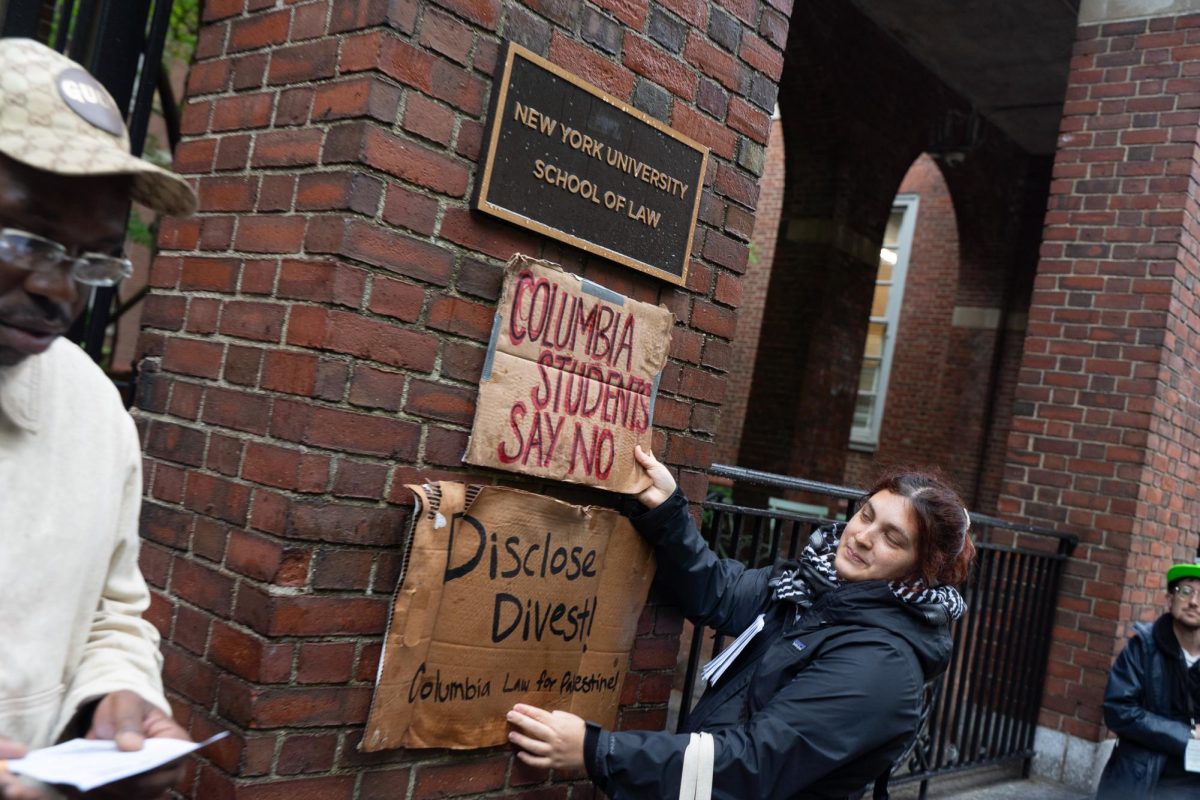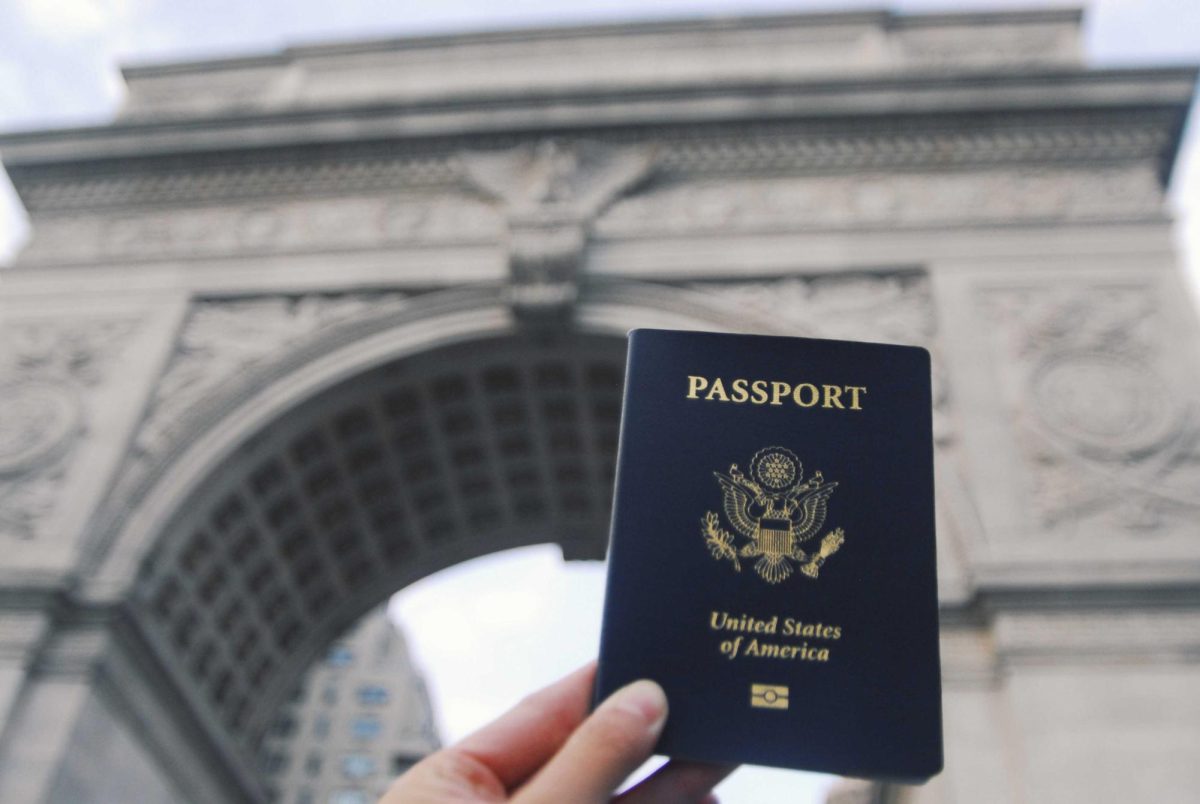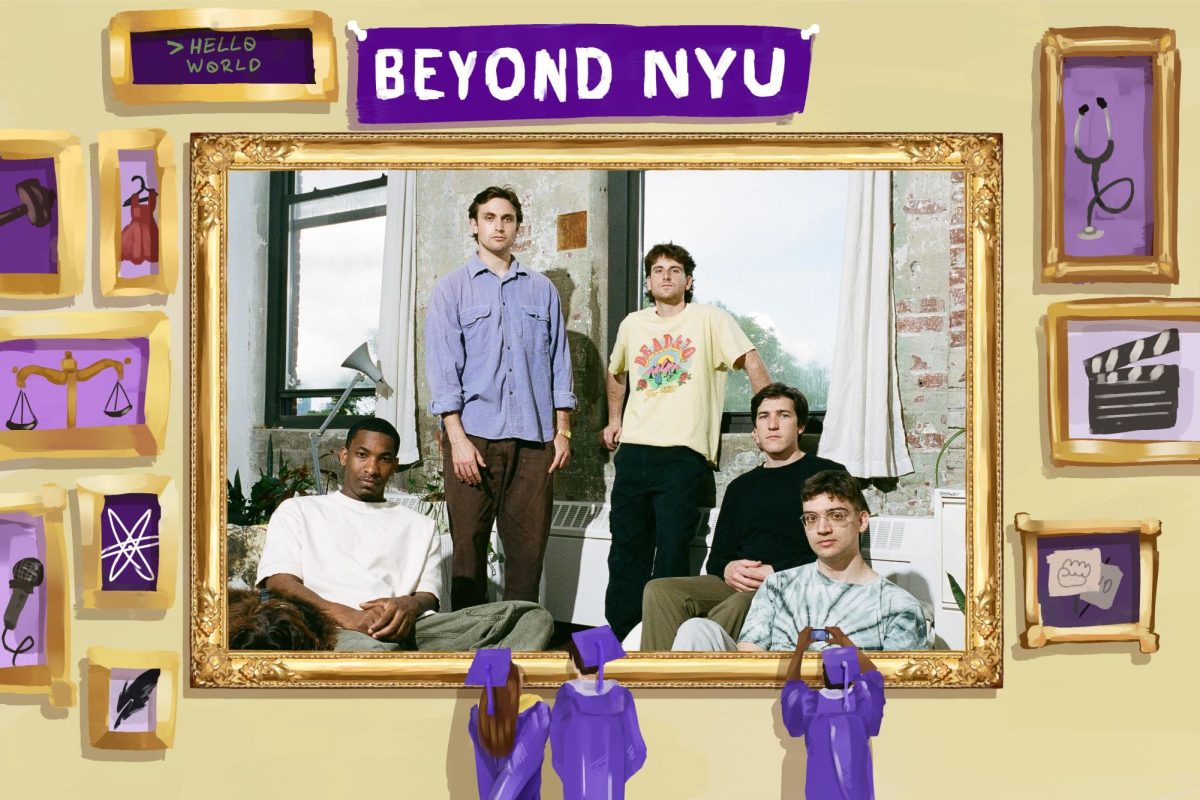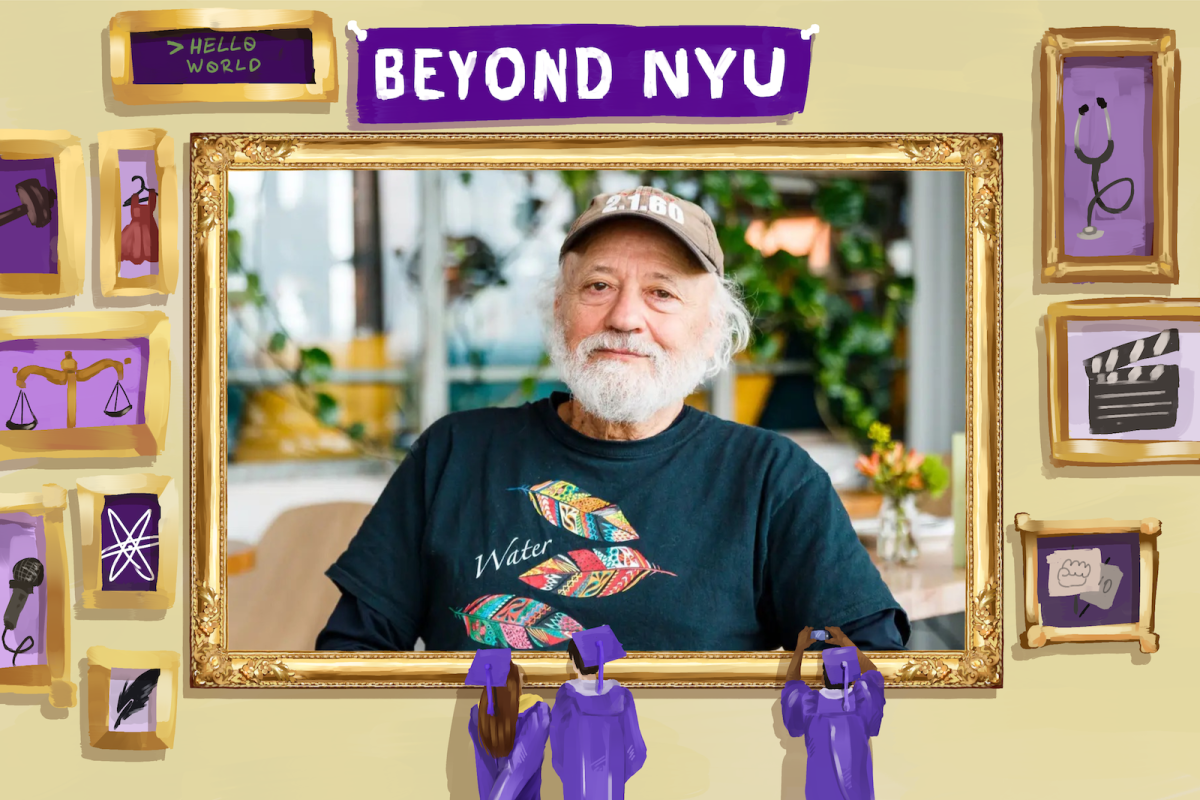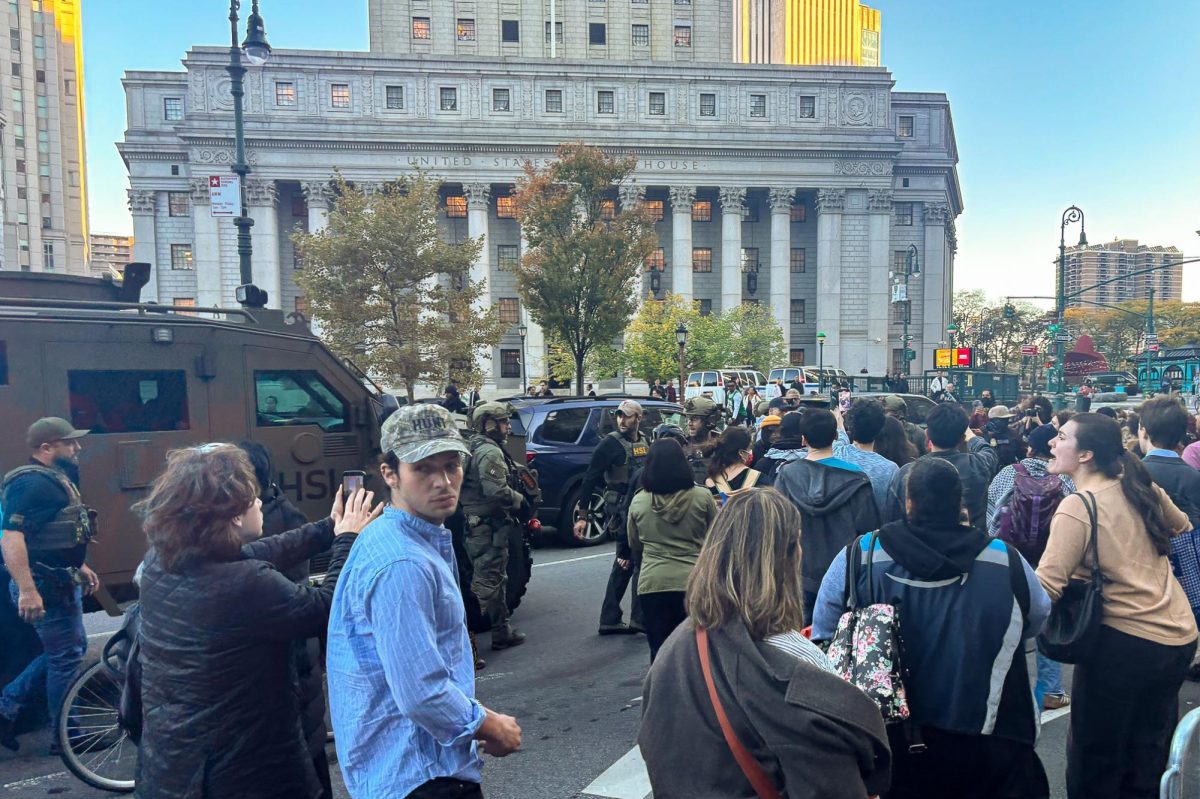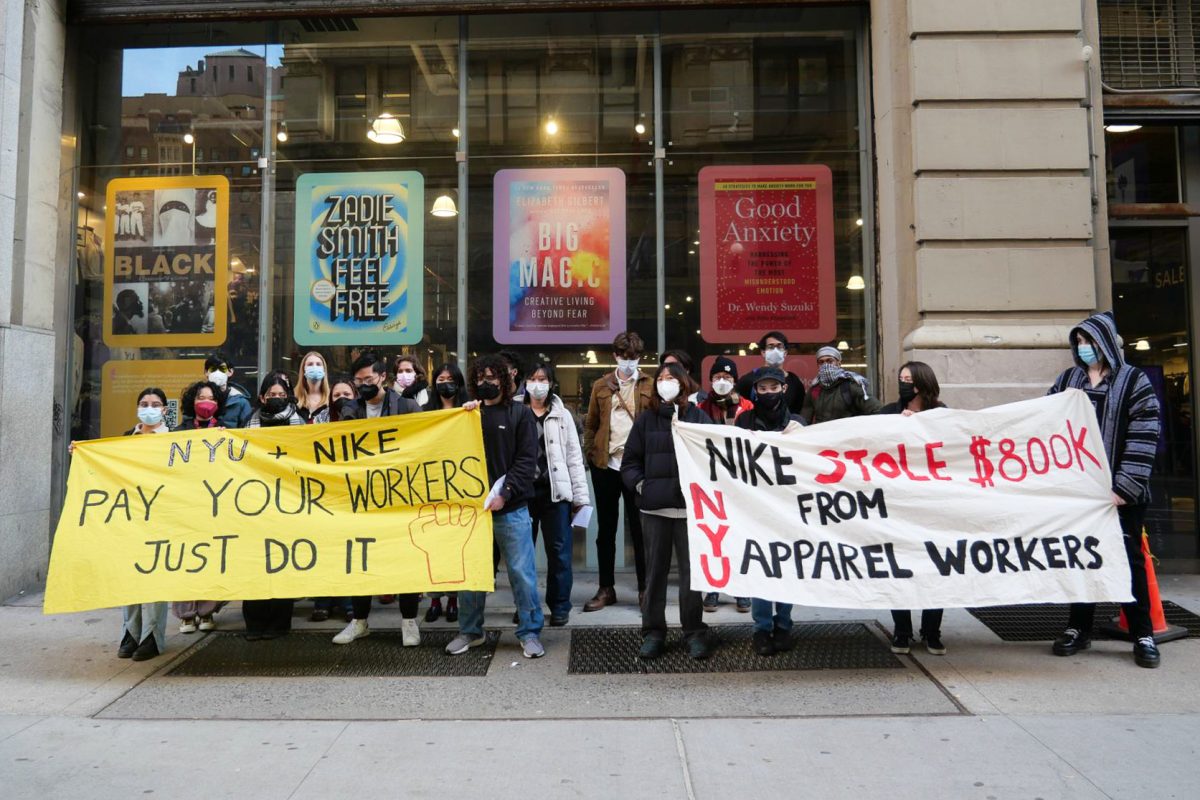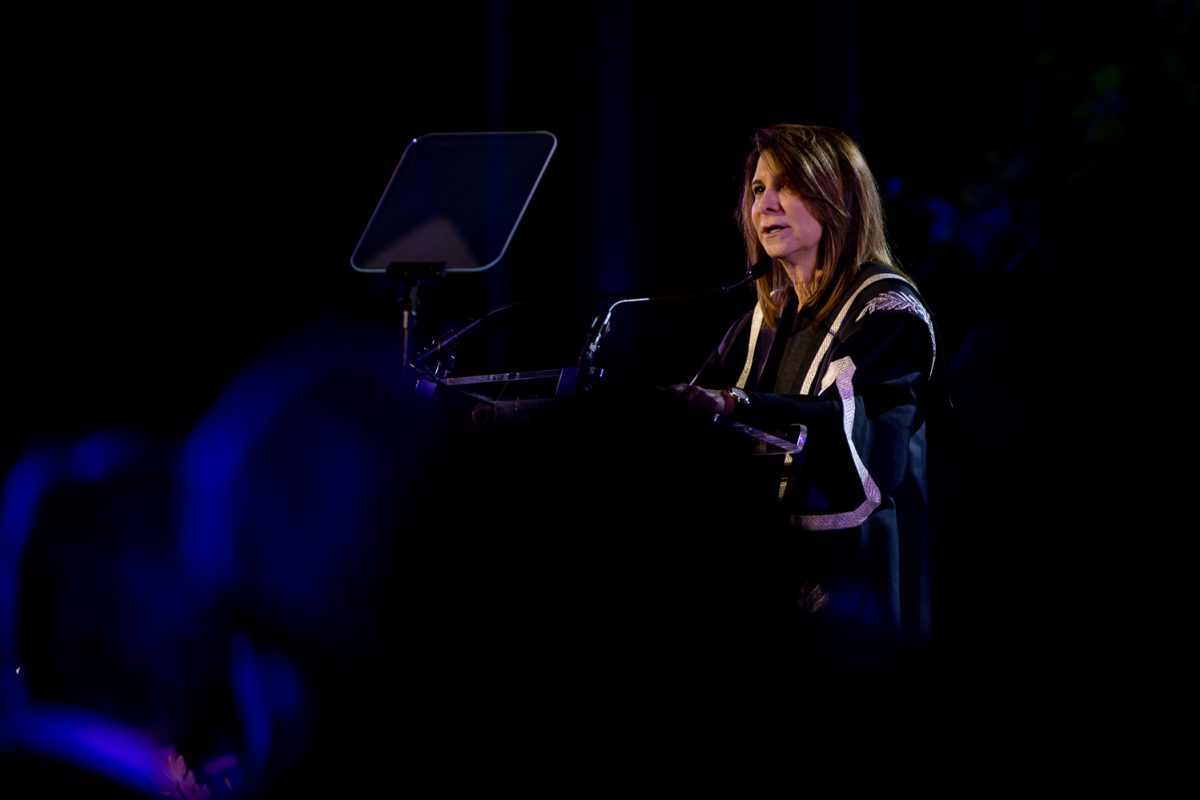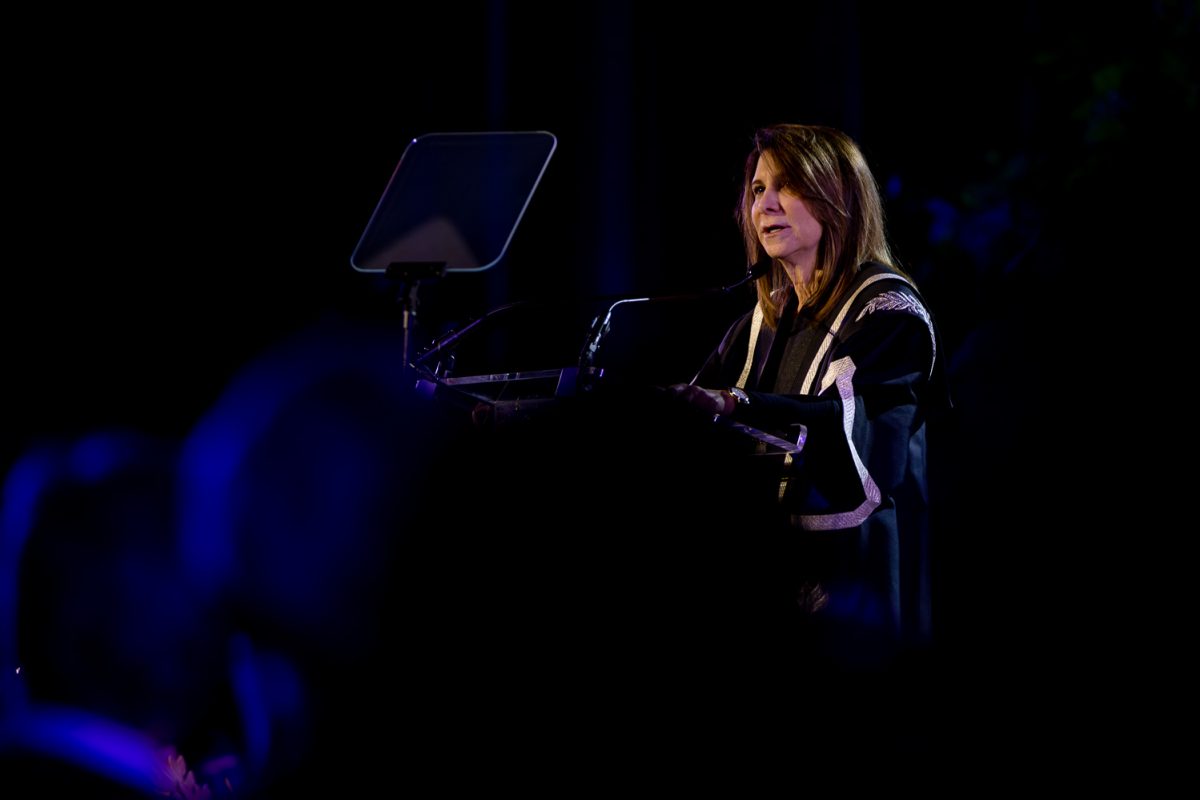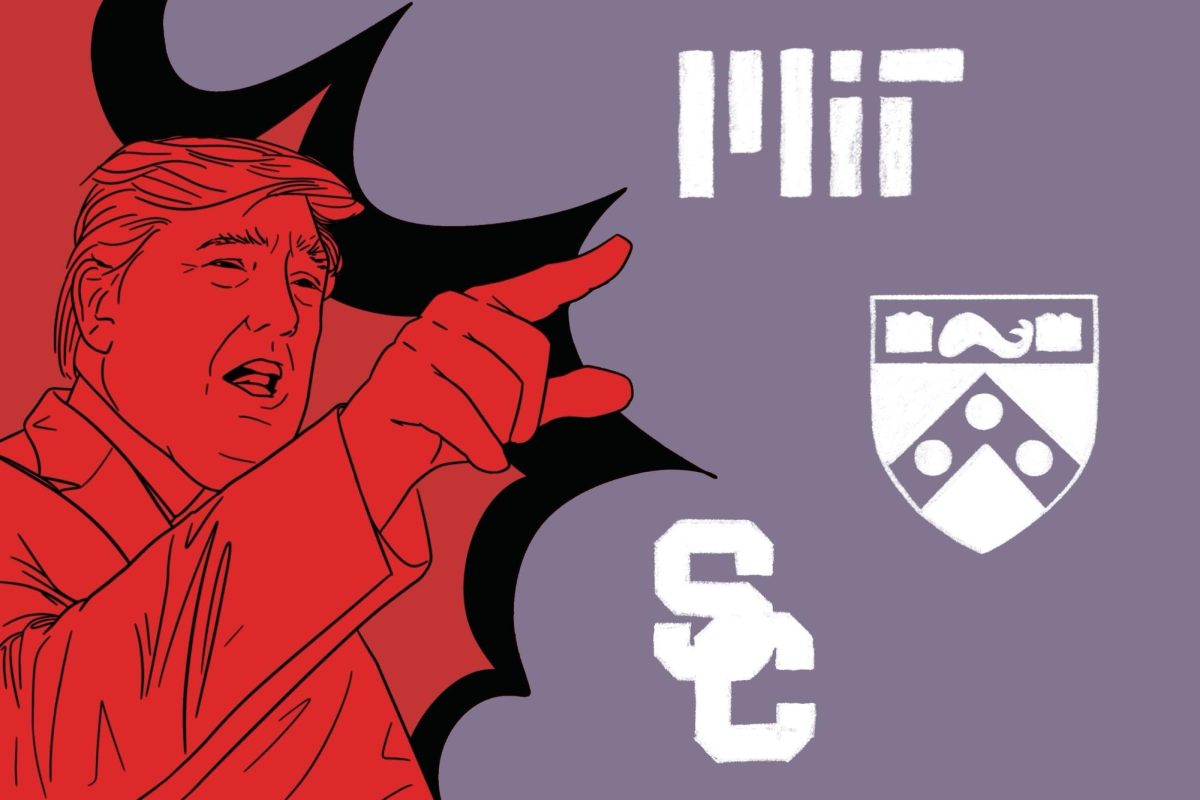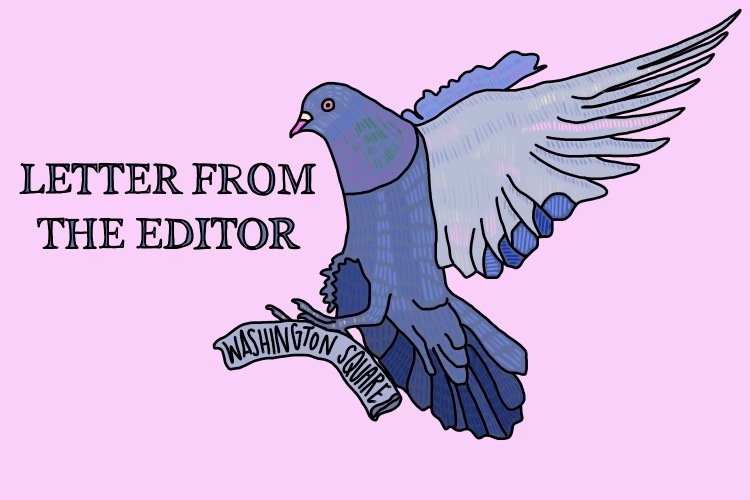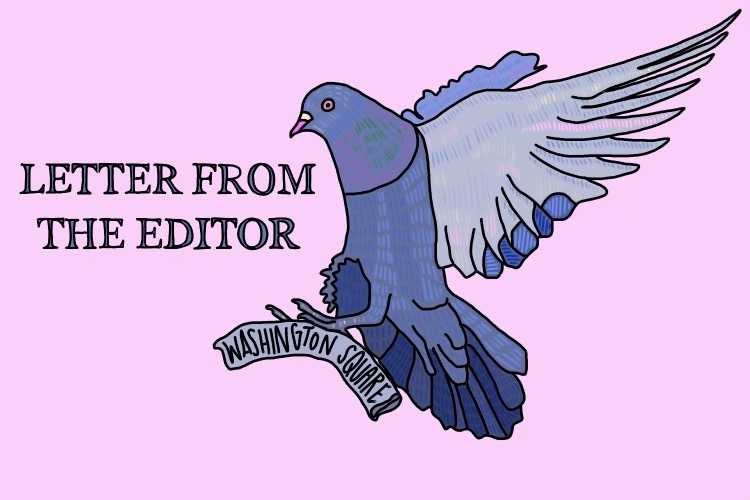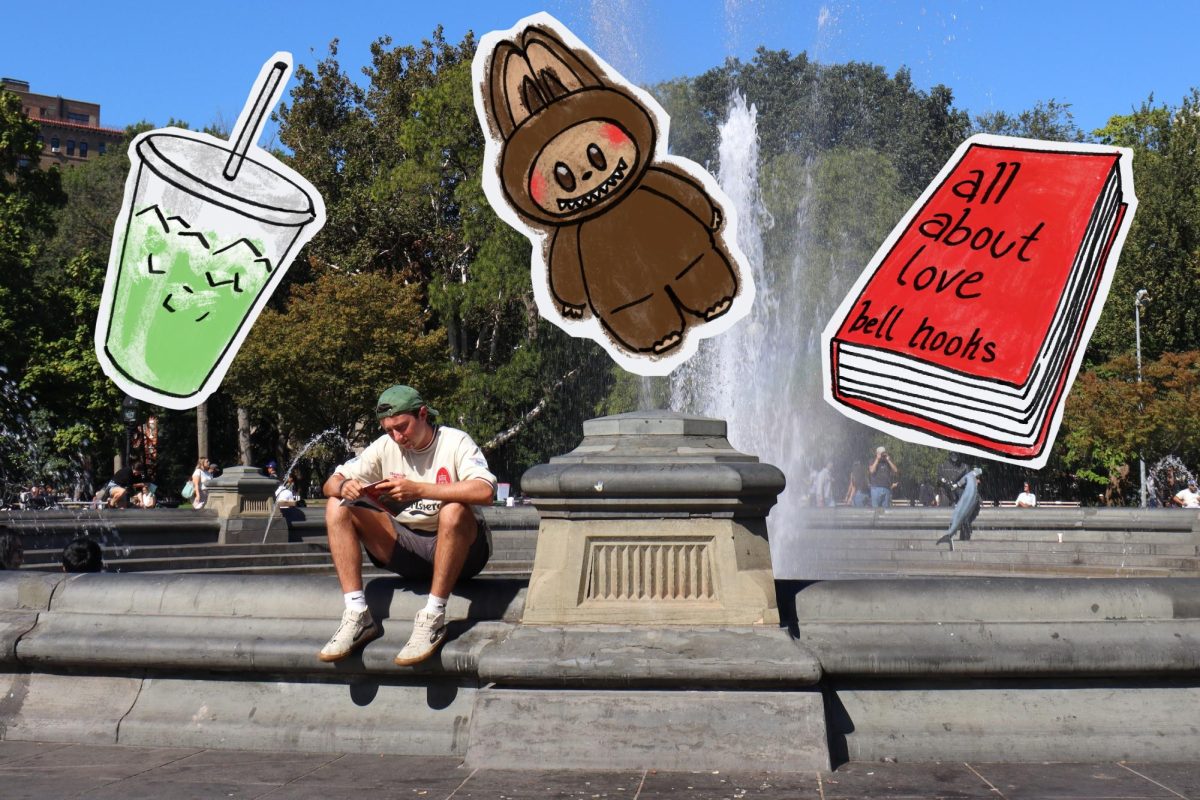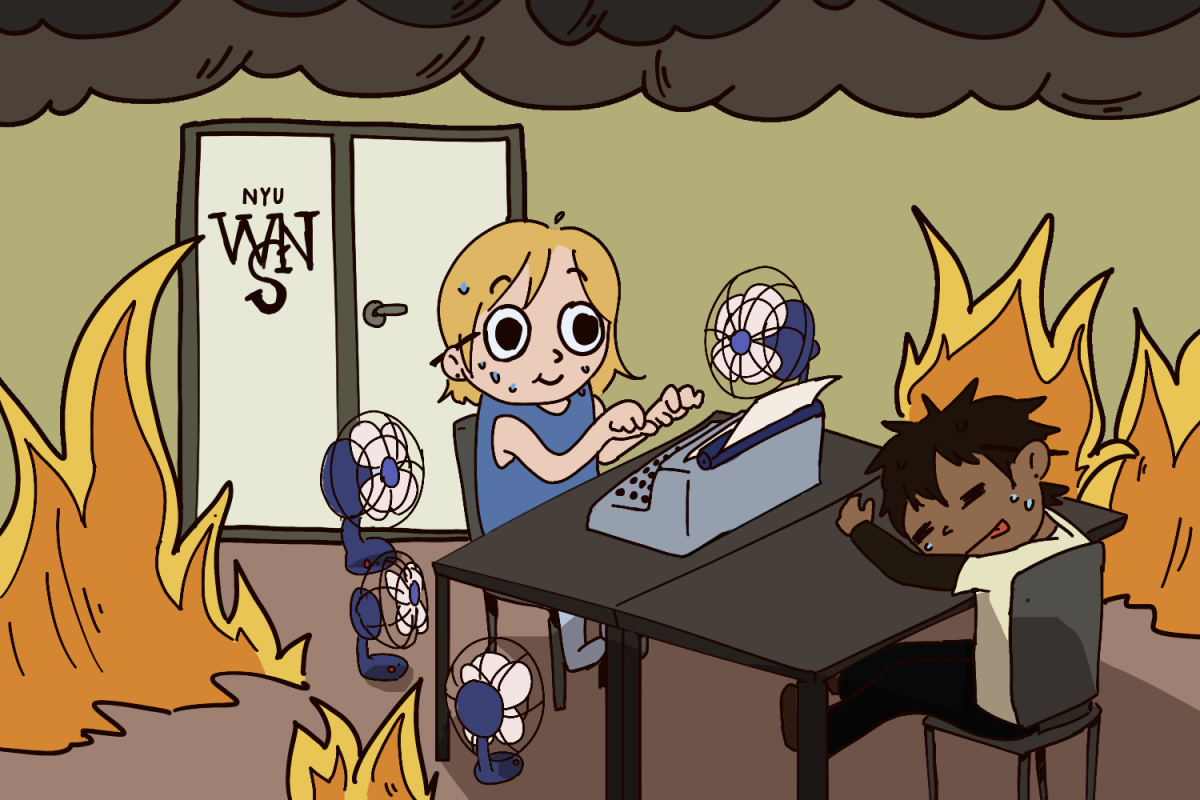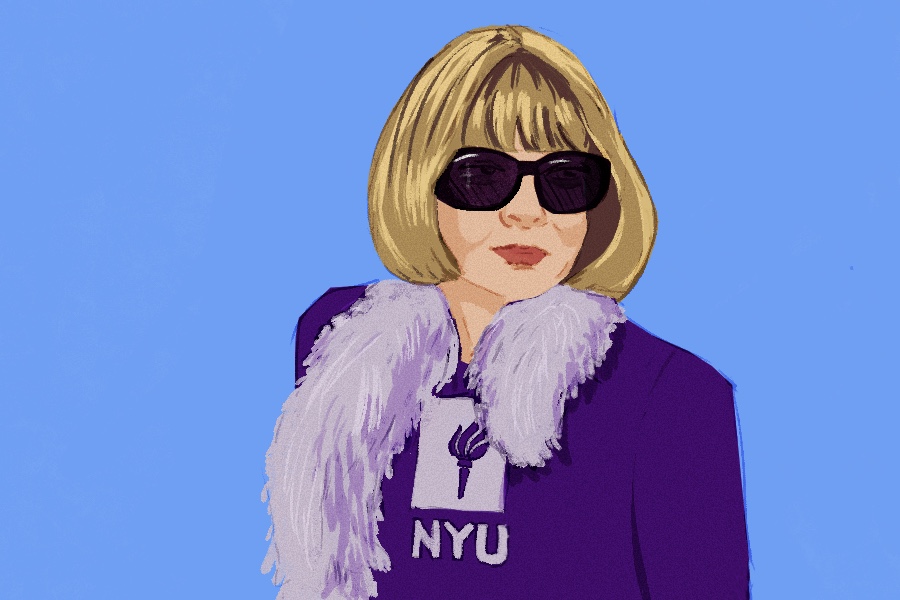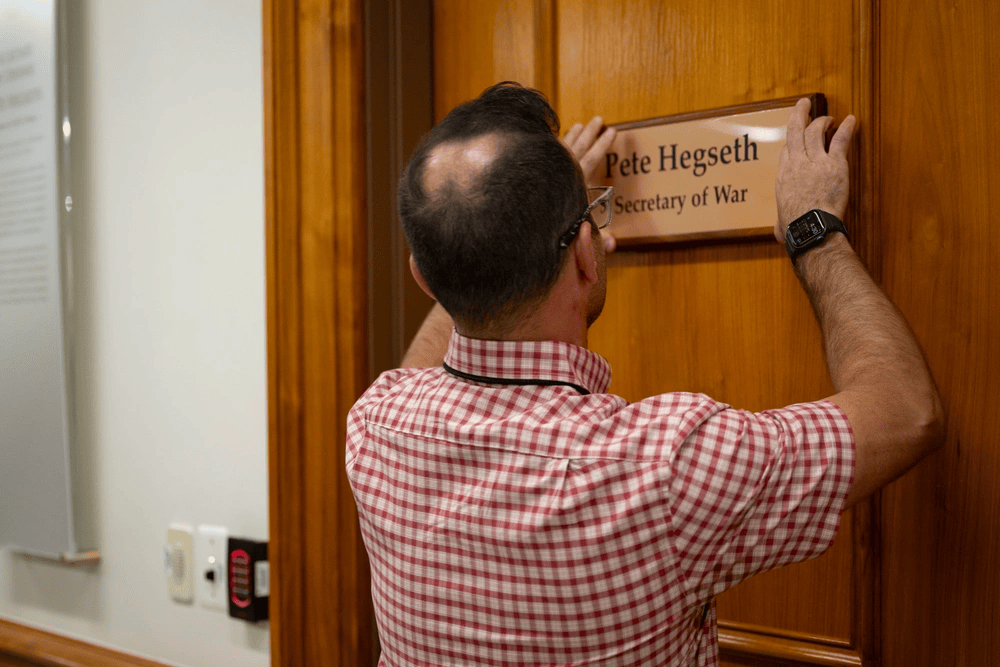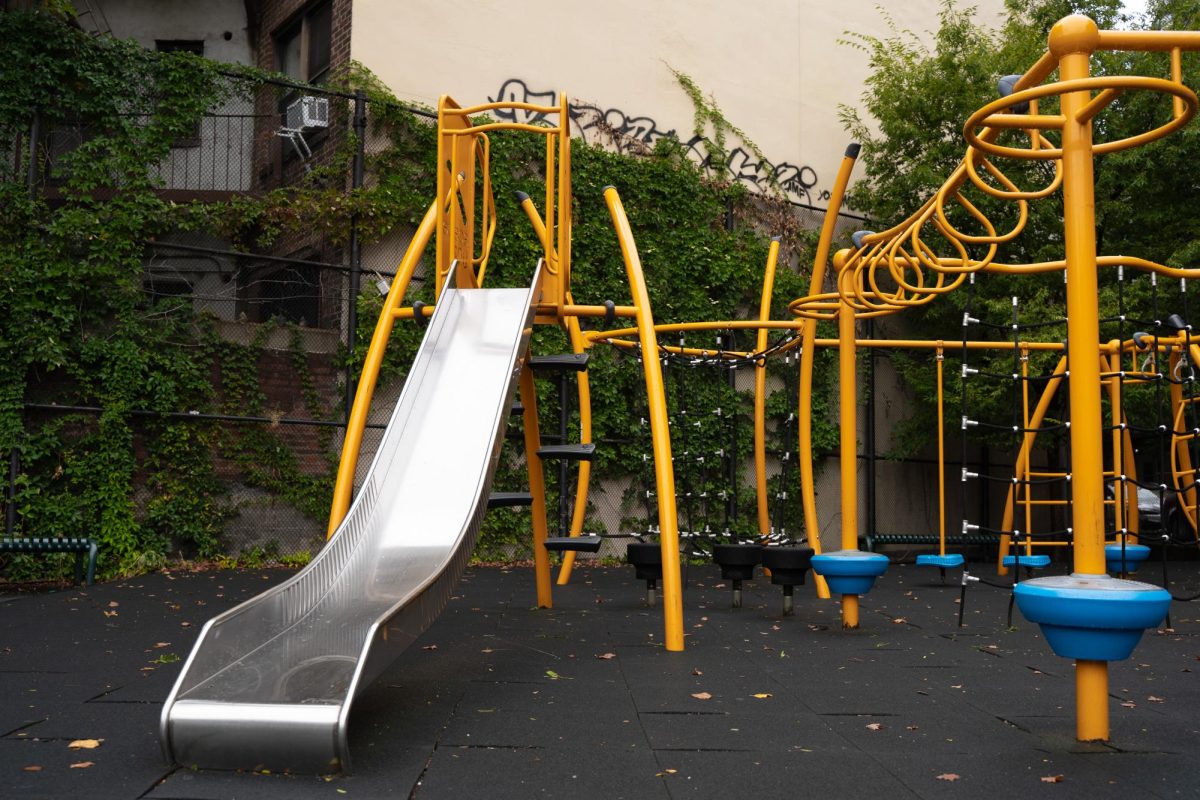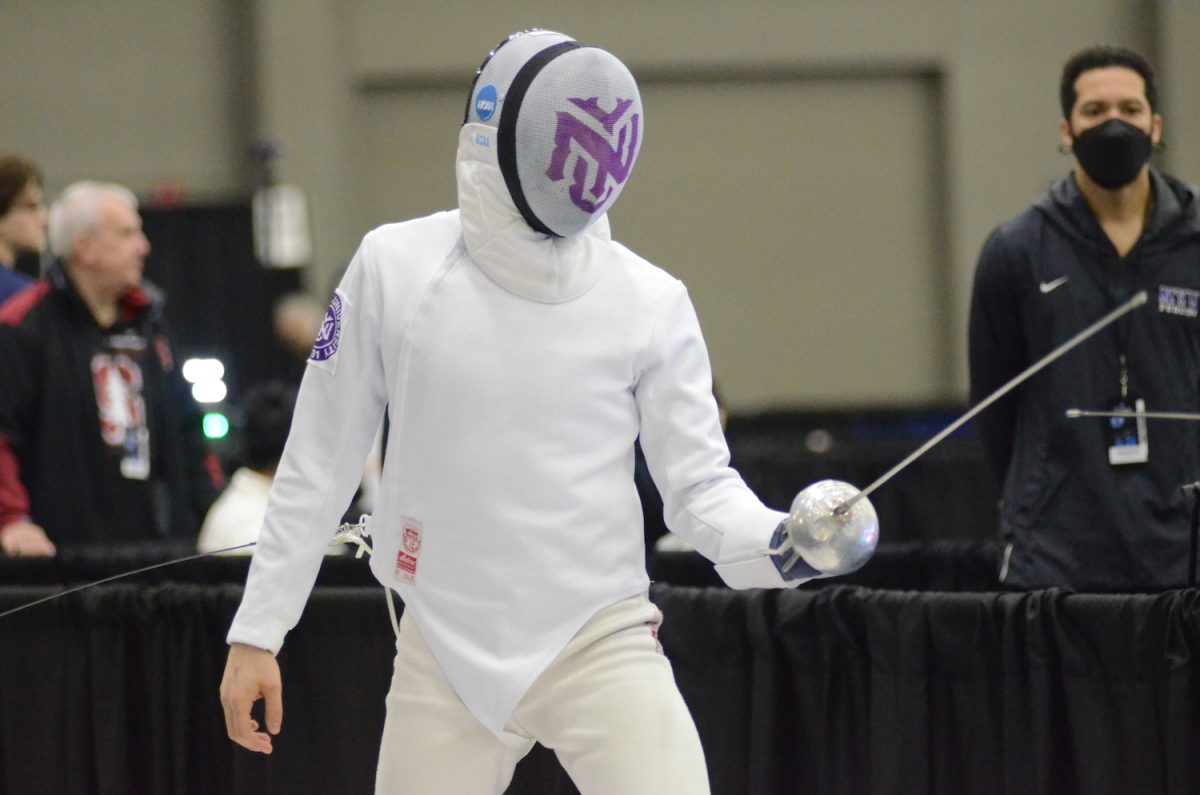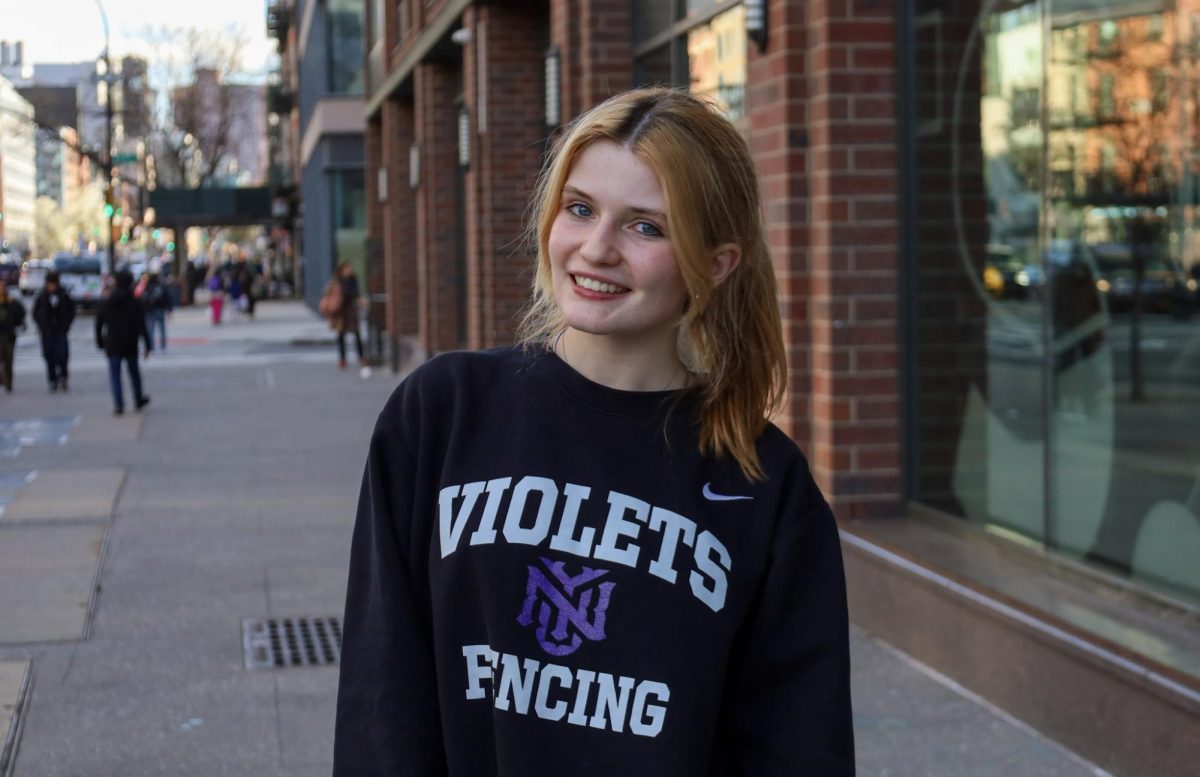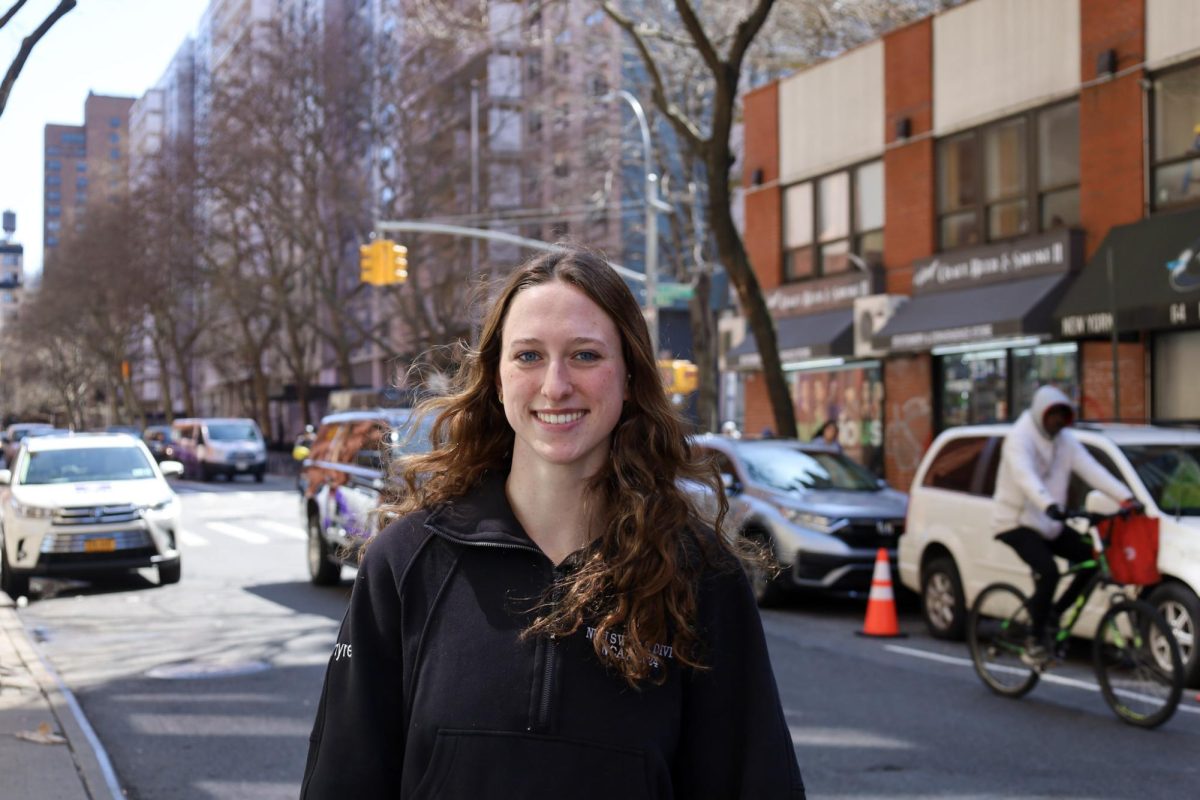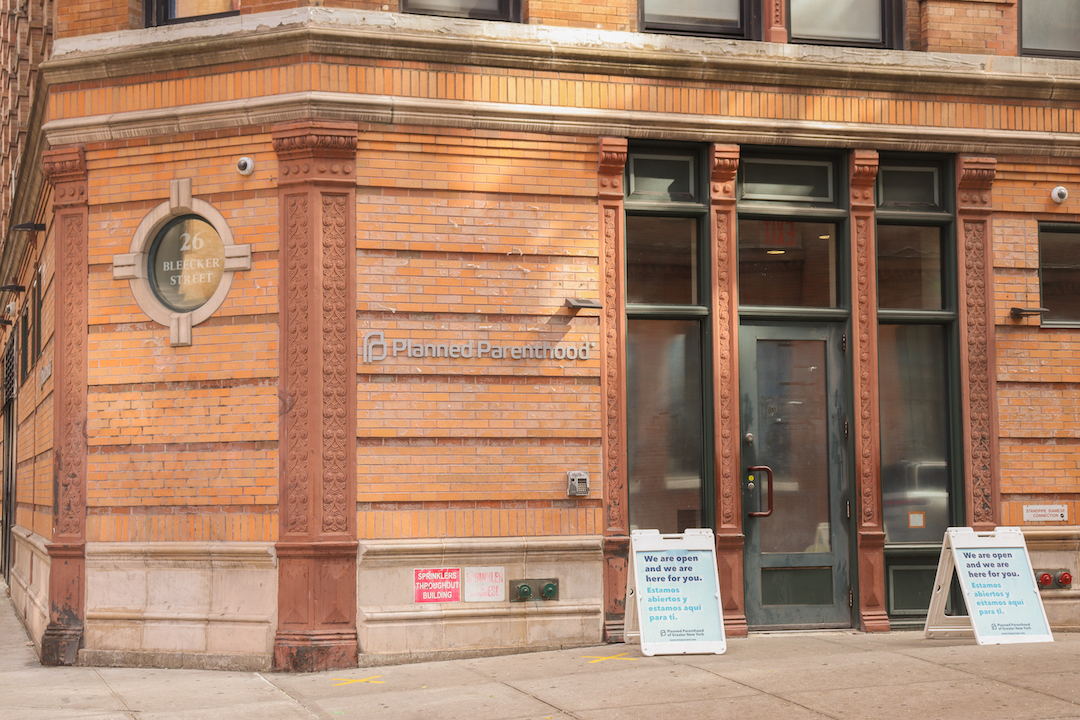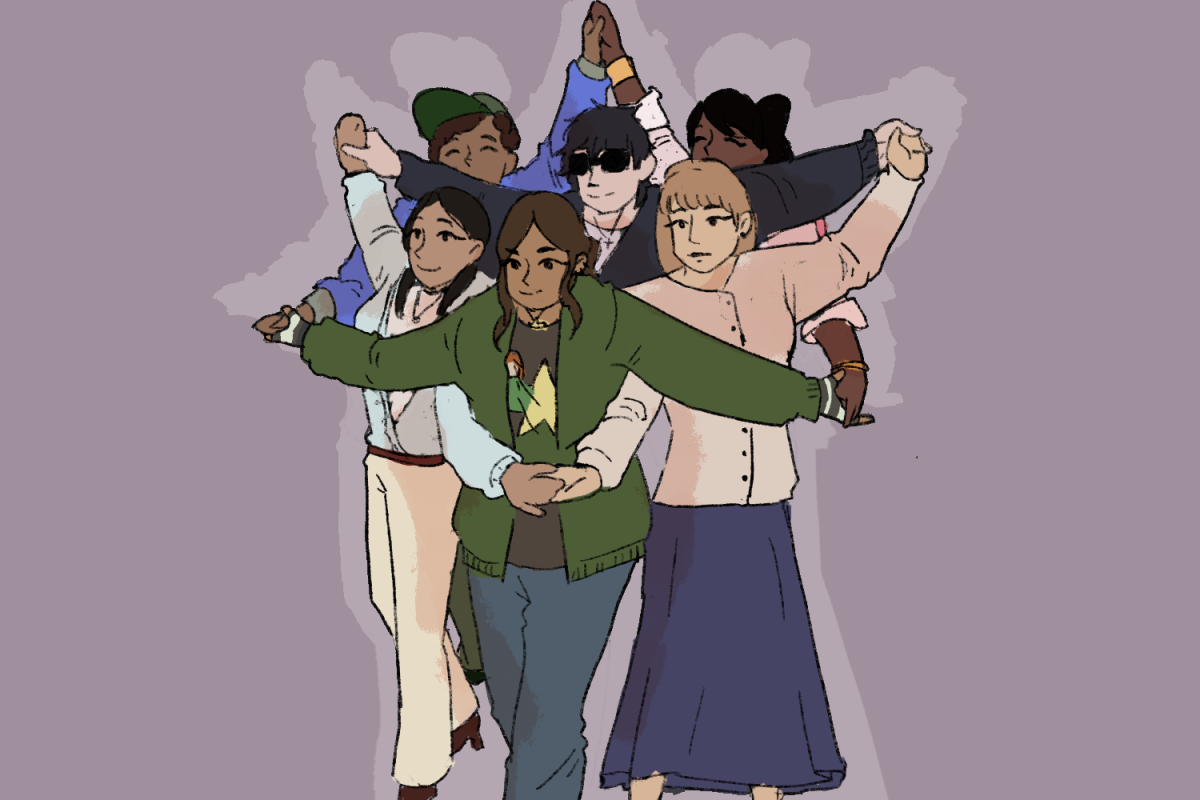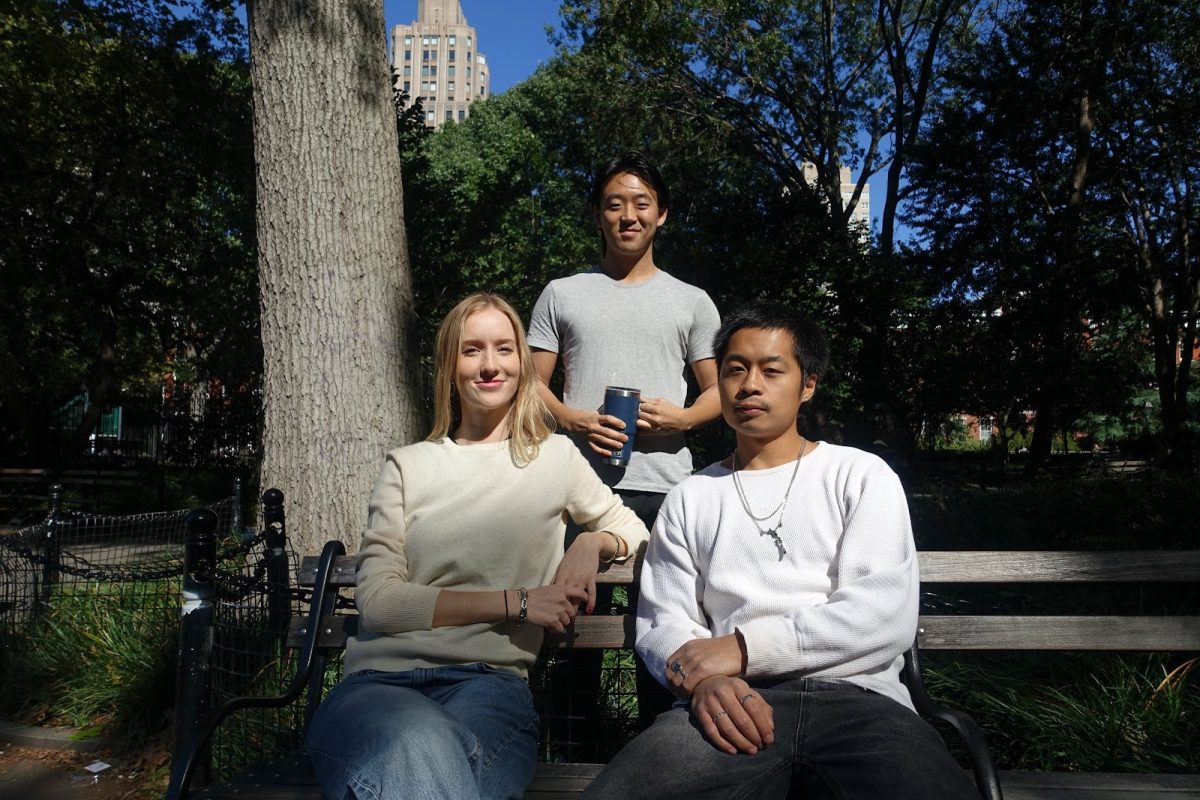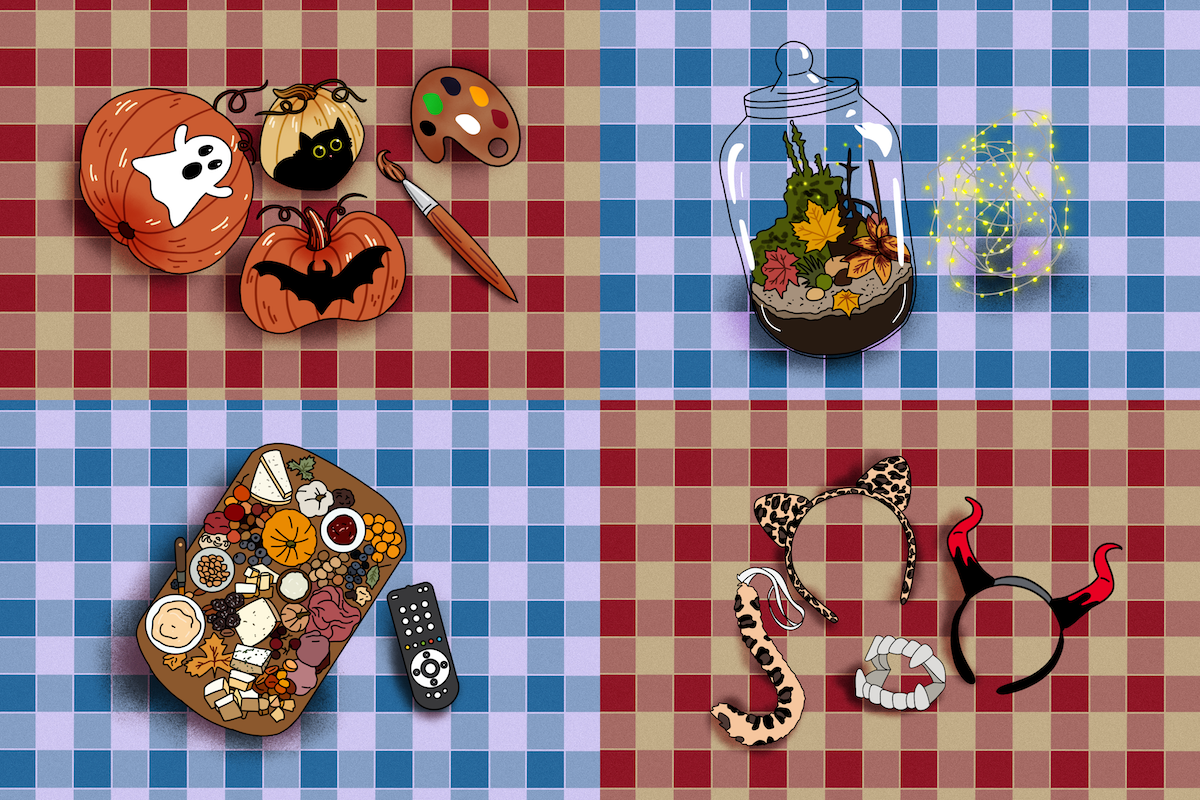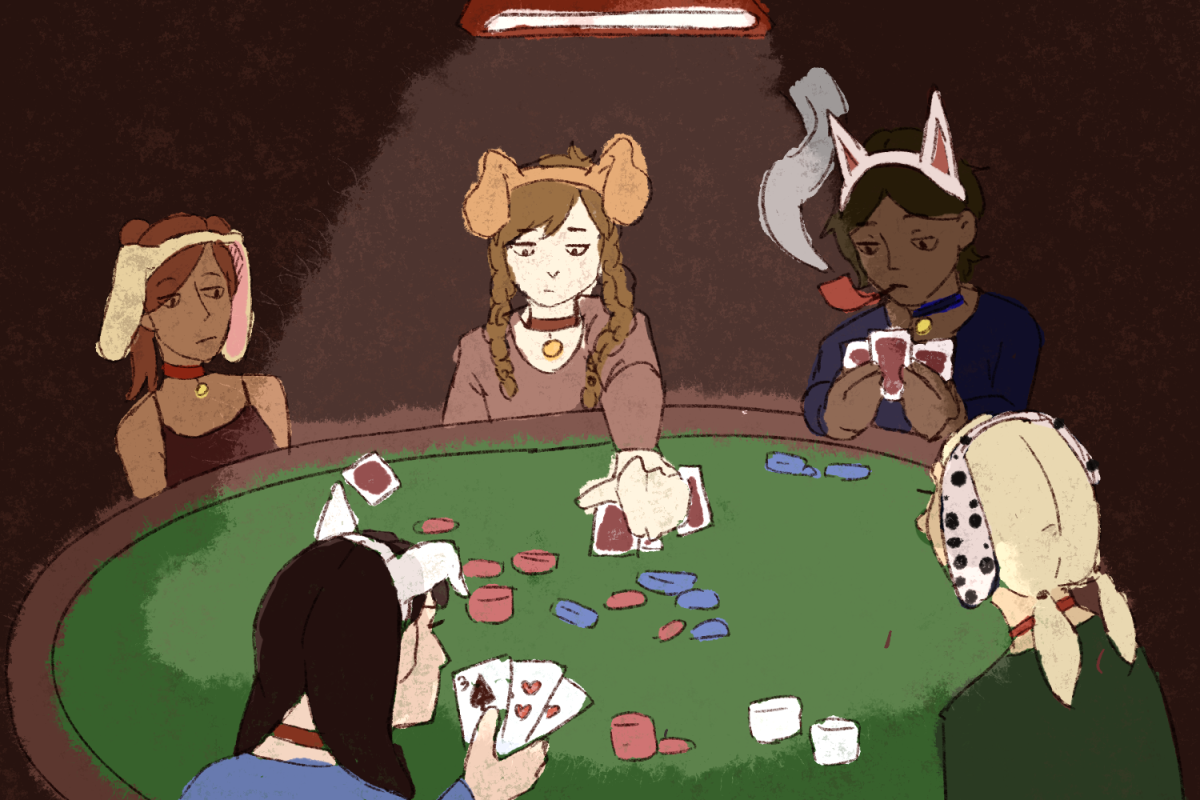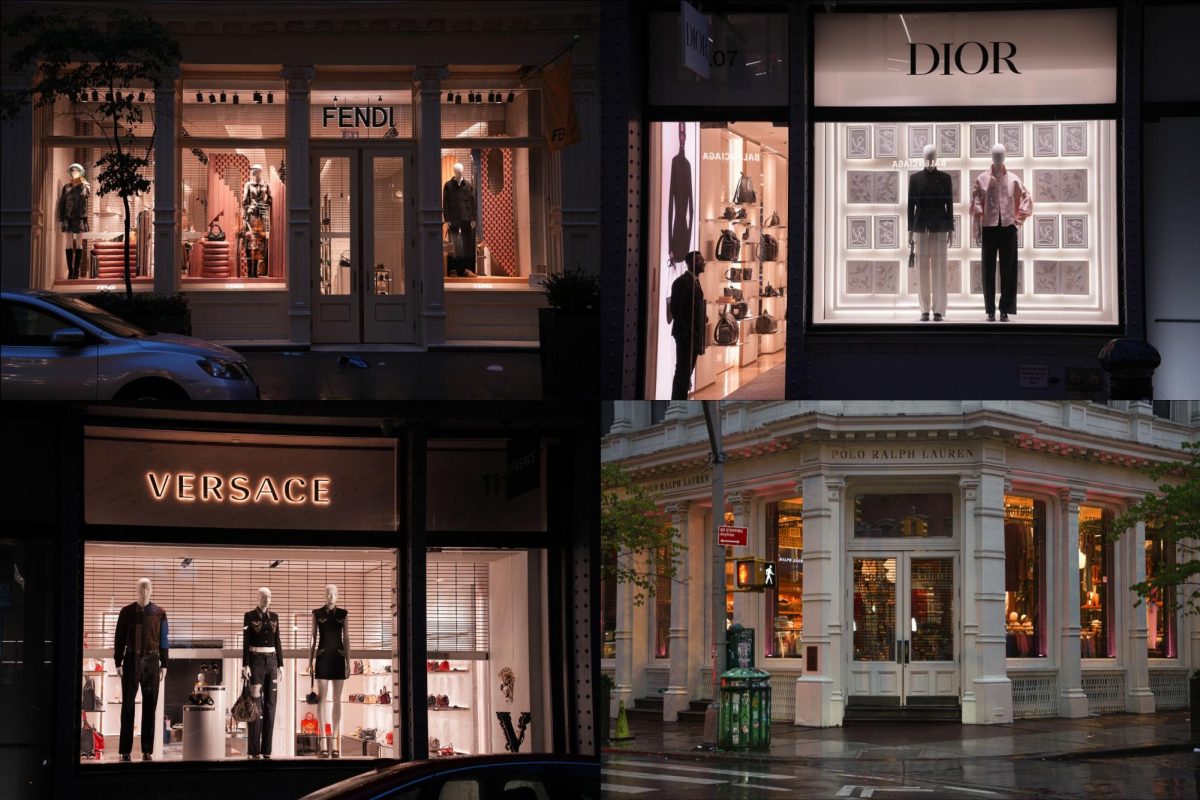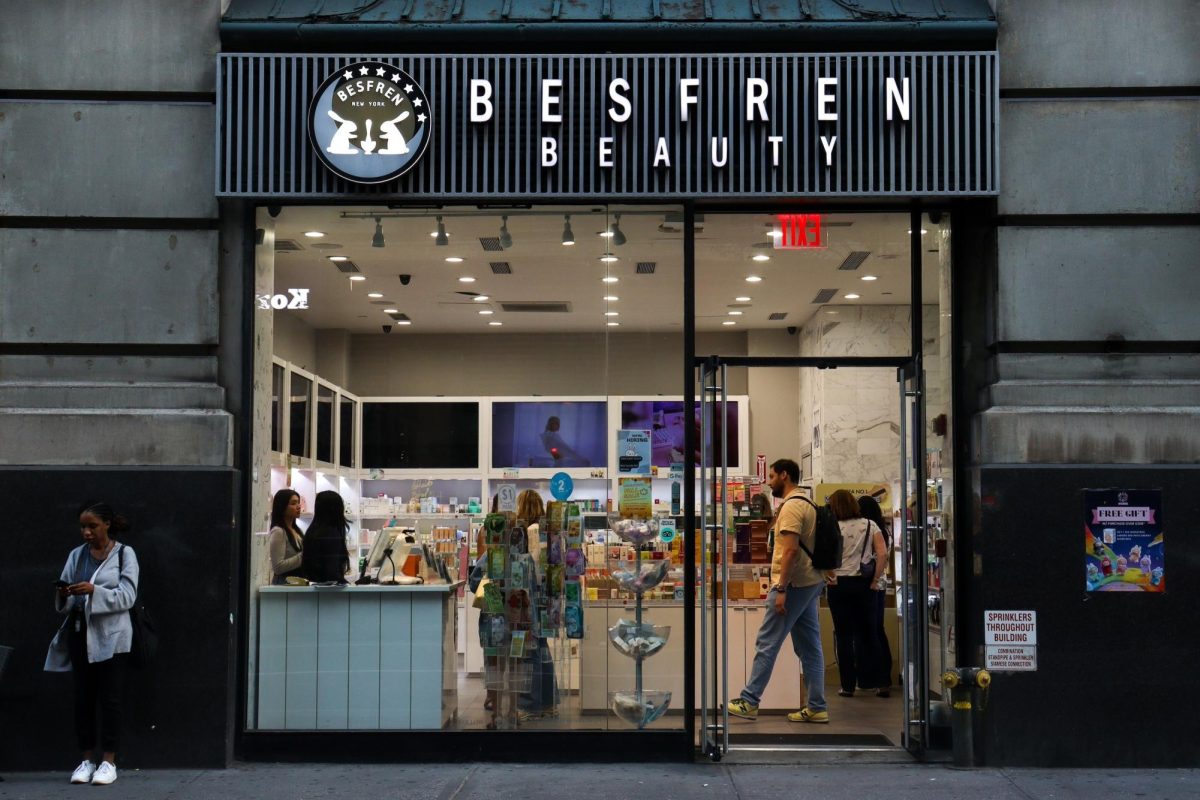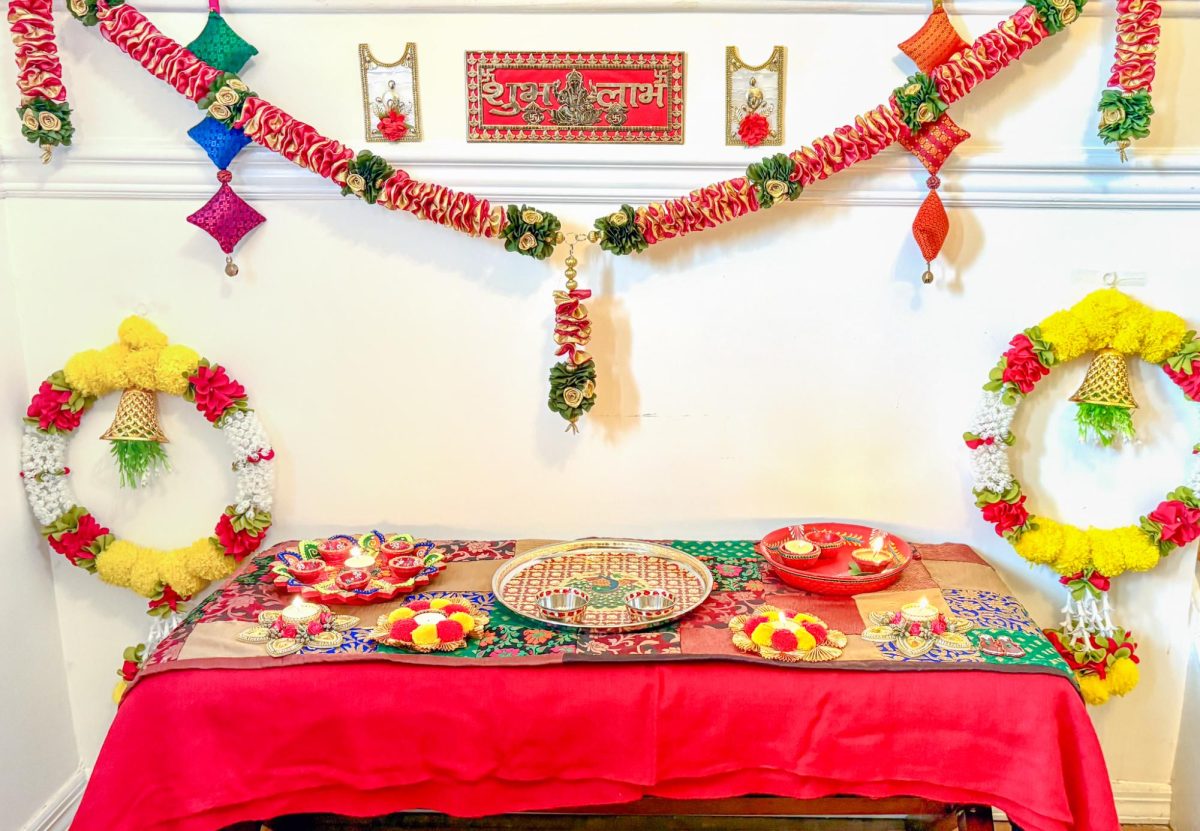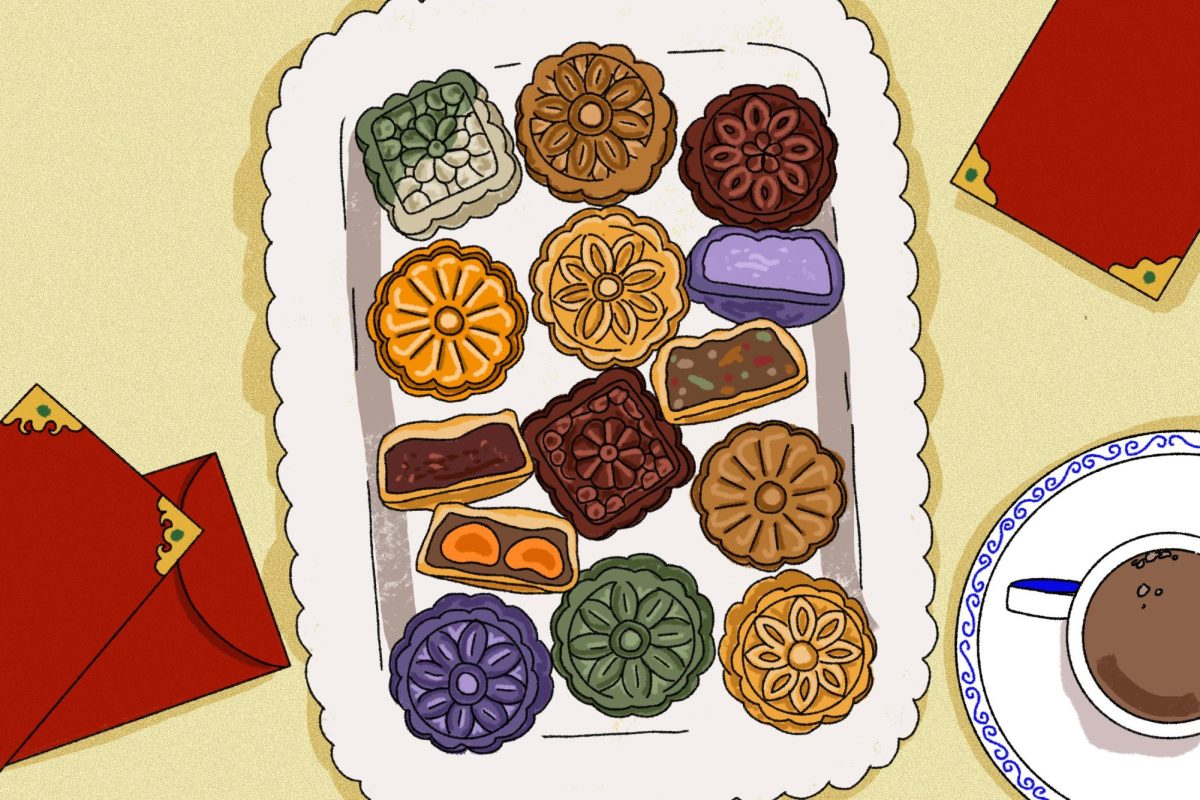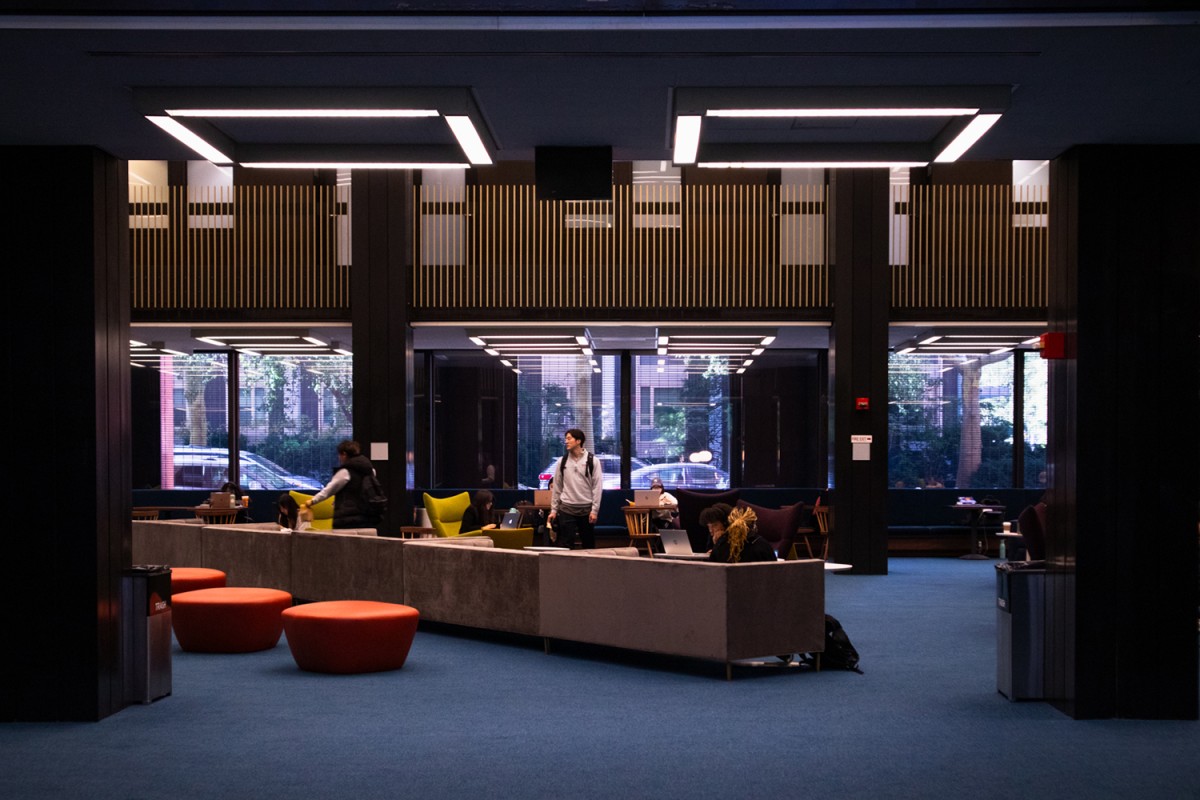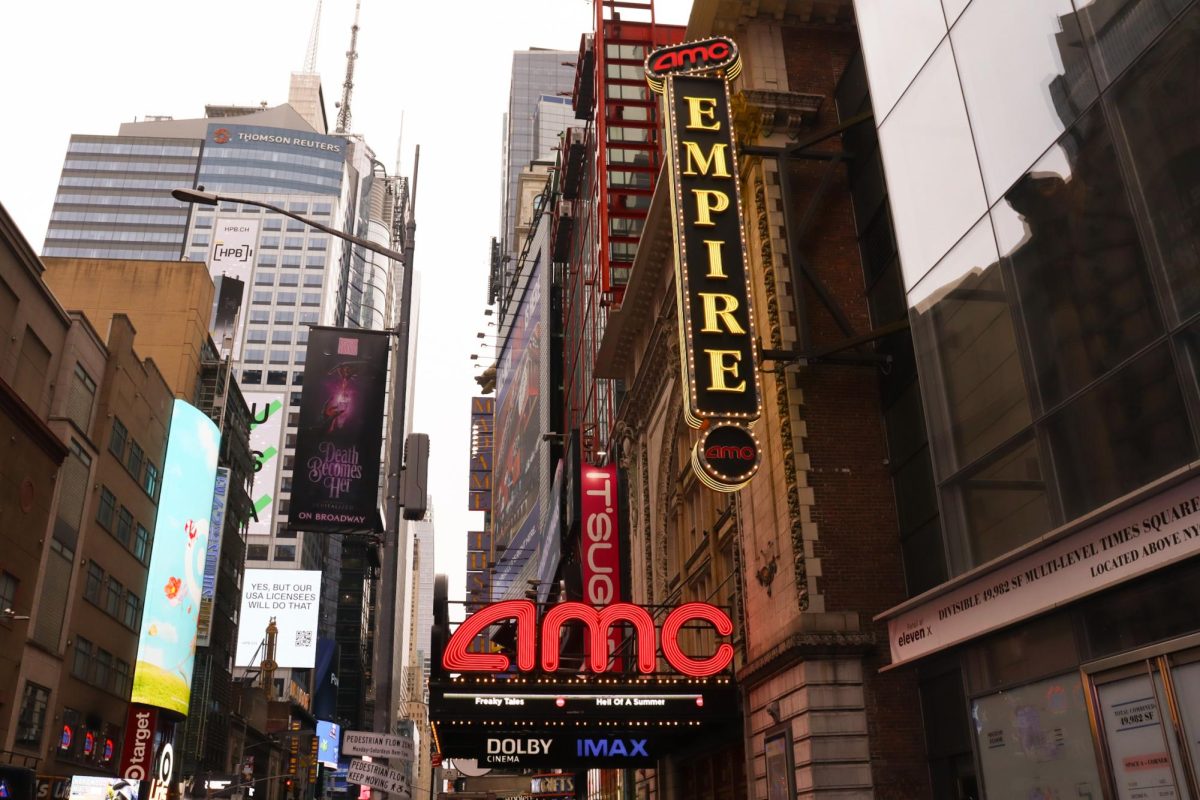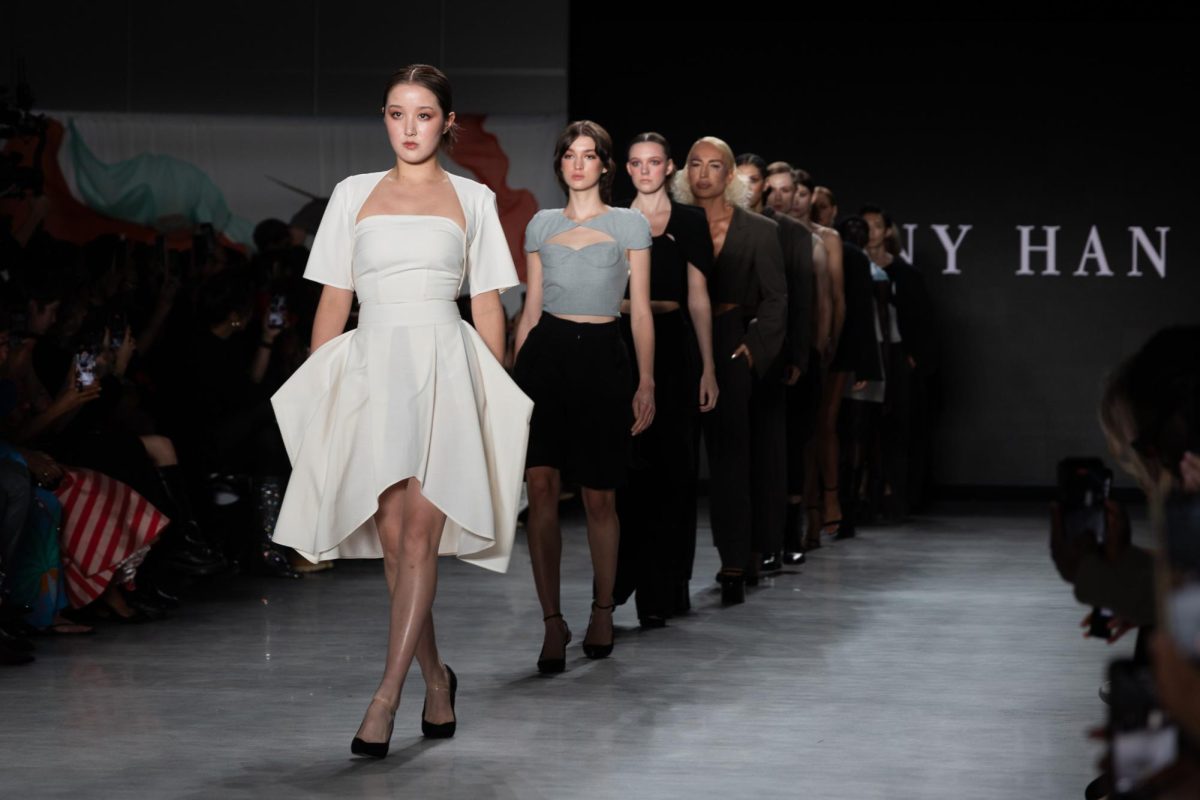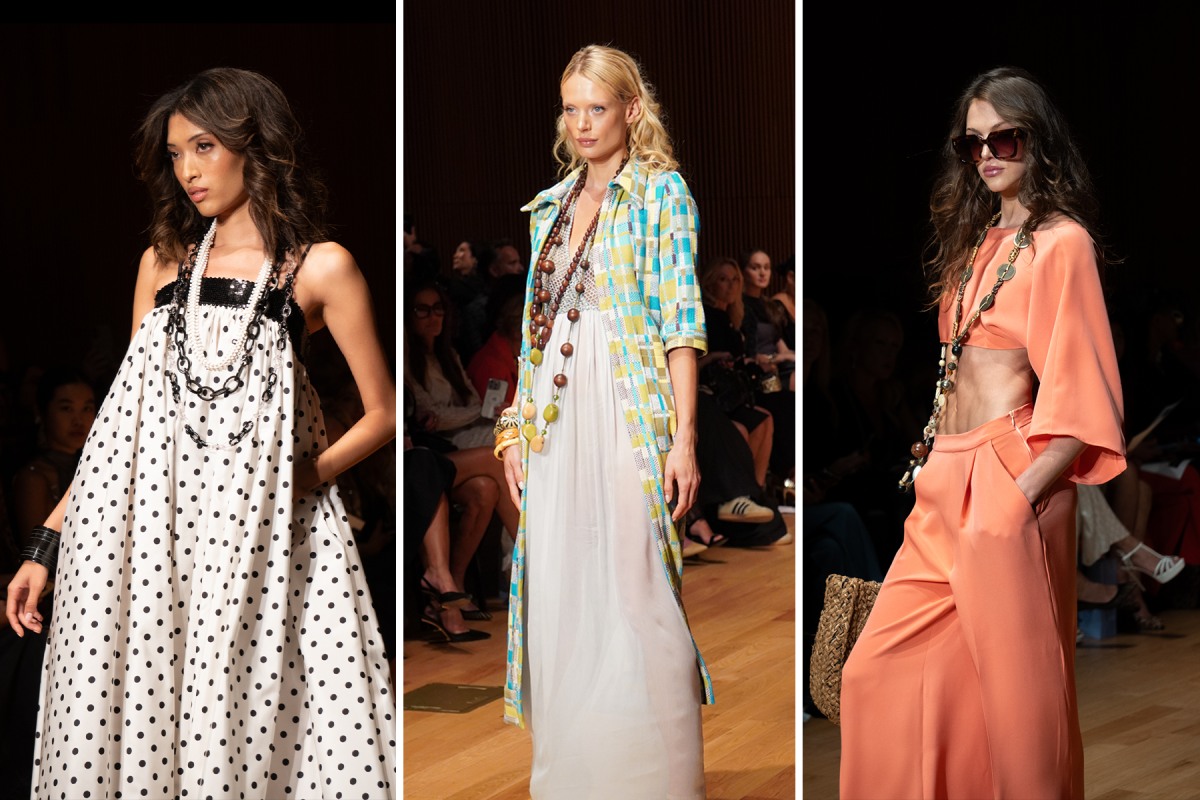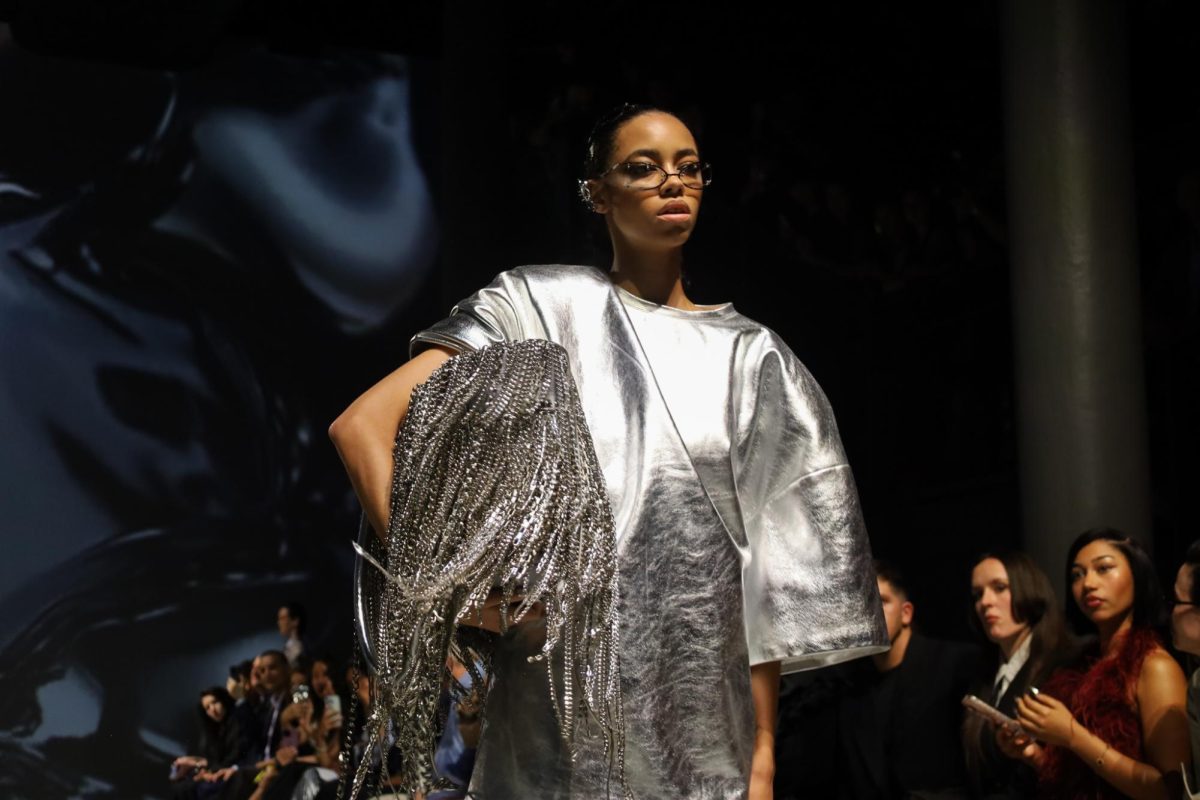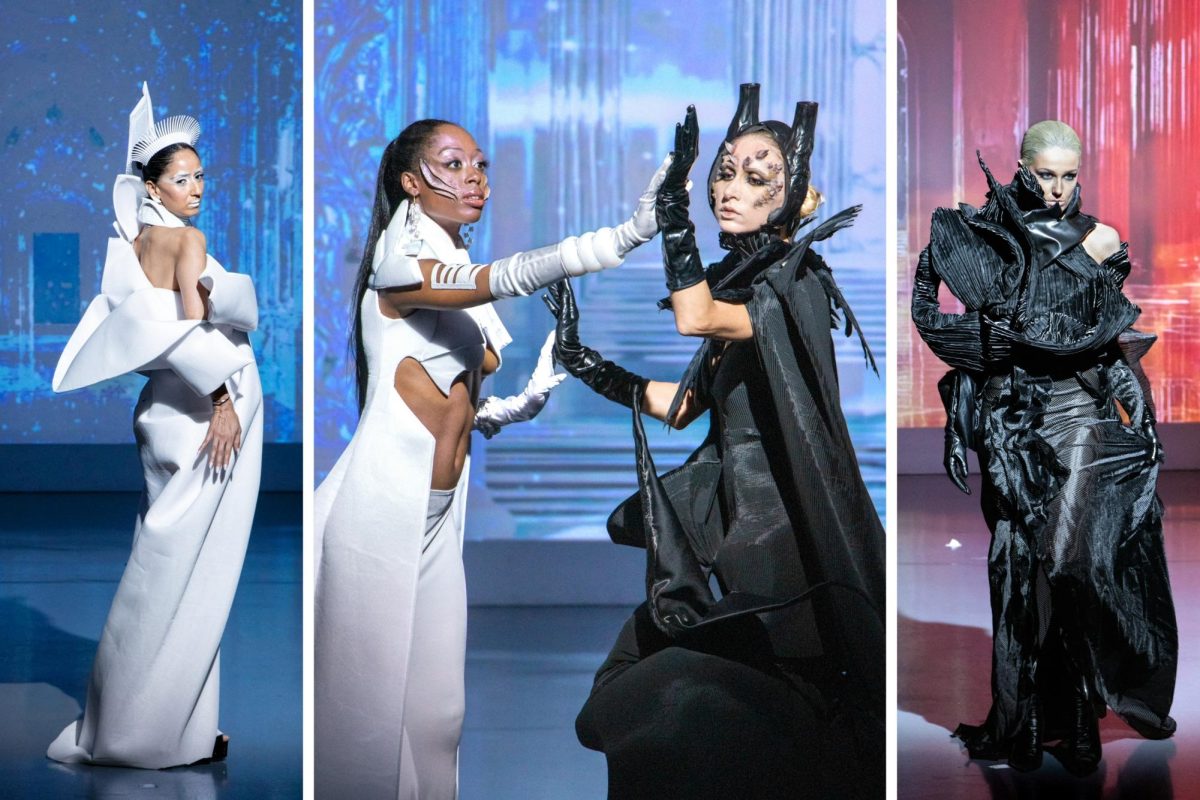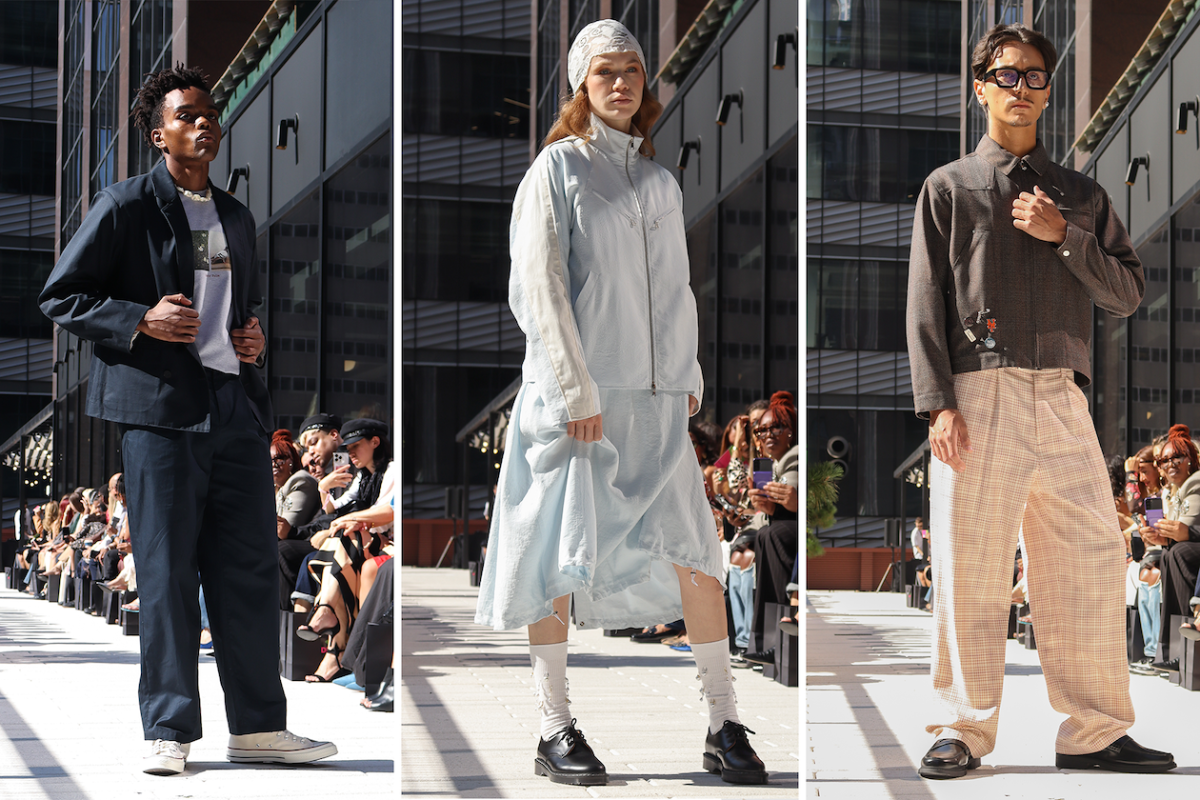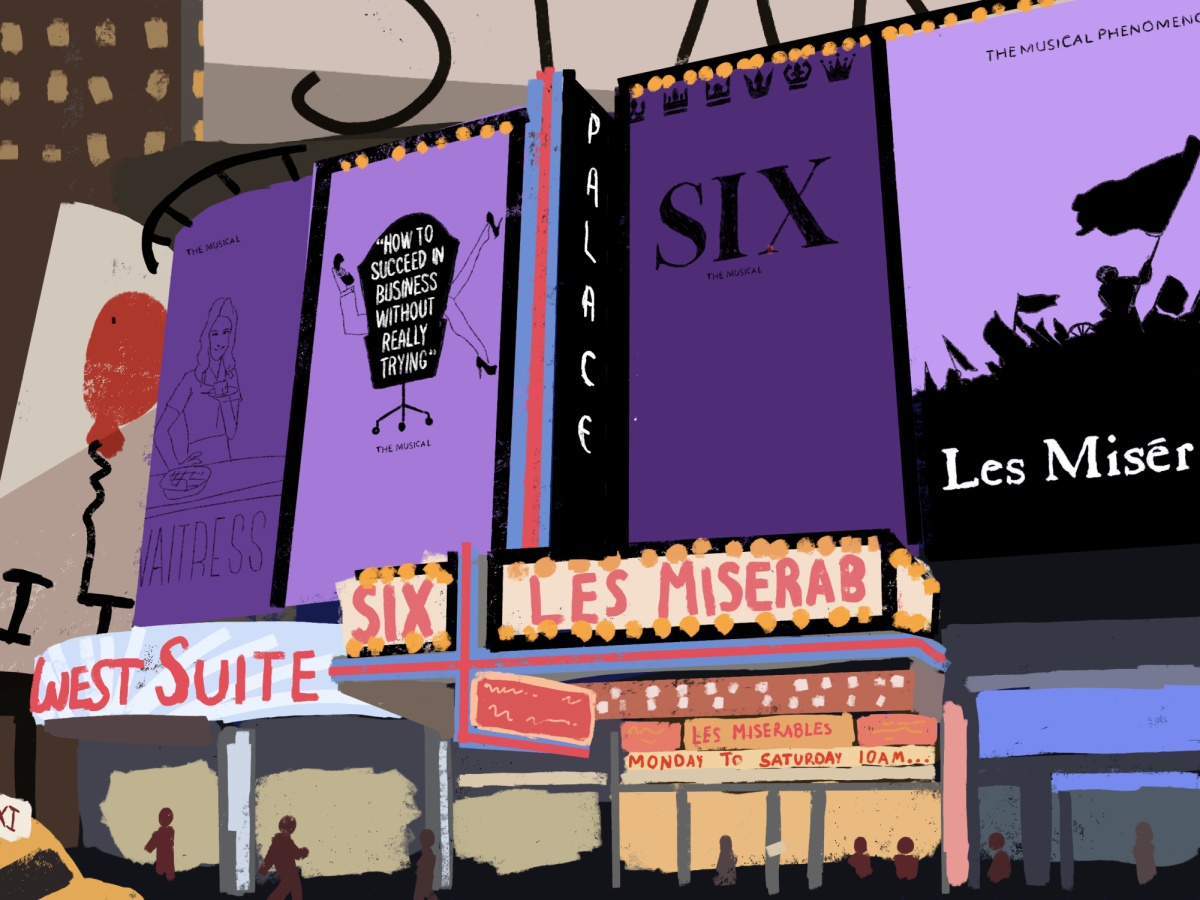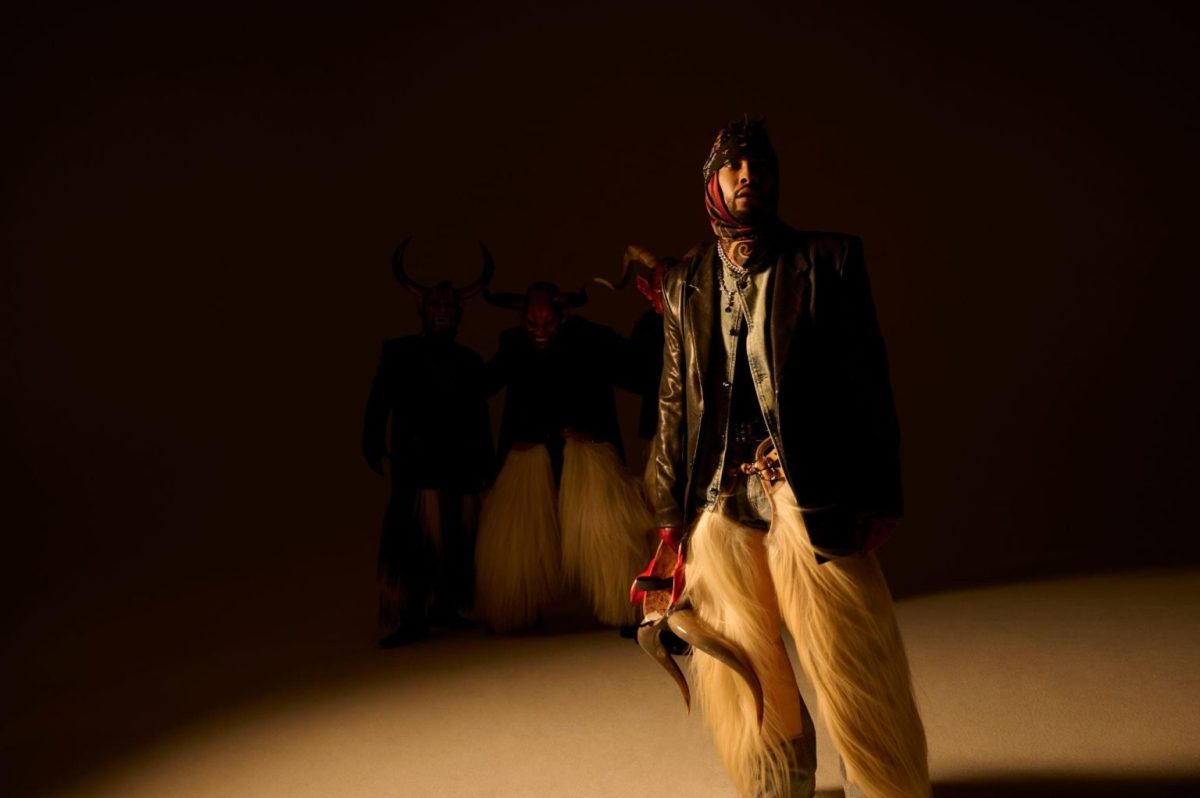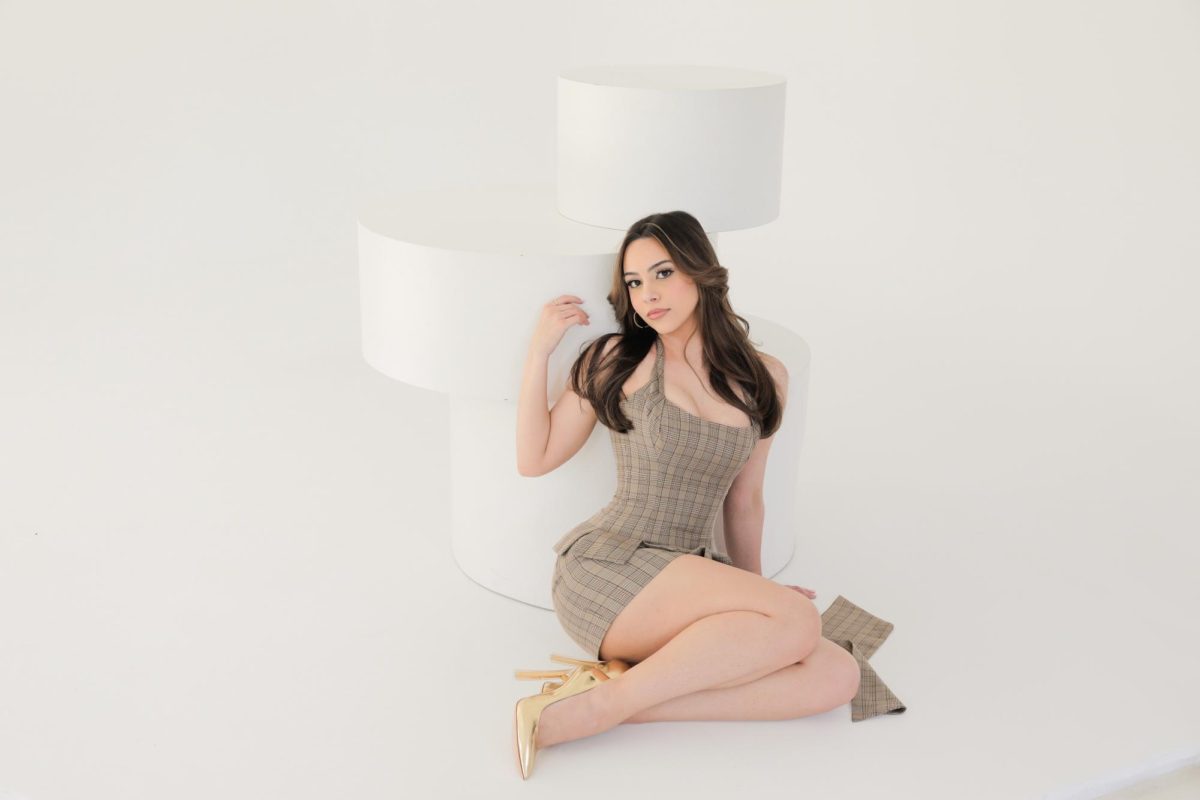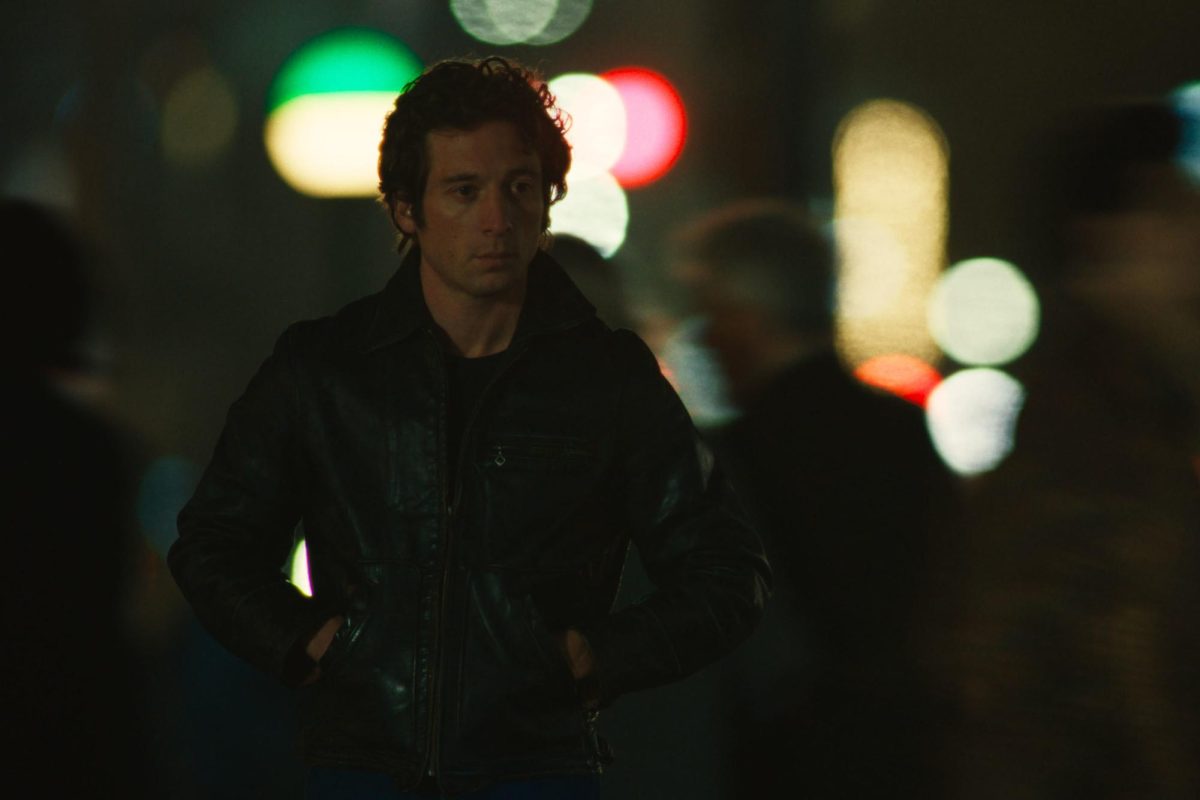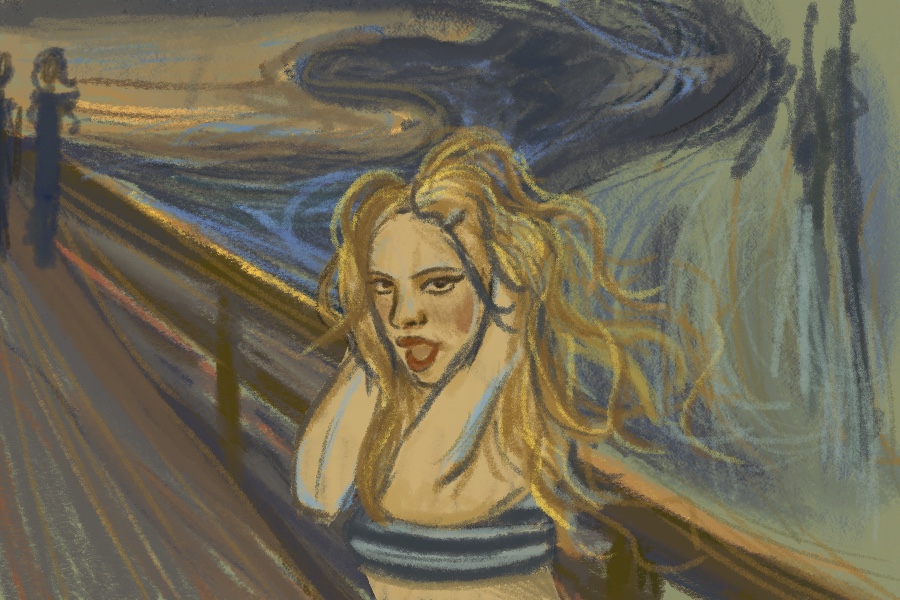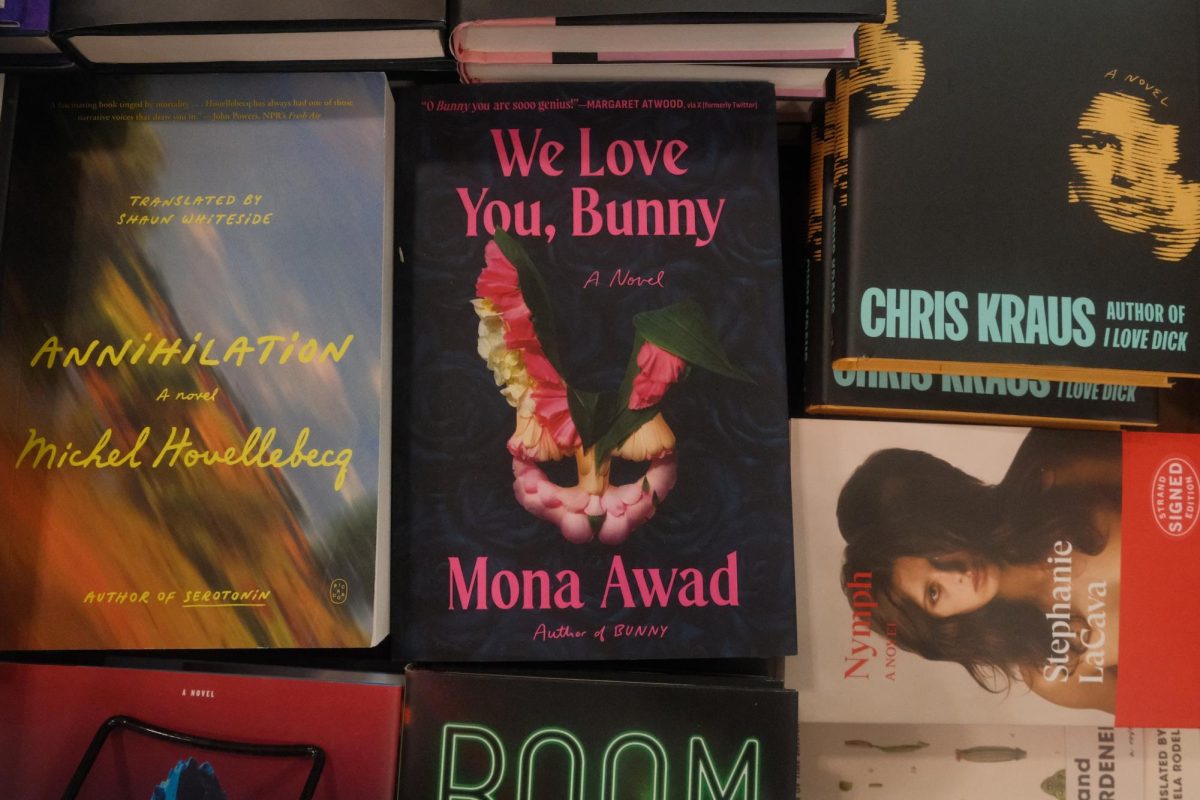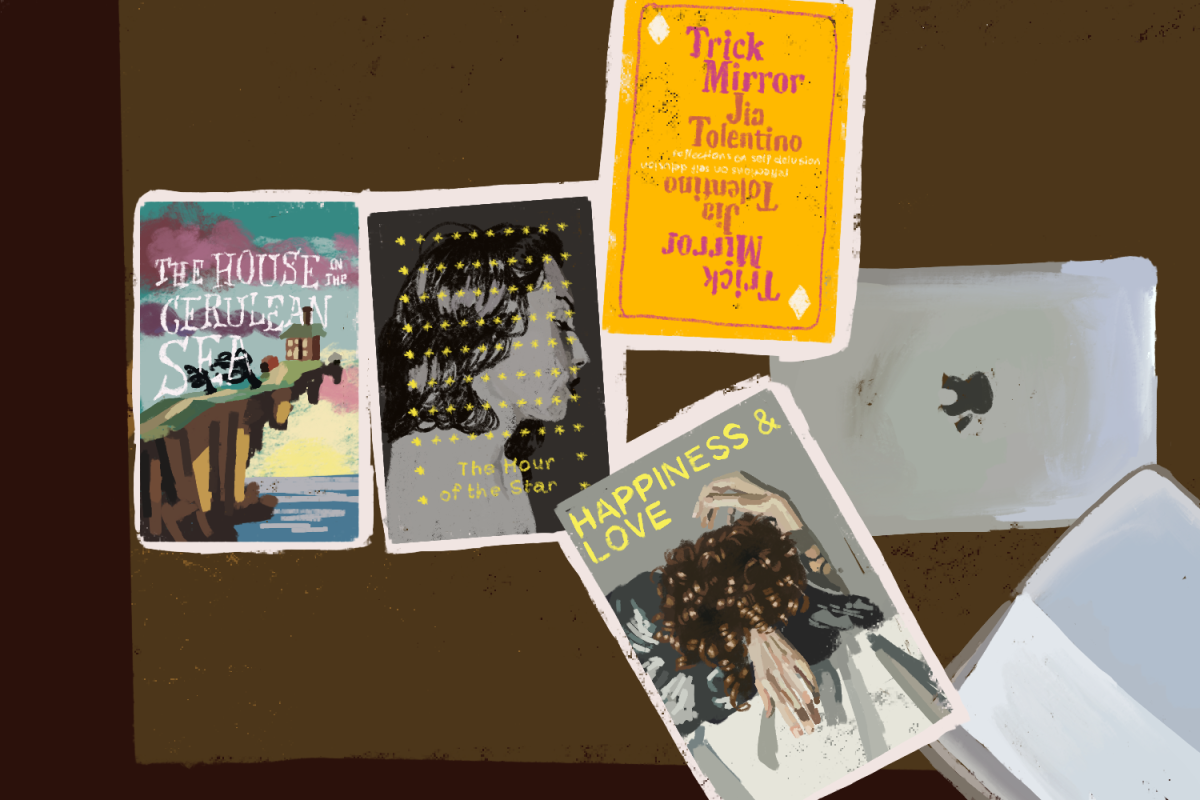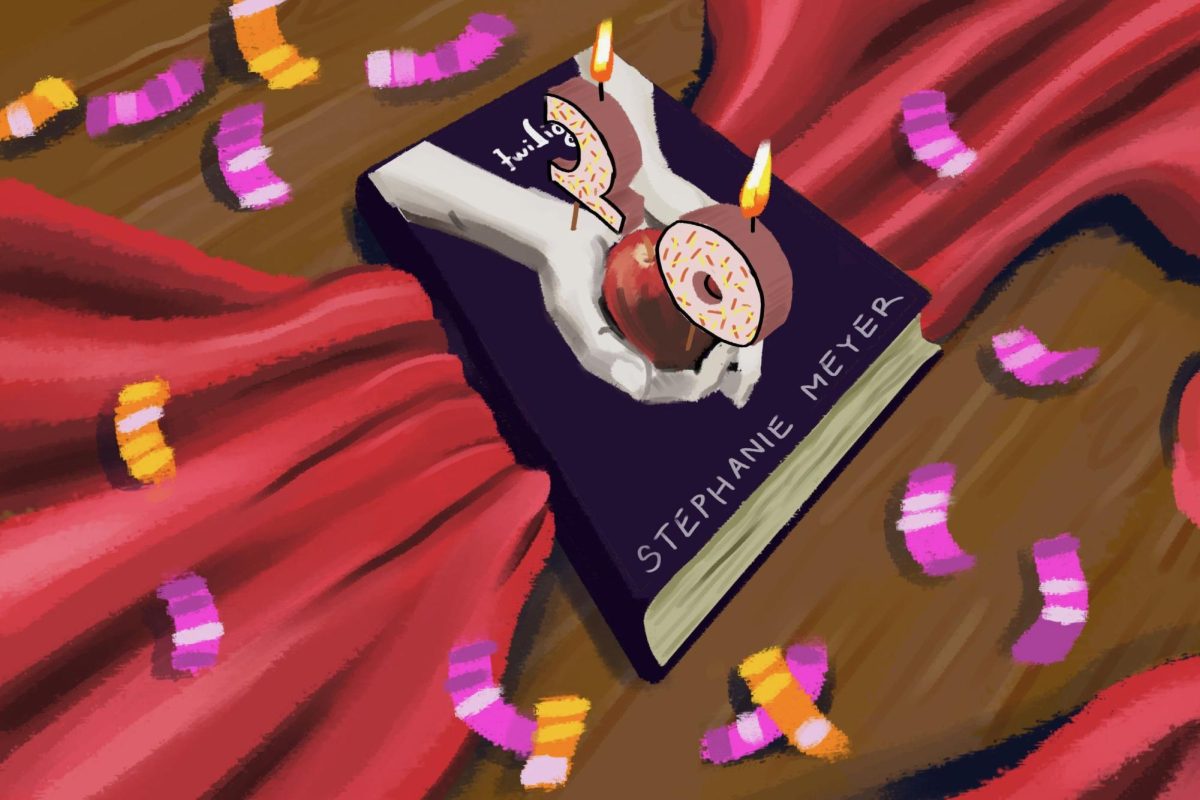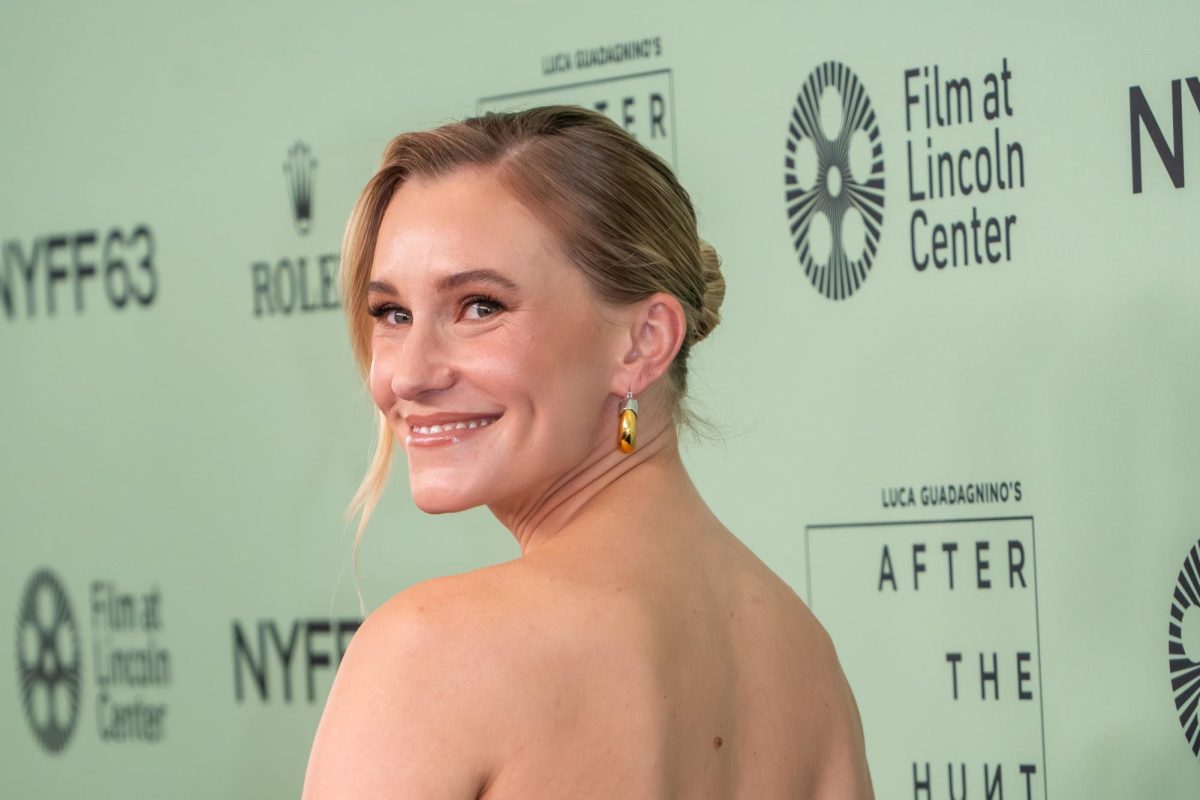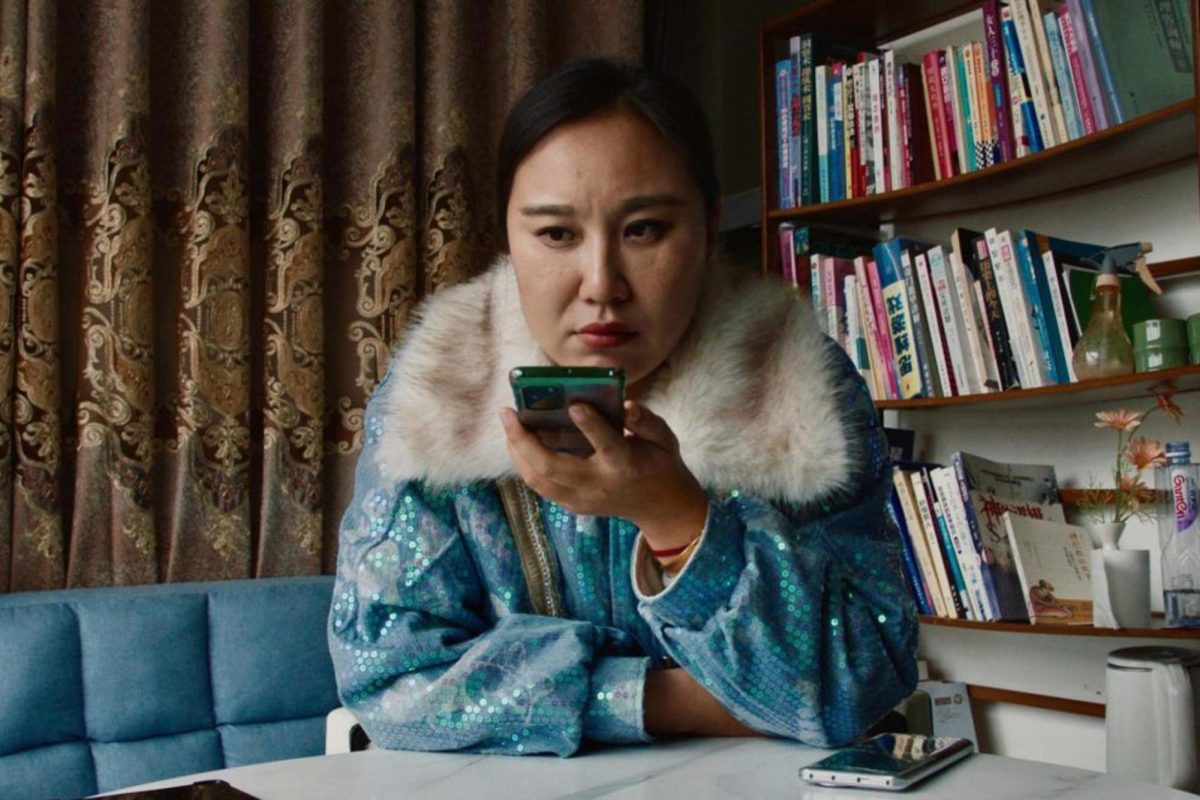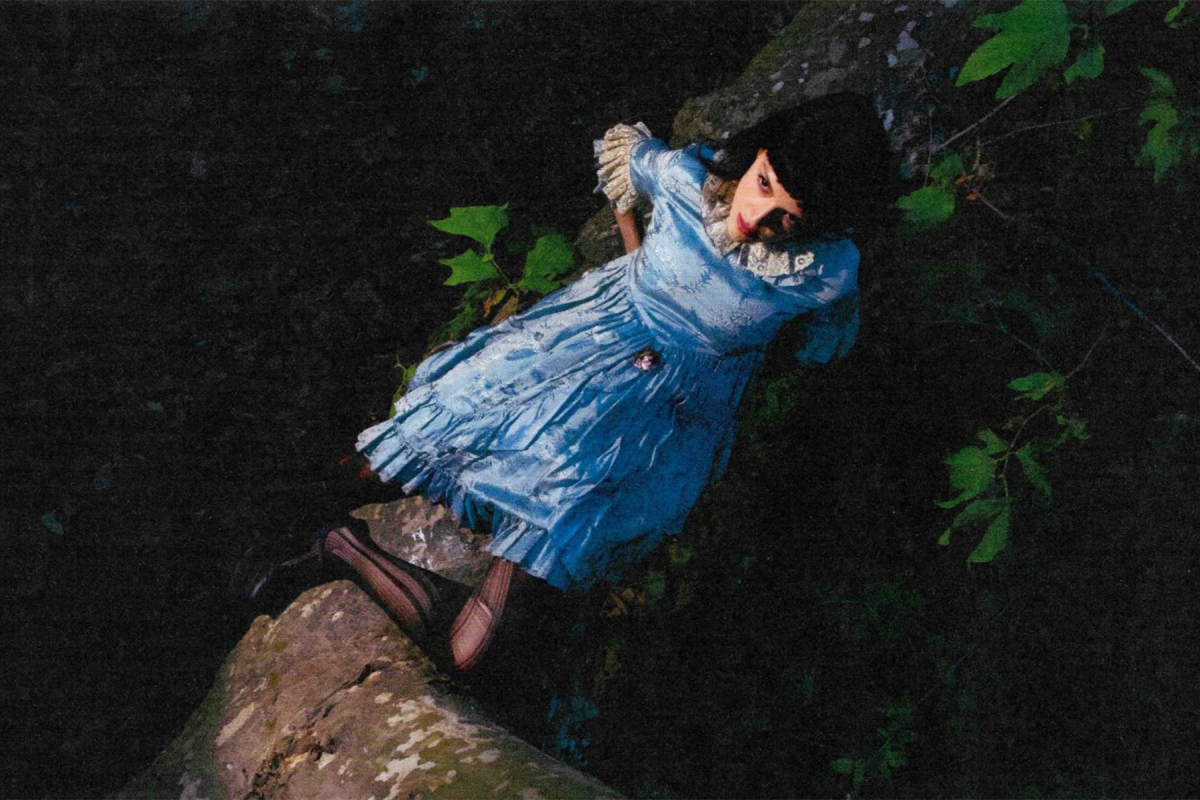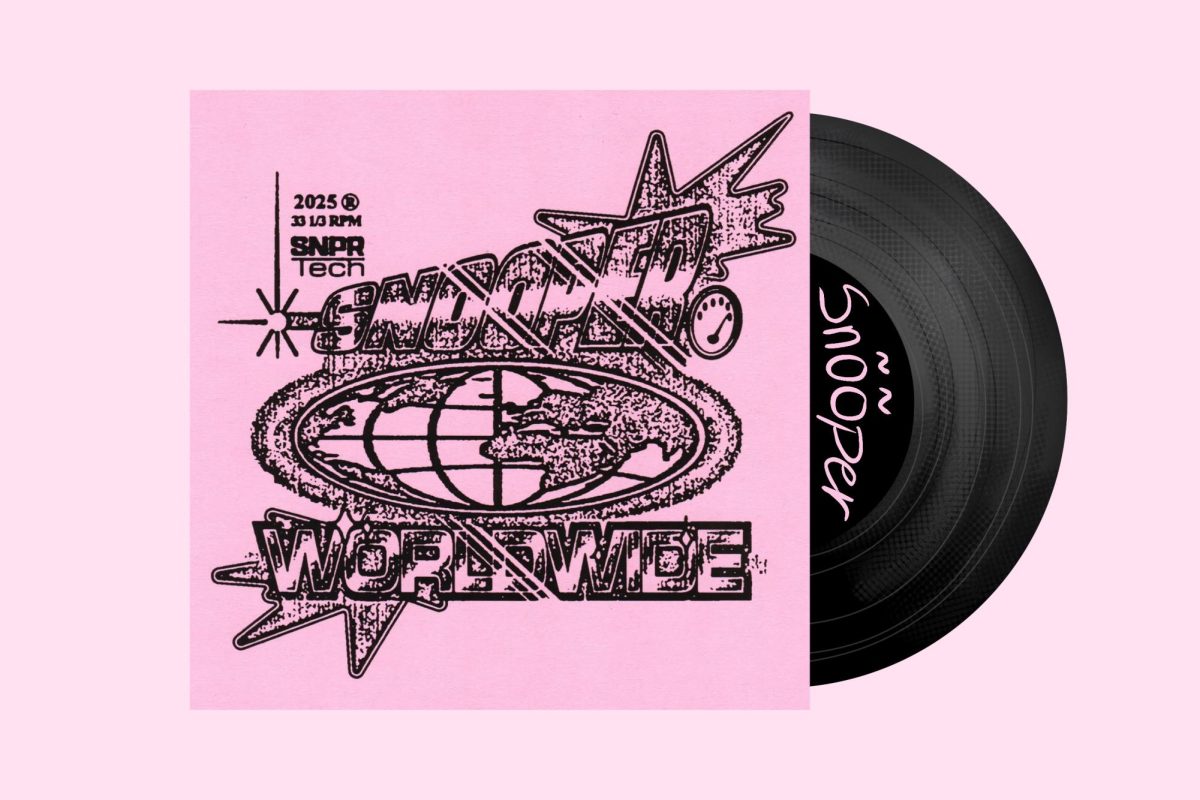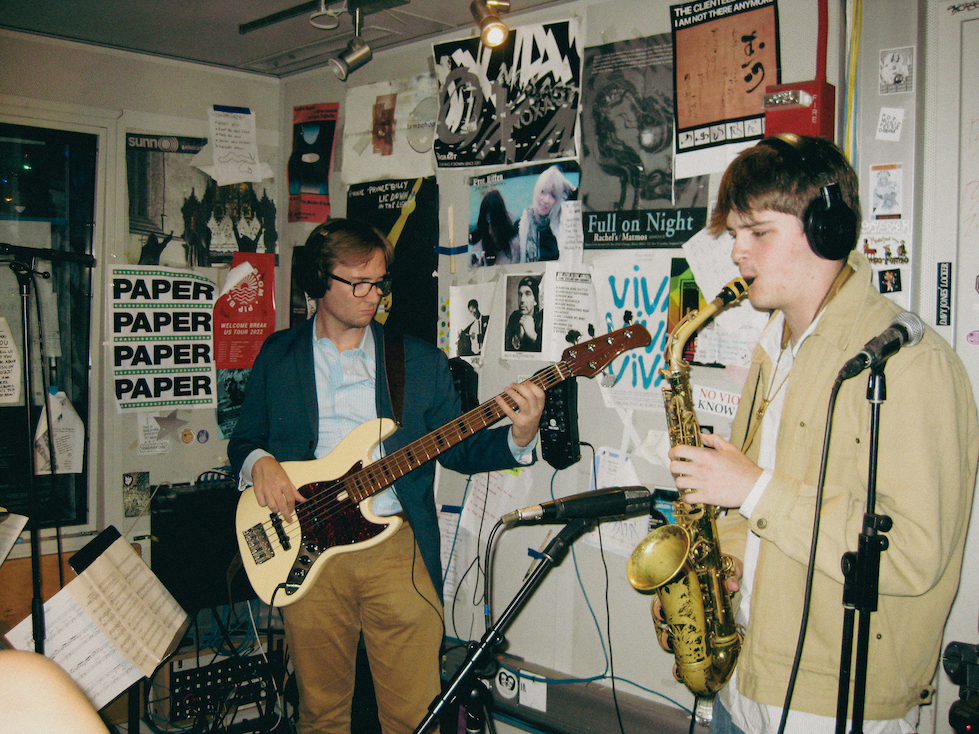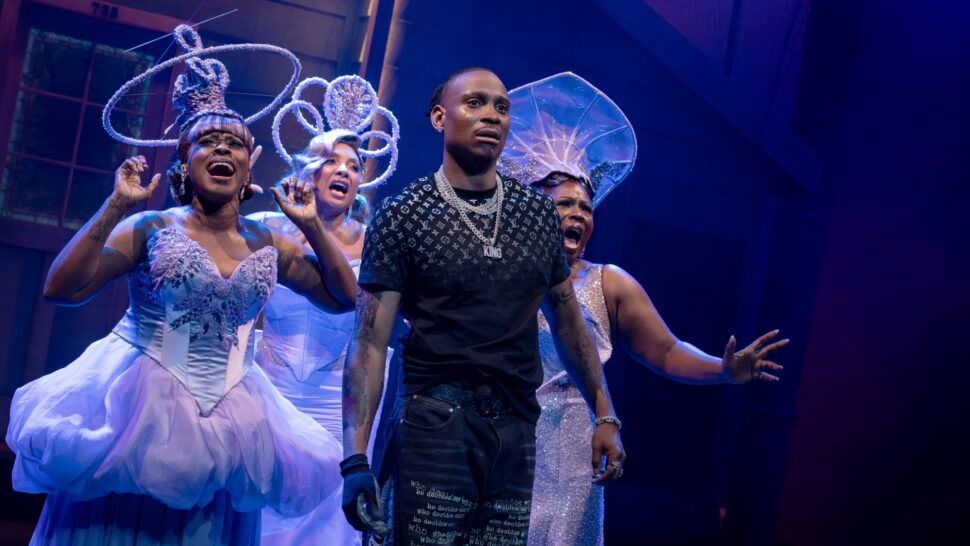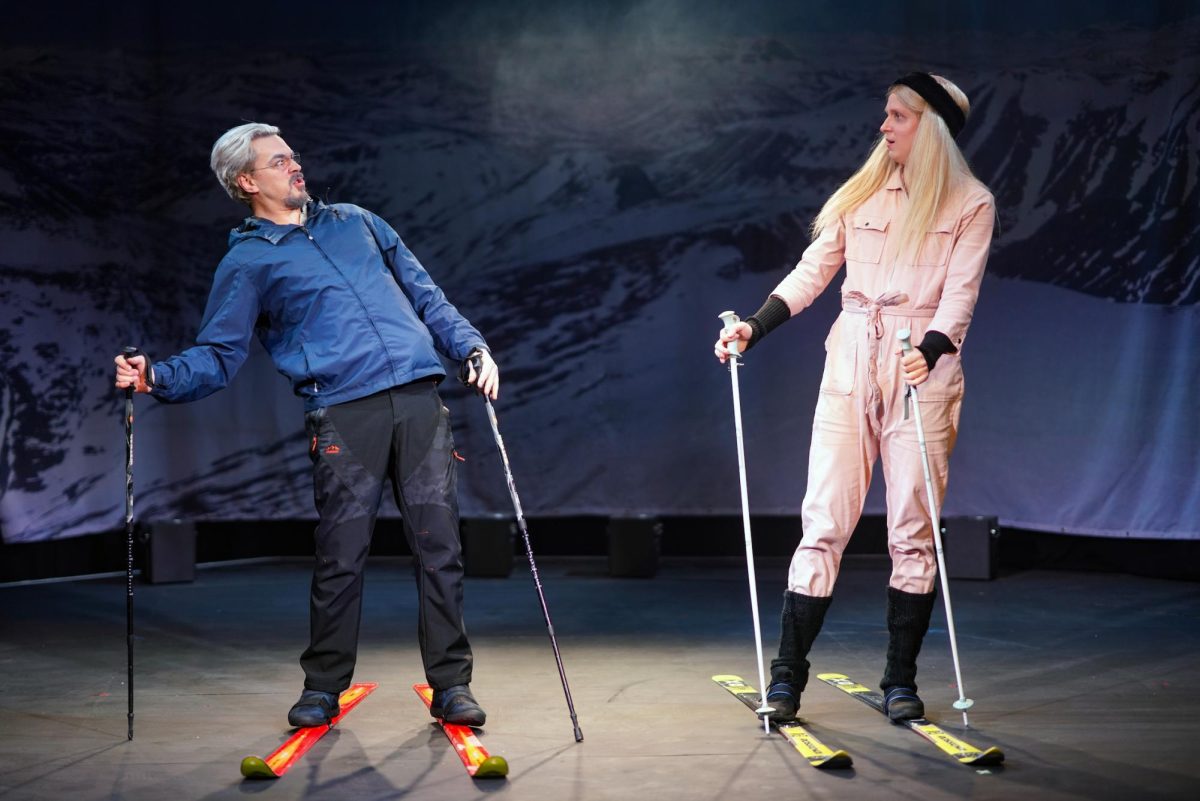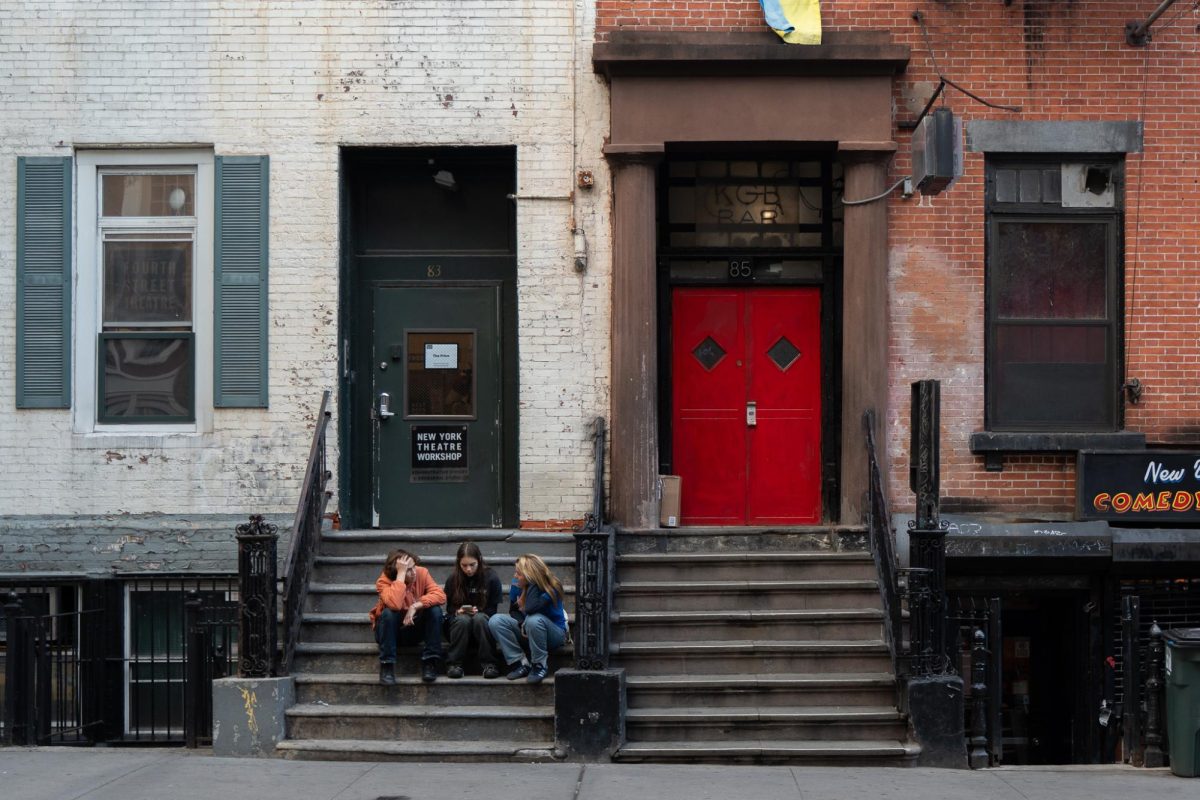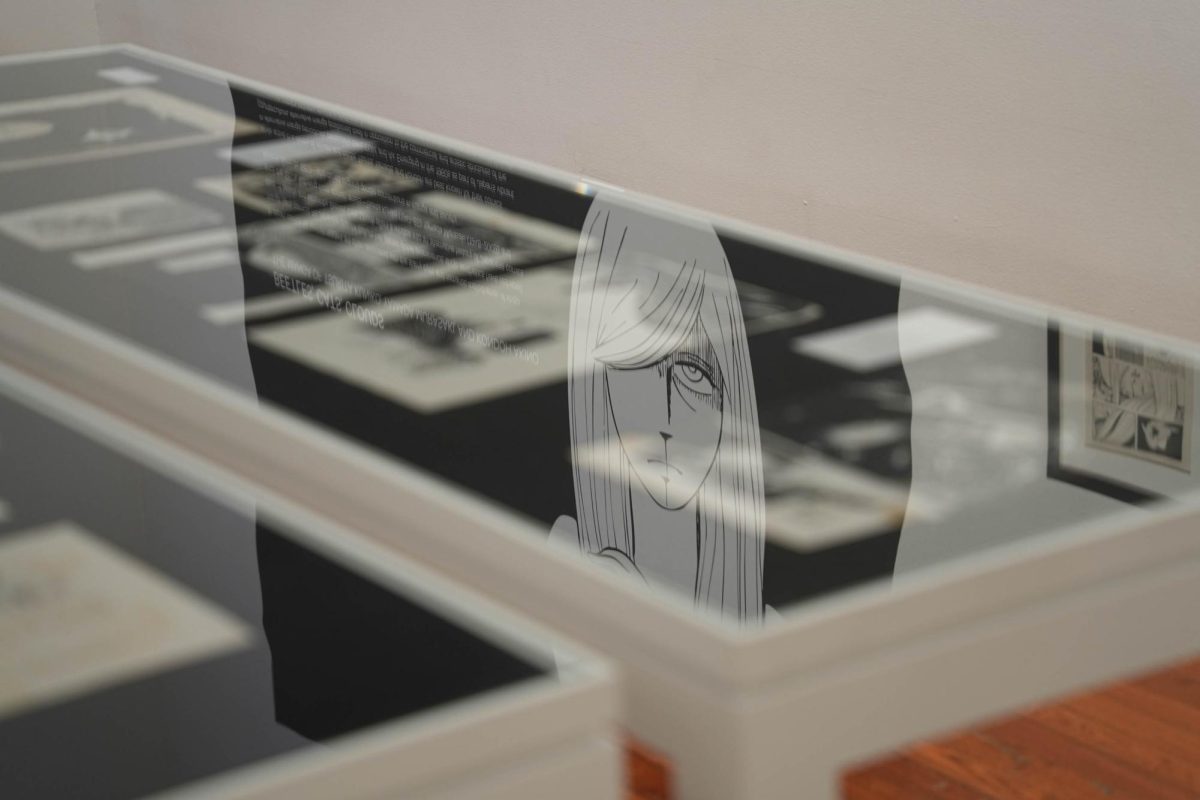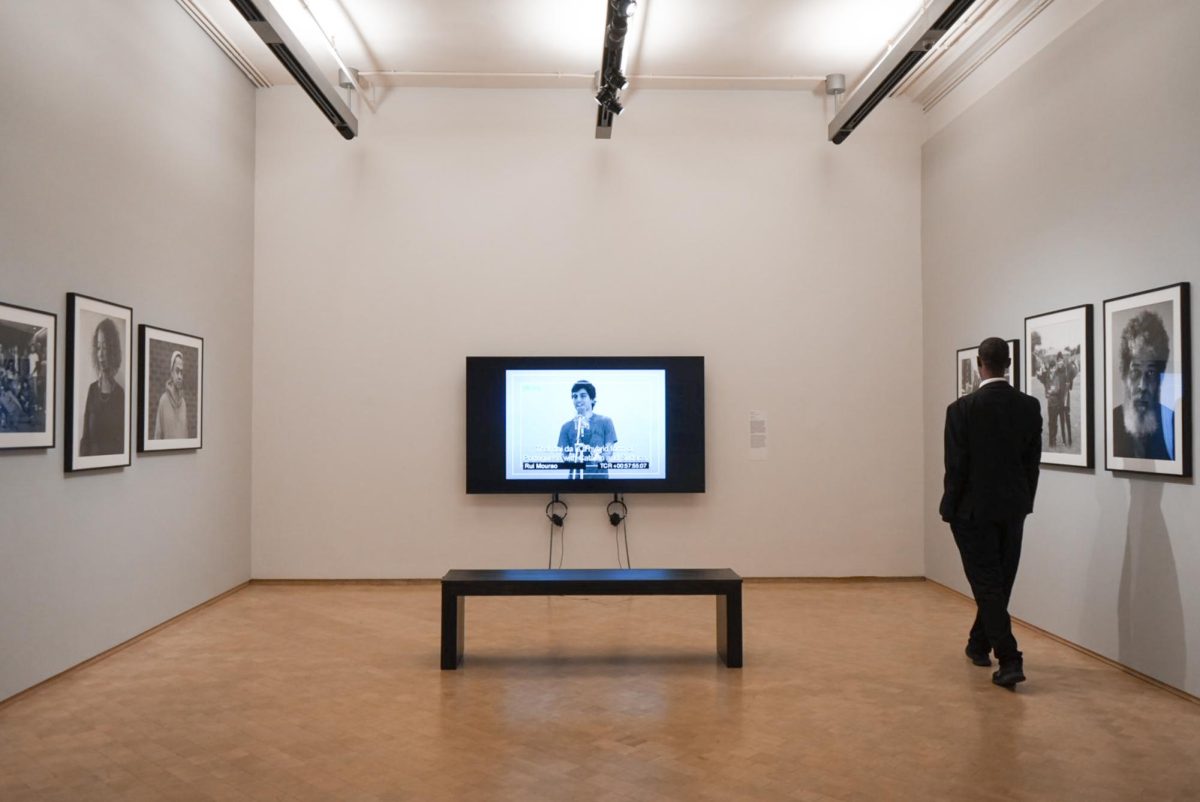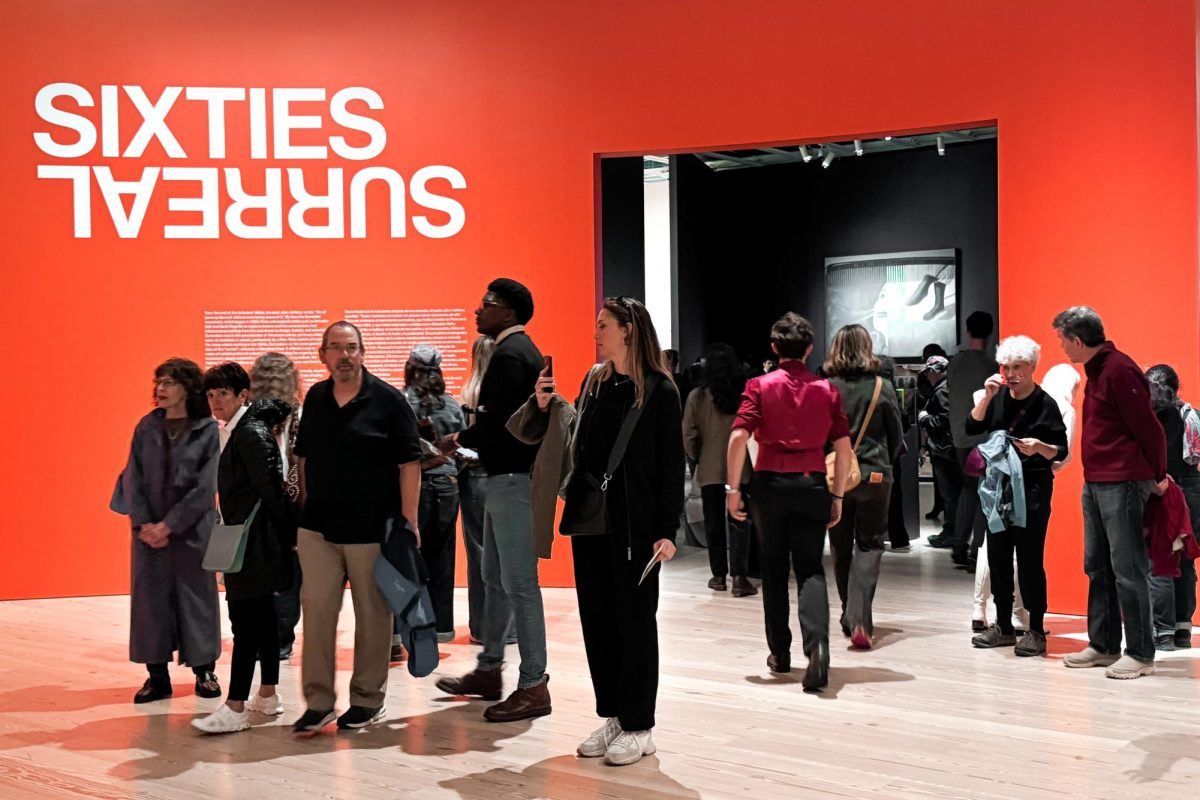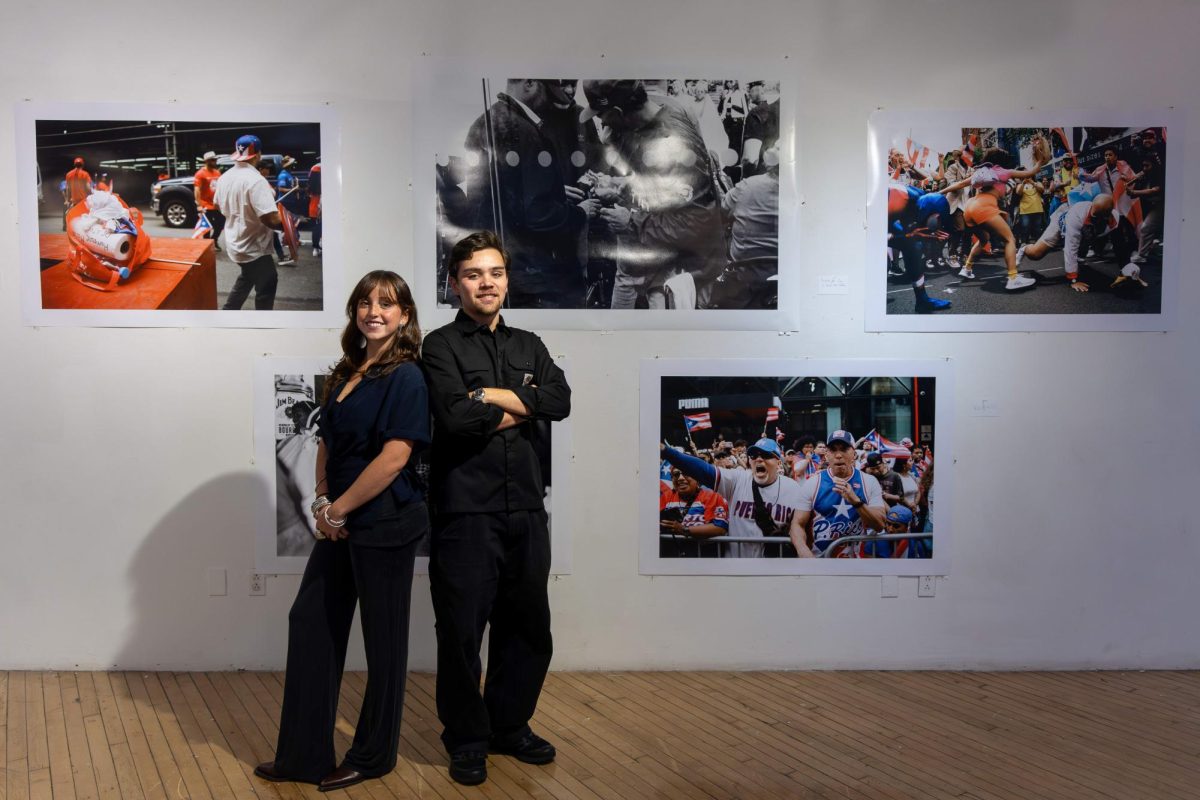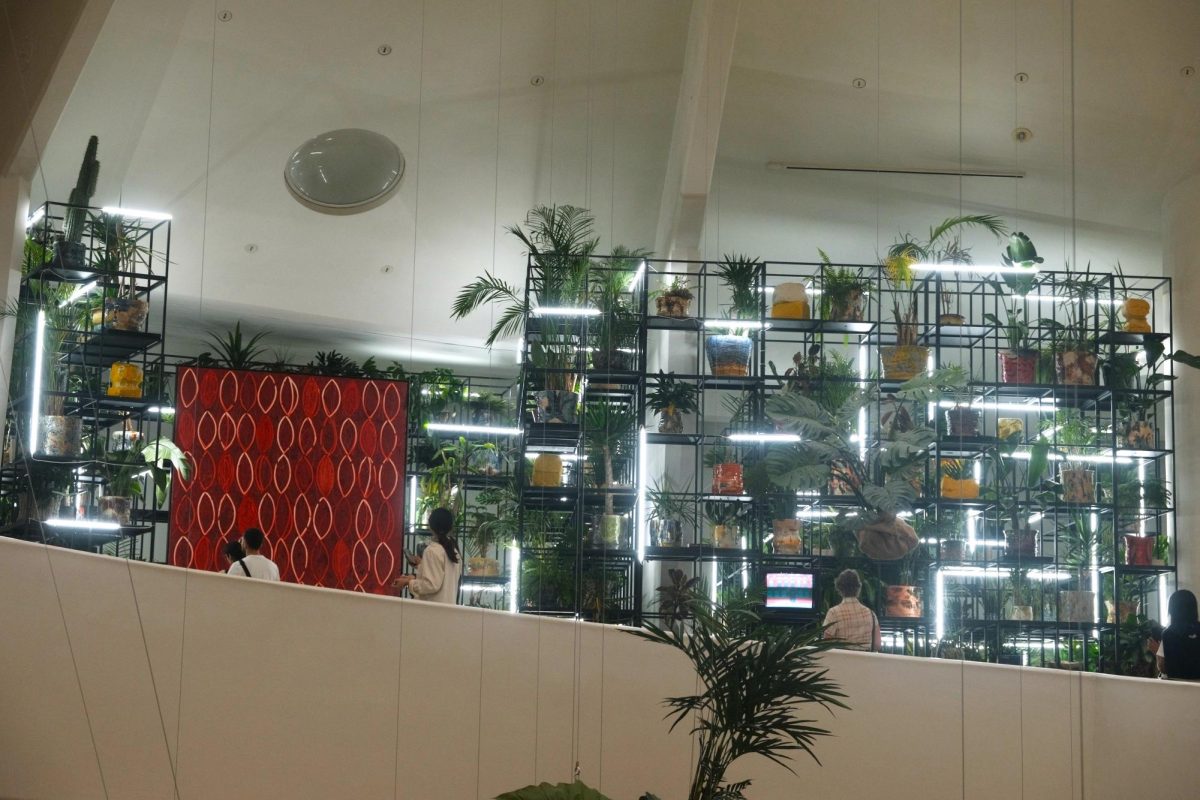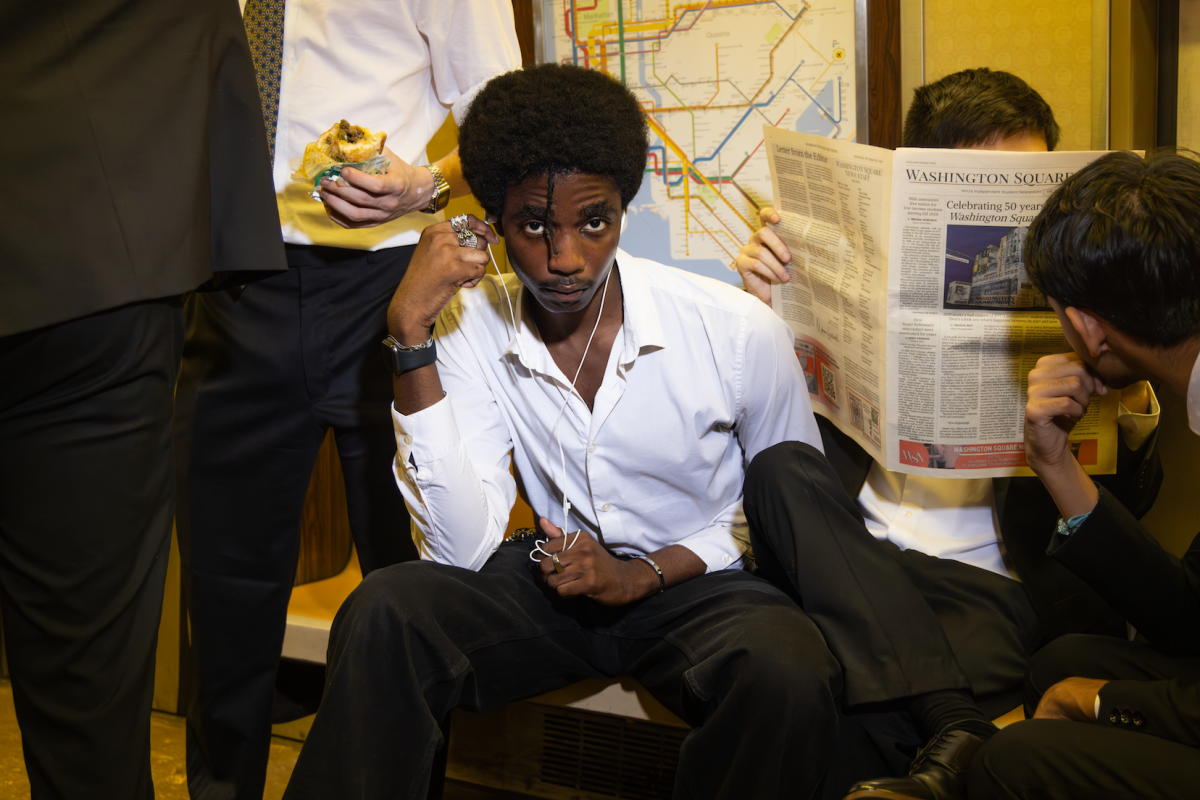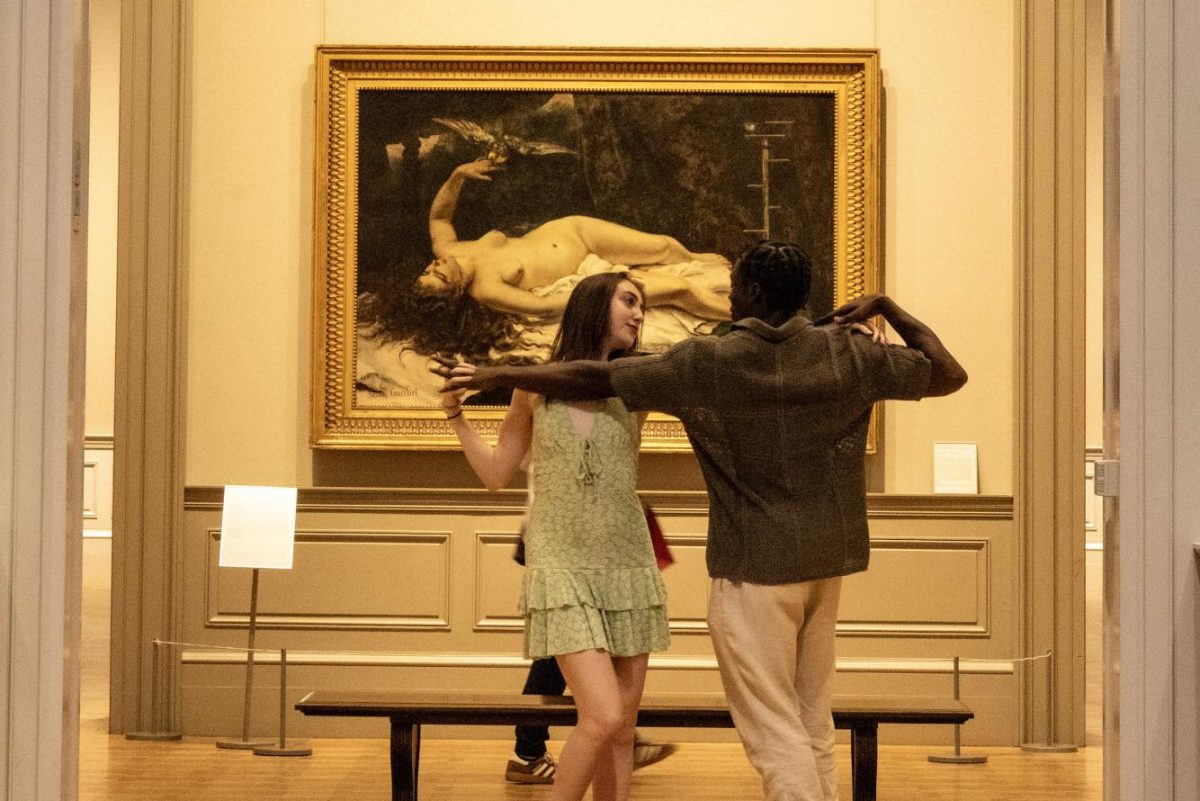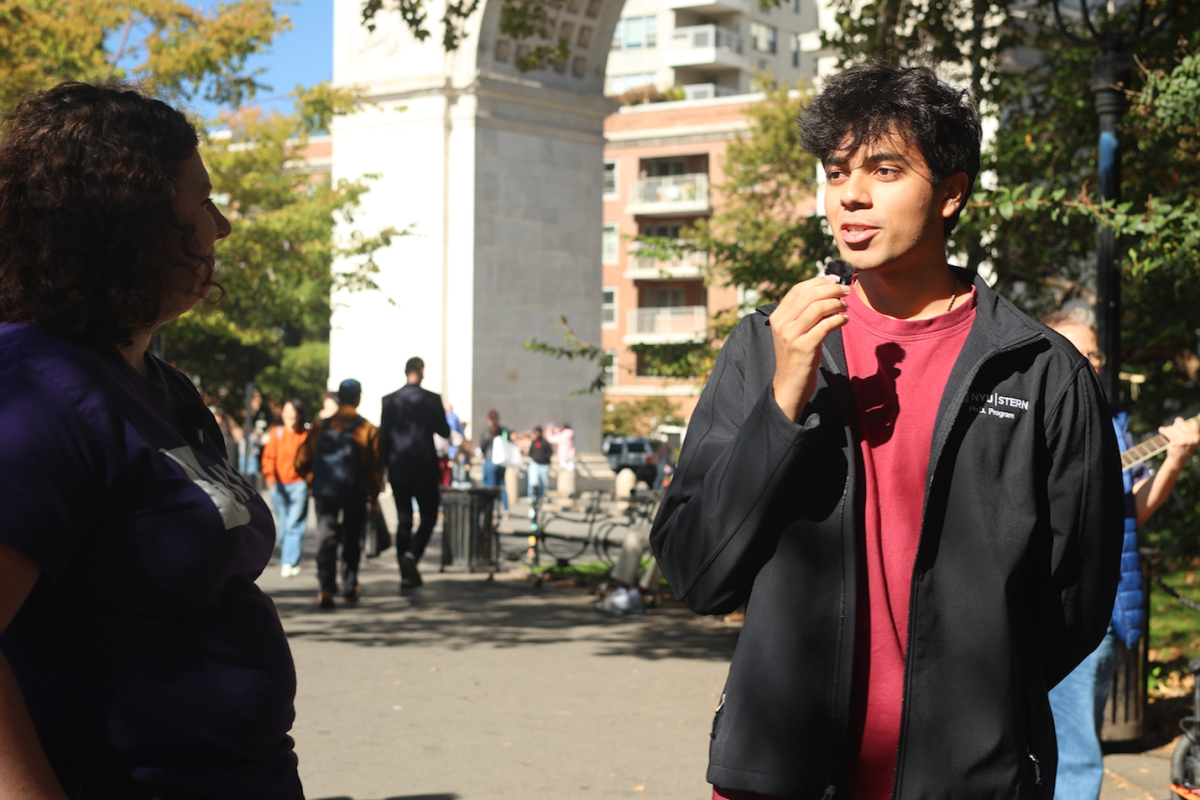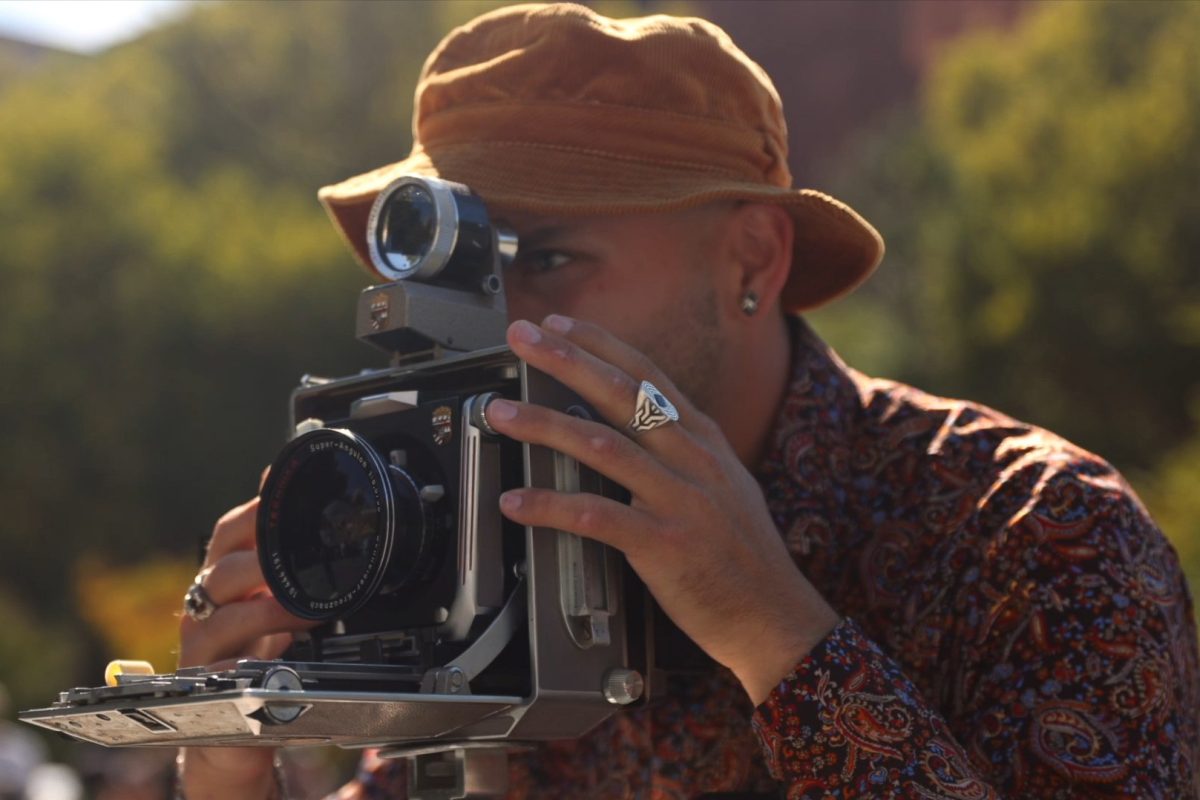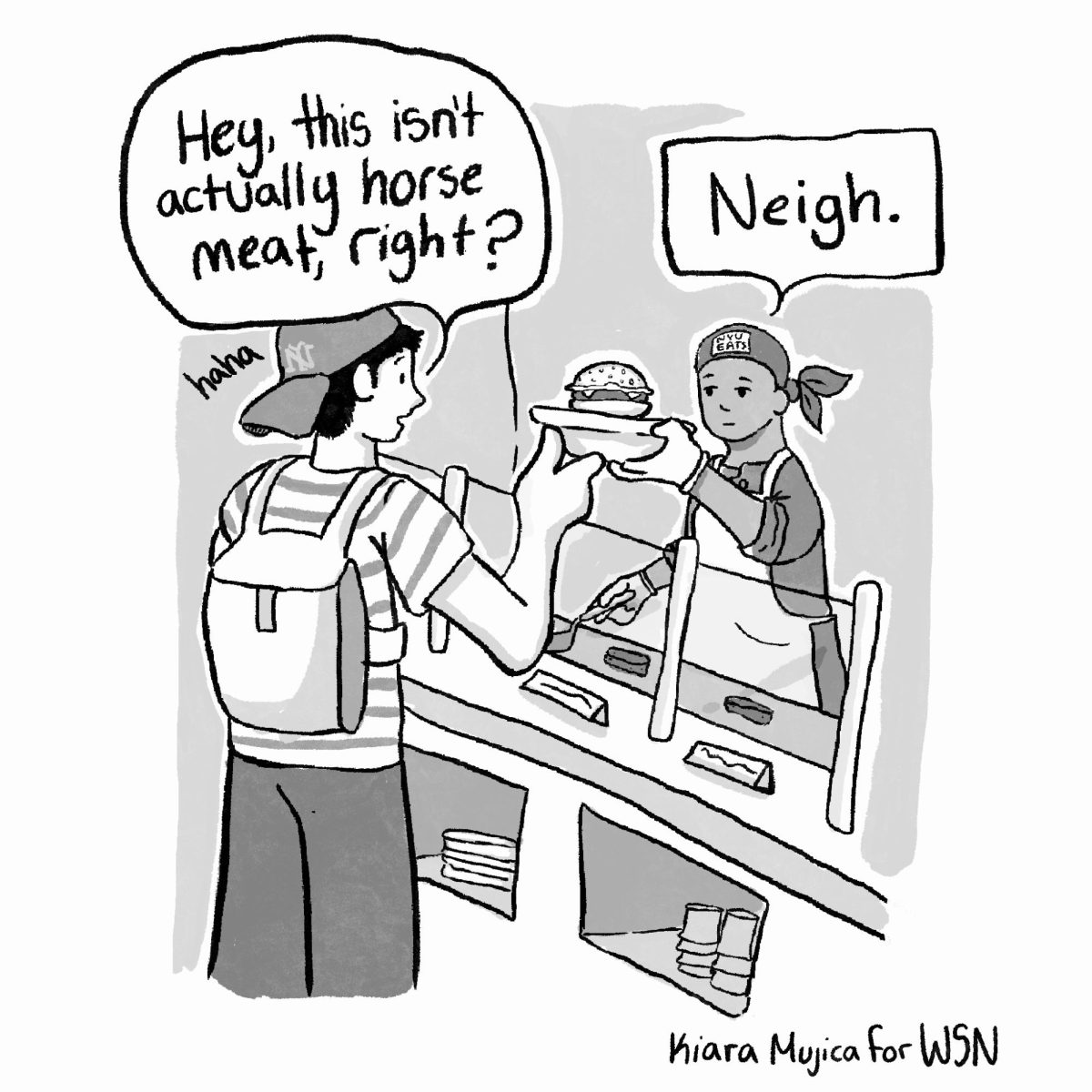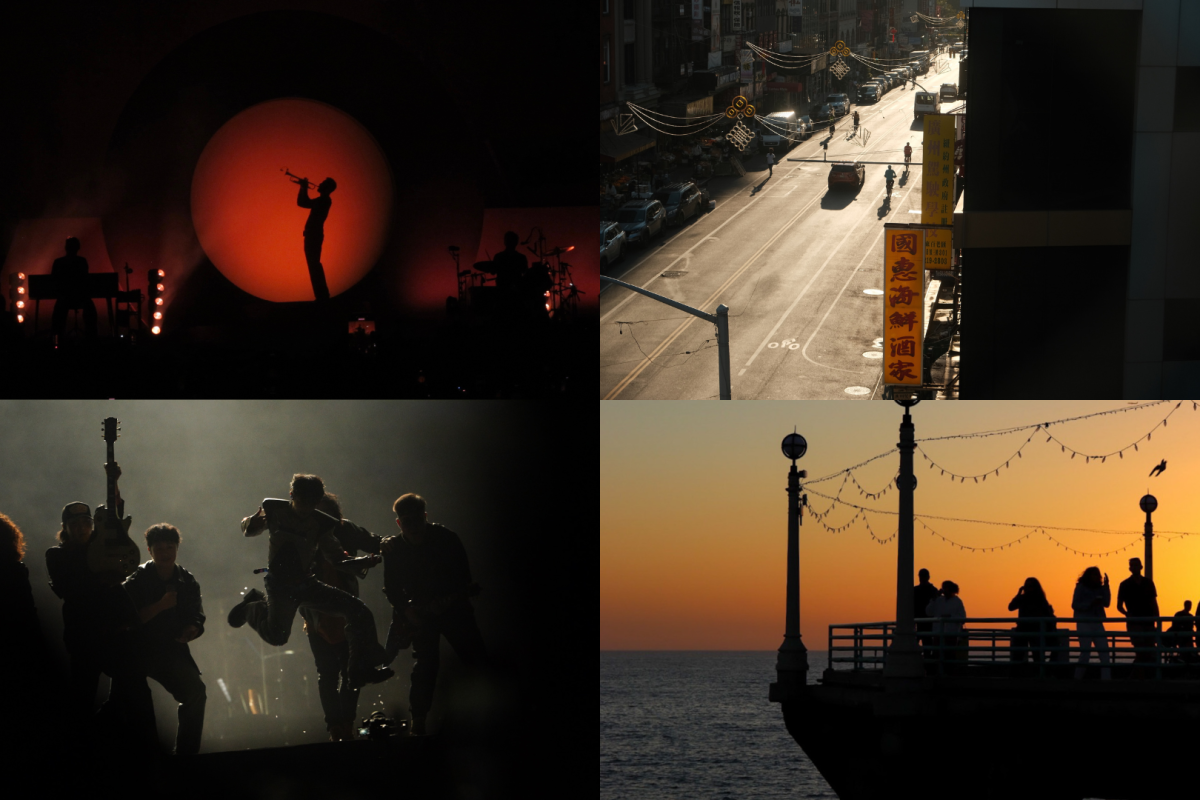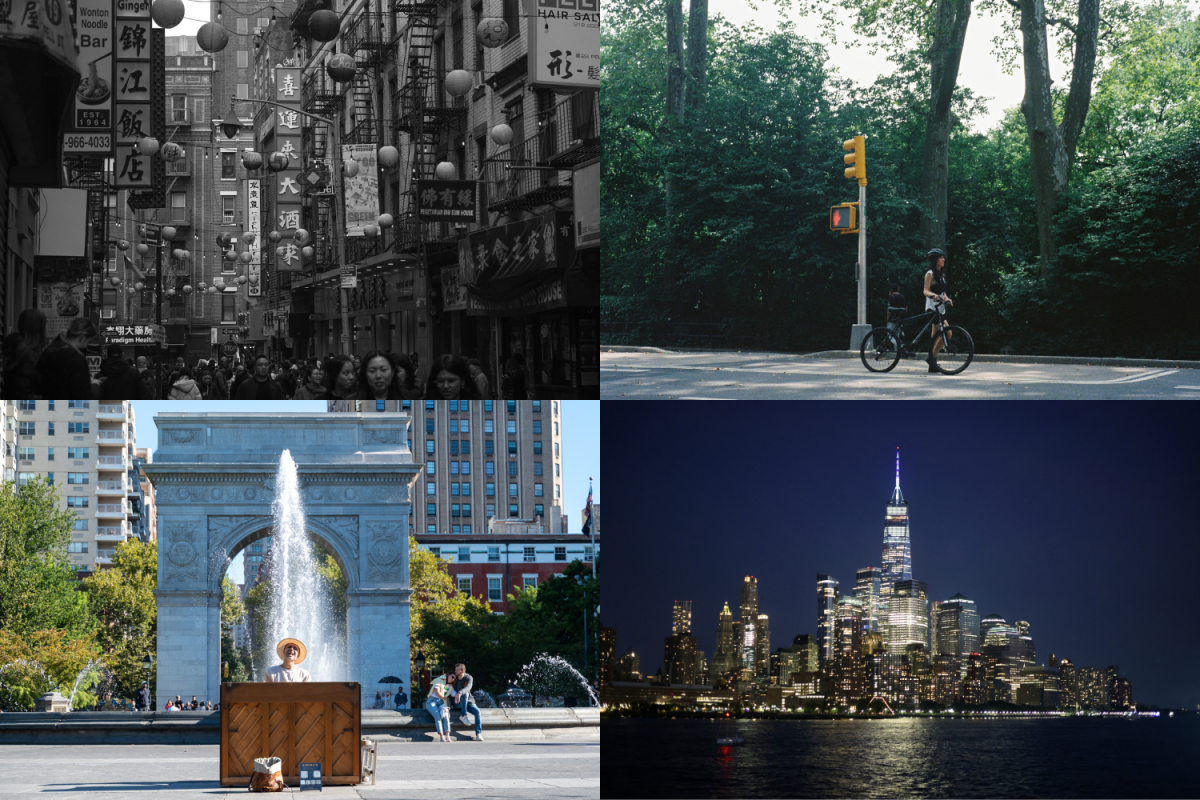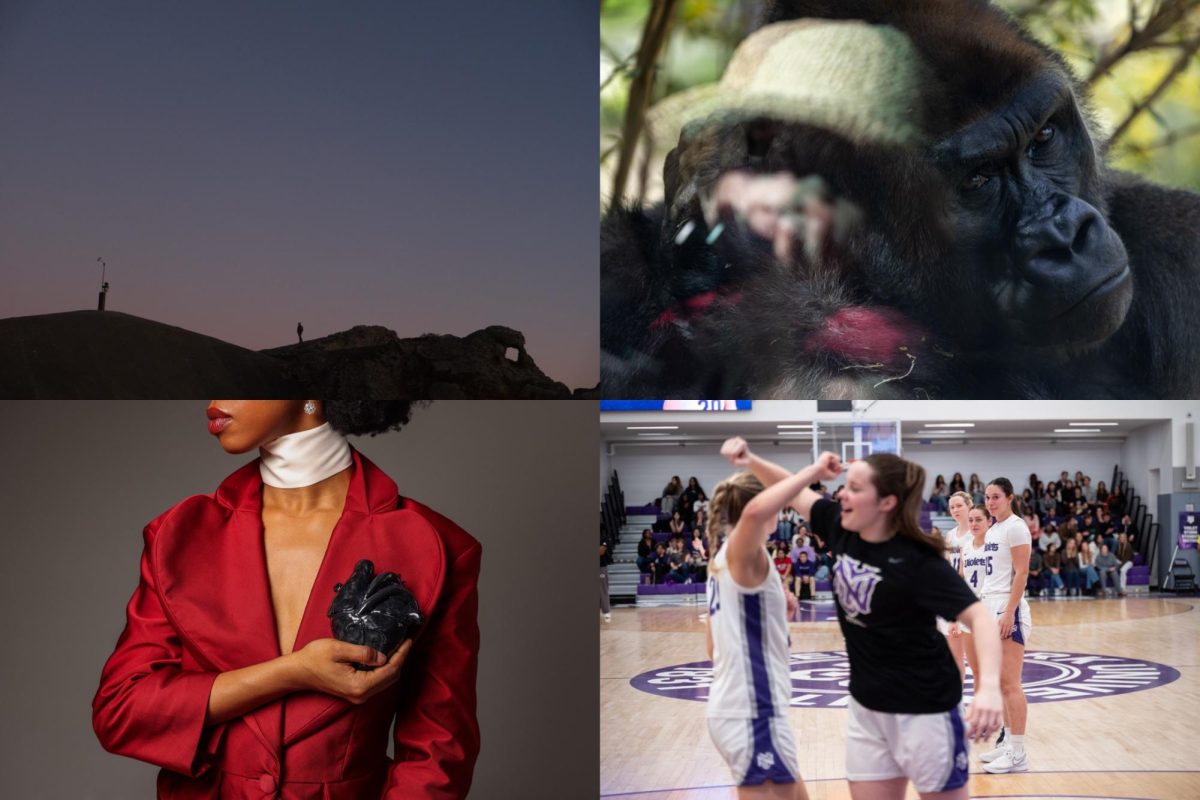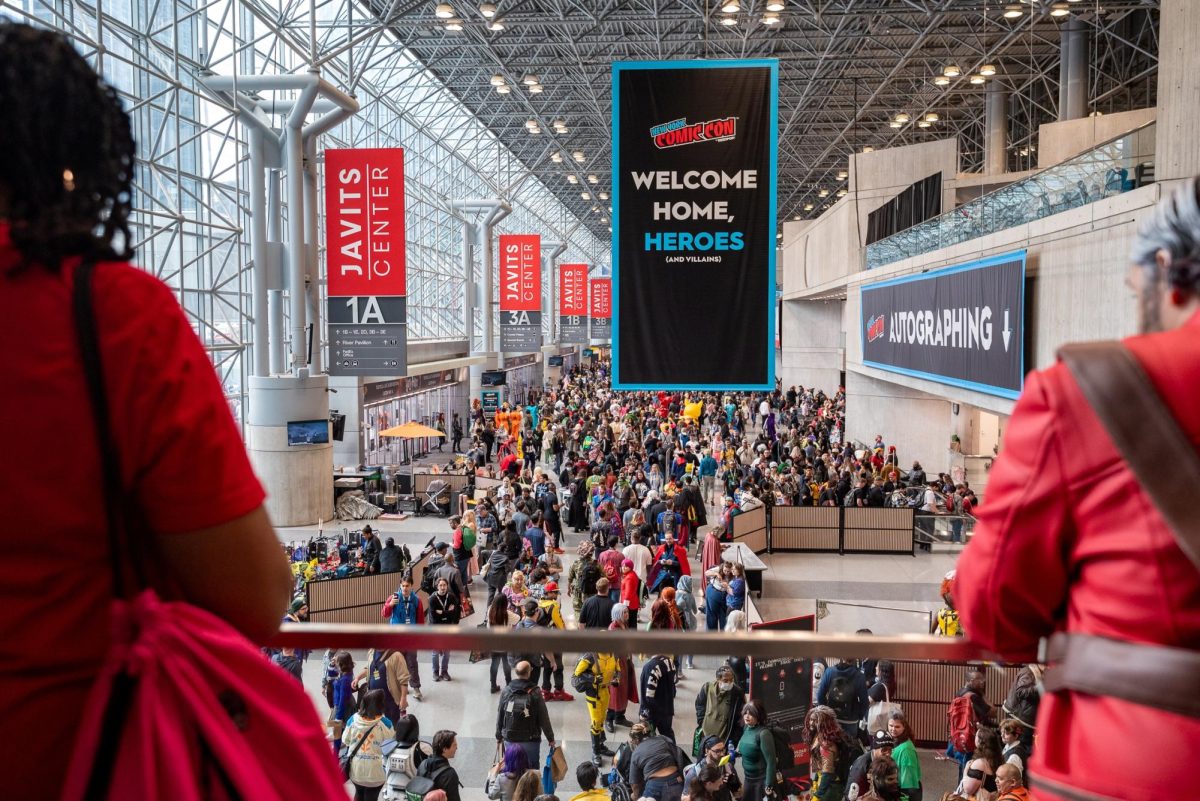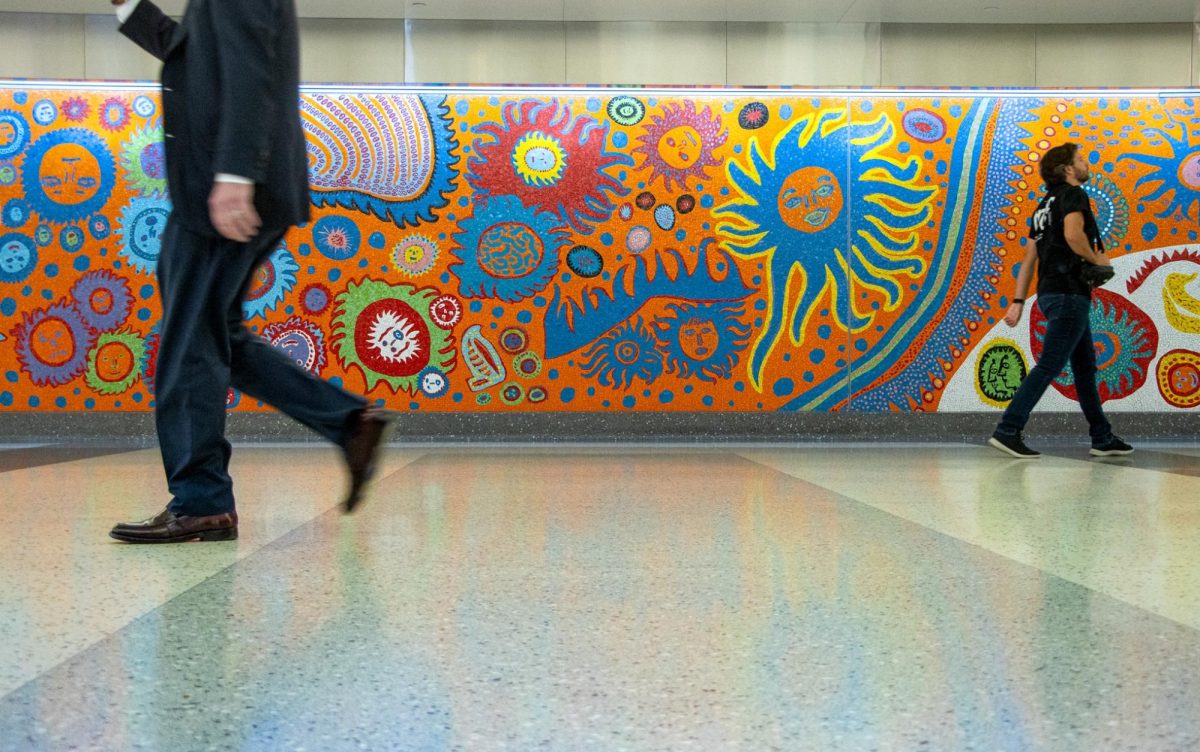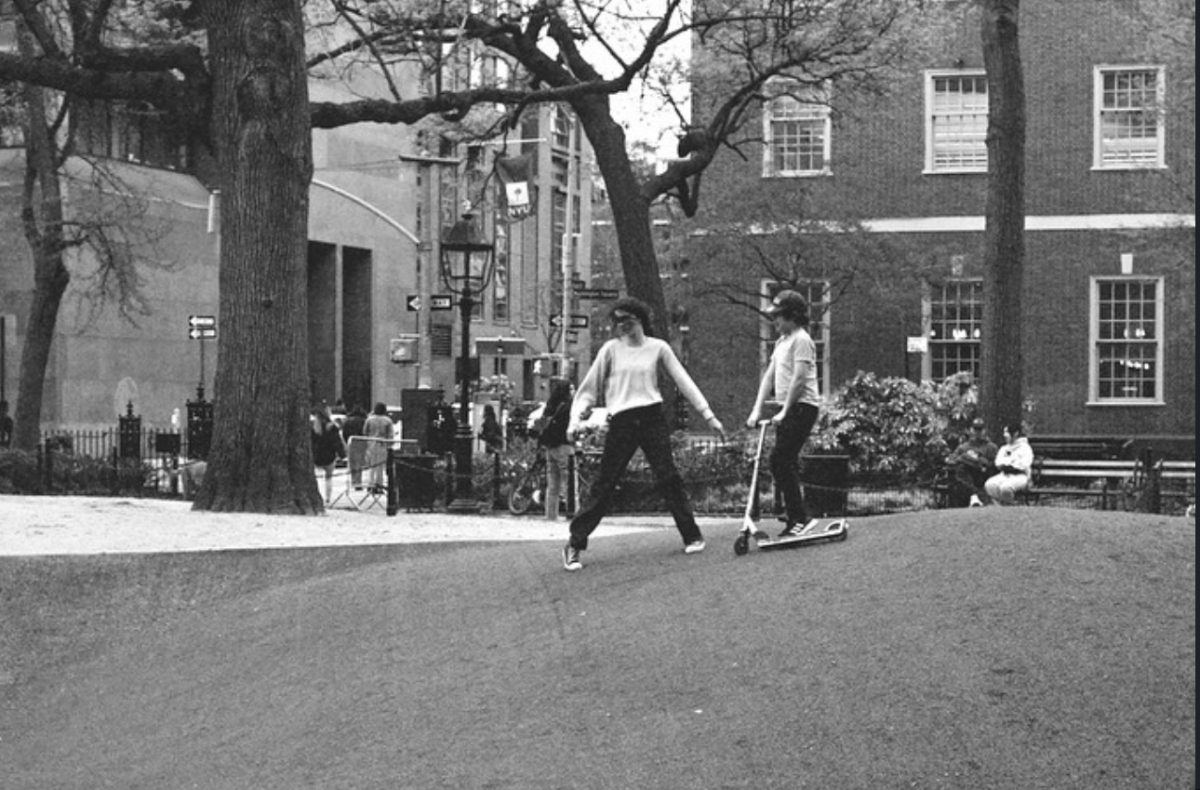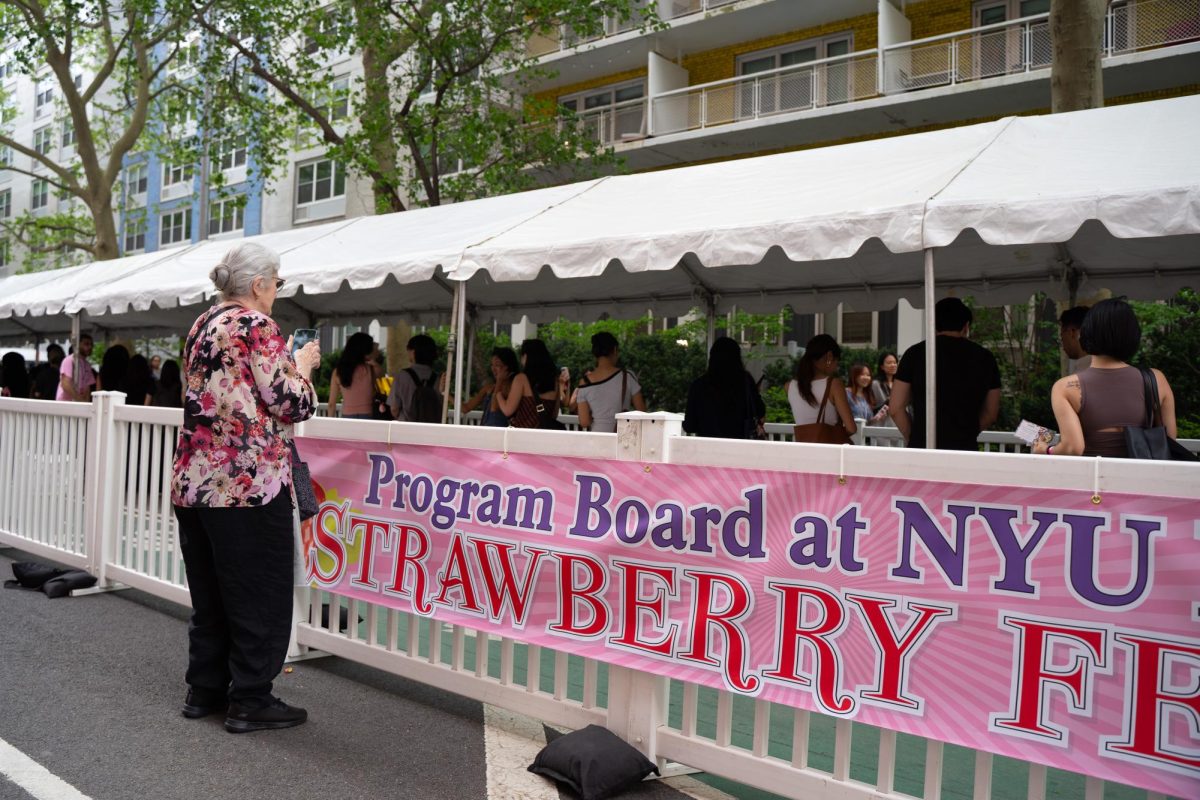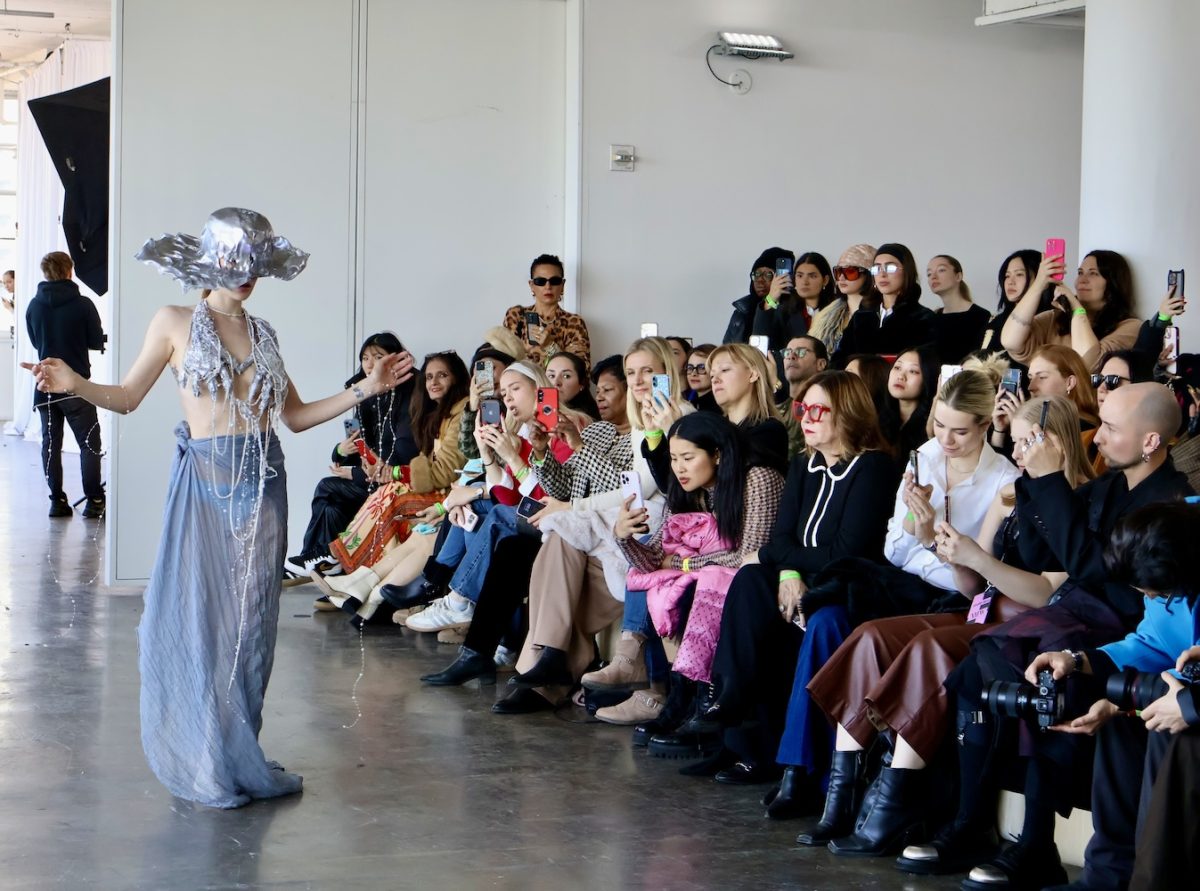Whenever it comes to a show by Flying Solo, it’s best to expect the unexpected. With house music bouncing off the white walls of Canoe Studios and a view of the Hudson River peeking through its windows, the fashion collective hosted its fourth show at New York Fashion Week on Feb. 7 with an eclectic mix of 13 rising designers from around the world who tested the boundaries of fashion on the concrete runway.
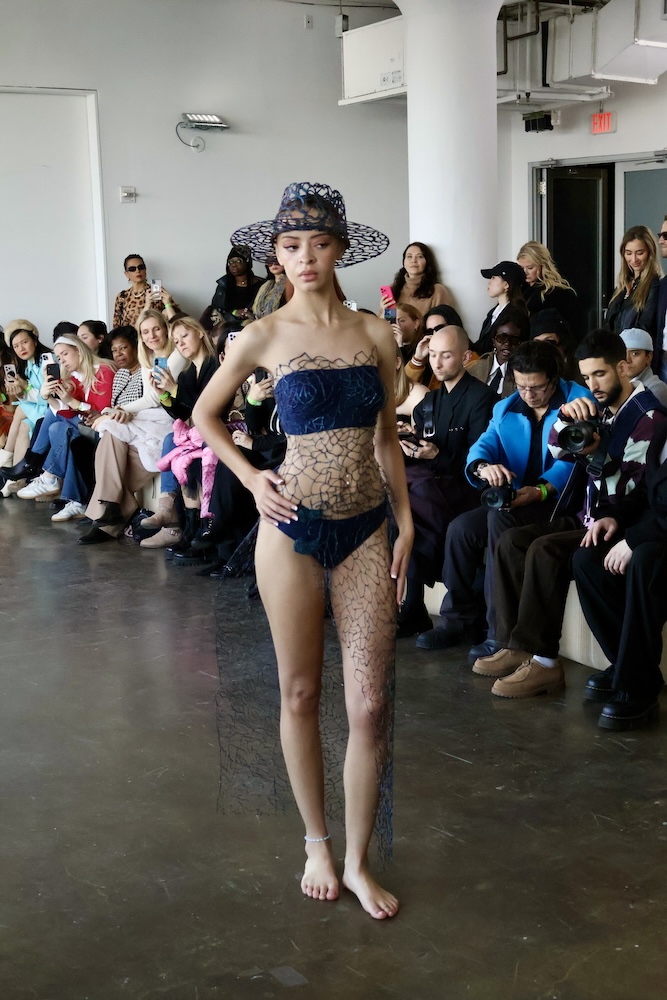
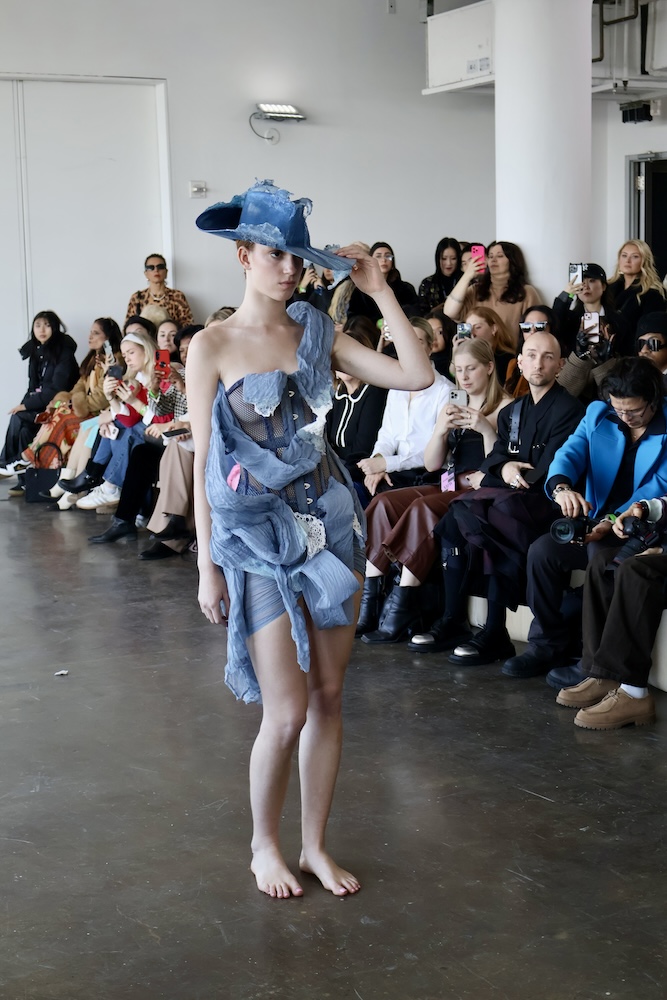
Flying Solo started holding runway shows for NYFW and Paris Fashion Week in 2016, with the explicit purpose of spotlighting independent designers looking to establish a name for themselves in the industry. One of these designers is Chelsea Edmonds, owner of Sadie James Hat Co. from Franklin, Tennessee. “The Journey of the Pearl” collection she debuted at Flying Solo encouraged audiences to engage with concepts of “rebirth, renewal, resurgence” through her fascinating manipulation of different materials. Her dark blue ensemble looked sculptural, constructed from blue wire that had been carefully knitted together to create a skeletal yet robust frame of a wide-brim hat and sleeveless dress that mimics coral. Similarly, Edmonds elevated a light blue fishnet corset with streams of blue fabric that mimicked the shape of ocean waves — adorned with scraps of light blue and white lace that simulated the foam that arises from the crash of water.
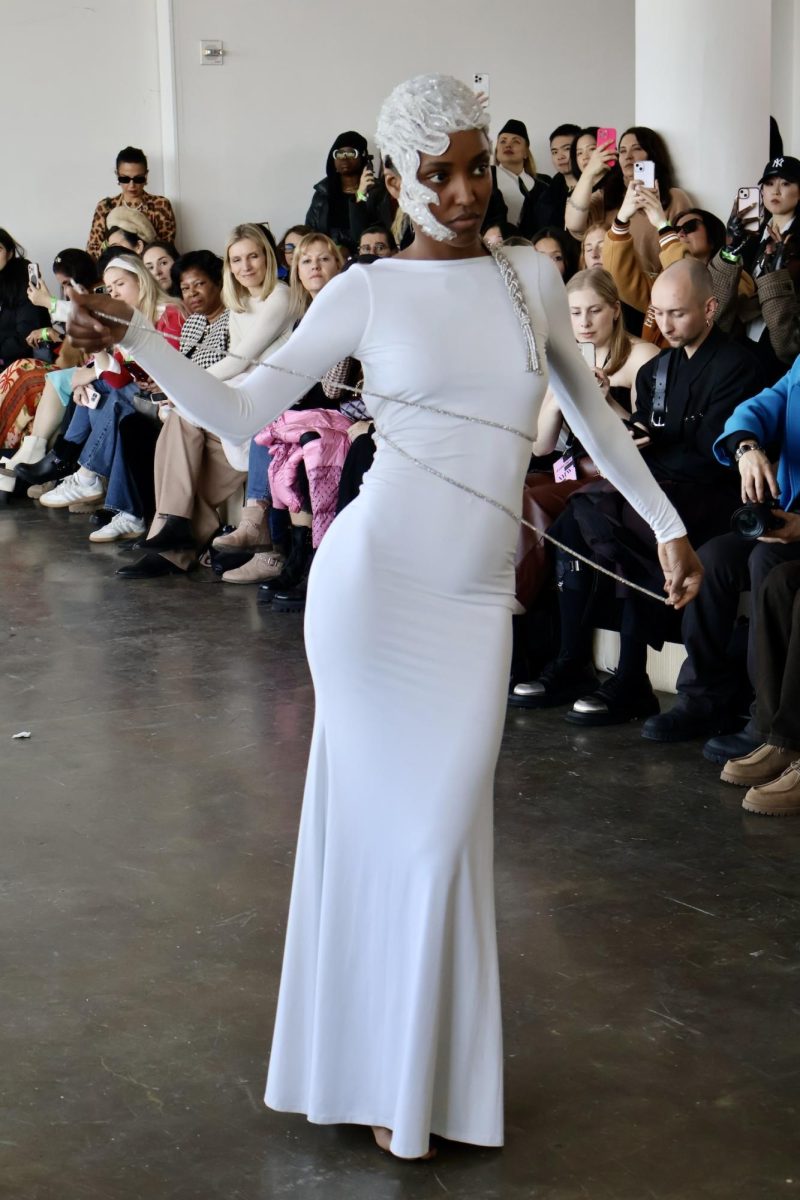
Of course — as a fashion designer who specializes in headwear — Edmonds’ collection was defined by a stunning silver headpiece resembling a swim cap. Decorated with rivets of beaded glass, plastic and silver metal, the cap began as a long braid of sparkling silver rope at the back of the head before it wrapped the model’s entire scalp and the left side of their face in a caress reminiscent of the movement of seaweed.
Immediately following Sadie James Hat Co. was Viktoria Marchev, a New York-based Hungarian designer known for manipulating silicone rubber into sci-fi-inspired clothing. Each of her pieces were defined by silicone thorns that poked out of stockings, skirts and shawls, and while the use of different shades of silicone was extremely provoking, Marchev’s vision fell largely in terms of their minute details. One of her designs featured a silicone shawl and a checkerboard skirt that struggled to make an impact due to the haphazard application of silver paint on the fabric and the rough and ragged cuts that marked the silicone’s edges.
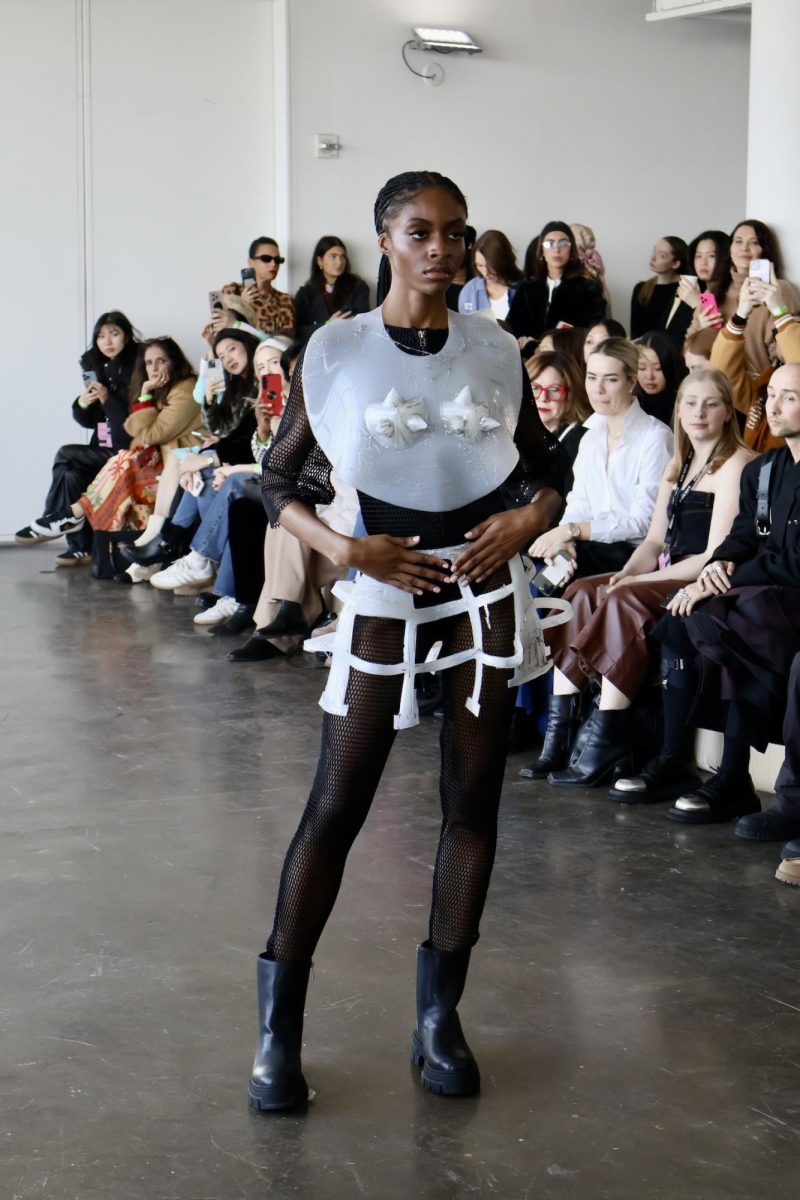
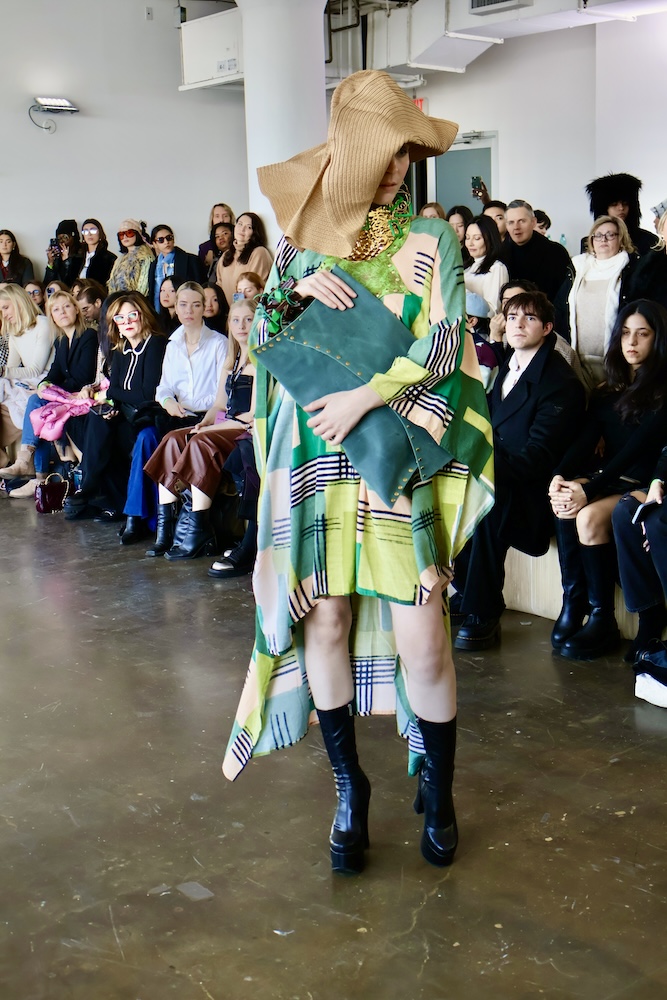
Similar to Edmonds, designer Xantha Ward from Columbus, Ohio creatively experimented with shape through her consistent use of bold patterns and extravagant size. Ward featured mainly colorful, free-flowing dresses in her collection, which covered the entirety of the models’ upper bodies and were accompanied by chunky earrings, a torso-length leather chest piece and an expansive sun hat contorted by folds.
Even without employing bright colors, Ward demanded the audience’s attention solely with the sheer volume of her designs. Her short black dress in particular incorporated large rolls of black fabric layered upon one another and wide tufts of what looked like white tulle that almost consumed the model’s neck and wrists. The look also featured a woven leather bag with a dagger-like silver handle and a striking red stripe across the center.
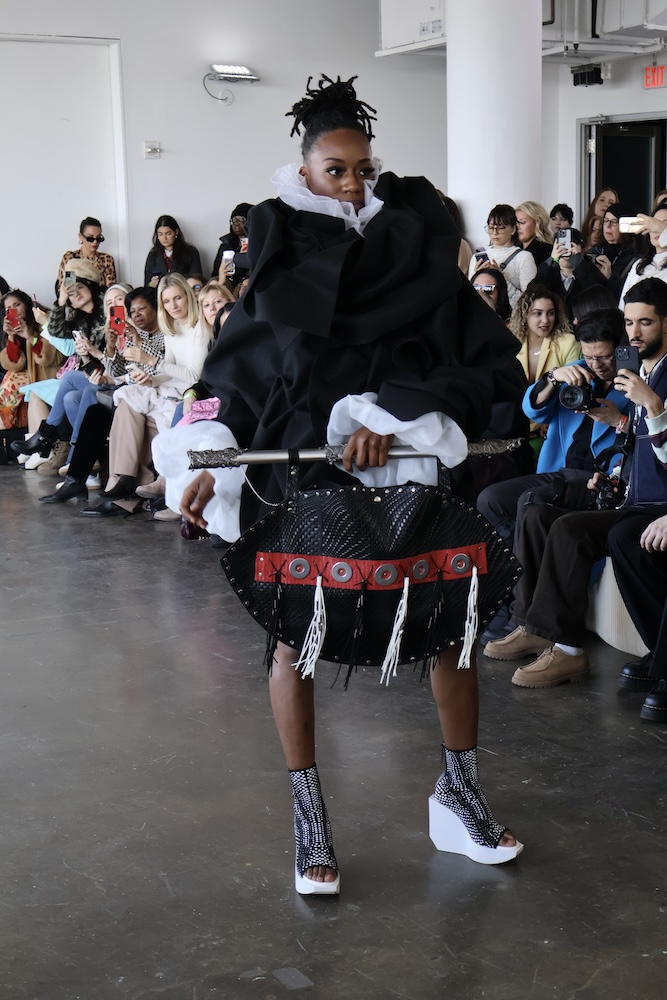
Designer Davis Hong, in contrast, thrived in the deceptively simple. Based in Salt Lake City, Utah, Hong specializes in genderless clothing that combines “modern details with traditional craftsmanship.” His color palette was strictly limited to black and white, and variations of a button-up served as the base of all of his designs. By establishing a simple foundation, Hong was able to experiment with creative geometric designs. Over a white button-up and black knee-length pleated skirt, a model wore an asymmetrical black piece that formed a torso-length crescent shape on their right side but was draped past their skirt as a rectangular robe on their left. Similarly, Hong constructed a black coat that curiously arched from behind the sleeves in the shape of wings — layered over a white button-up, black pants and a half-cut skirt tied around the waist.
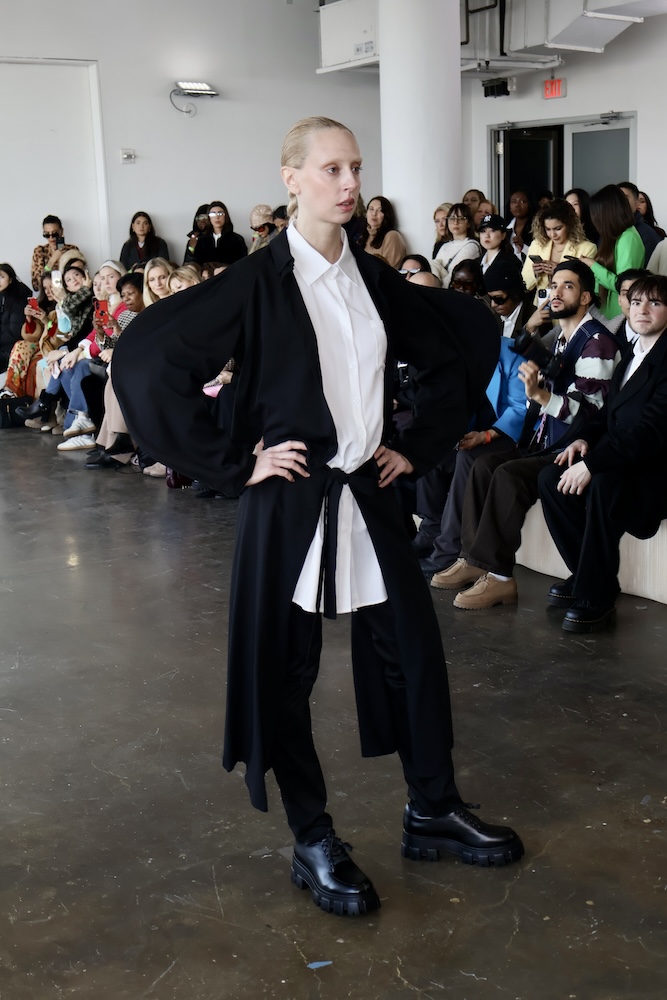
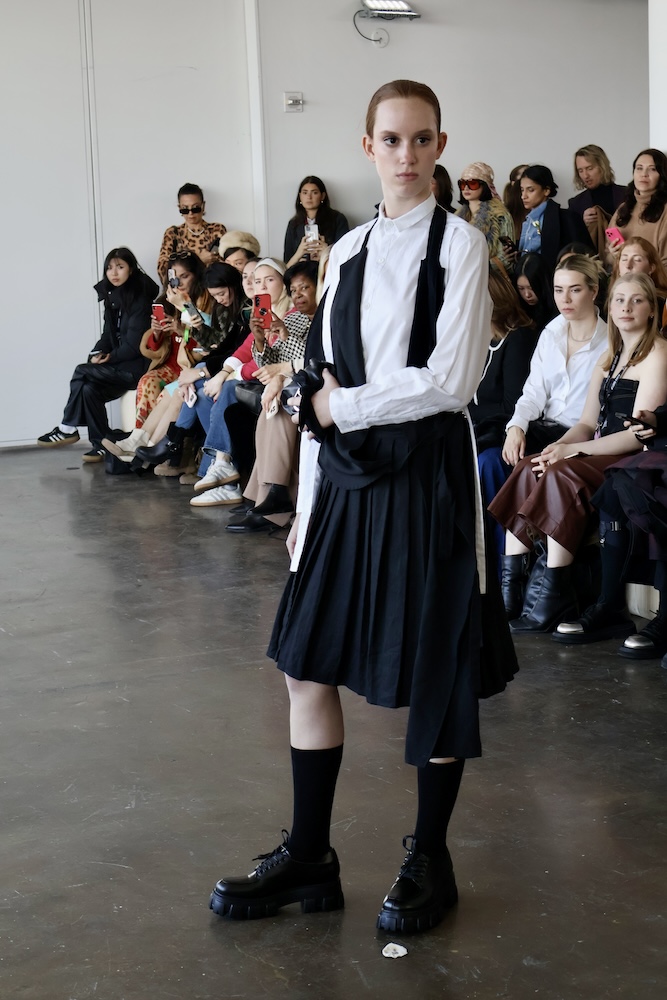
The show did struggle organizationally — with slight chaos and marked abruptness defining the show’s start and end. In addition, the monotonous house music that played for its entire duration proved to be overshadowing, muddling the unique visions of each of the designers into one another. However, the ingenuity of the designs themselves were enough to enrapture audiences in silence once the models hit the runway. Through their original and personalized approaches to design, Flying Solo’s independent designers contributed to an expansive outlook into fashion.
Contact Julia Kim at [email protected].

